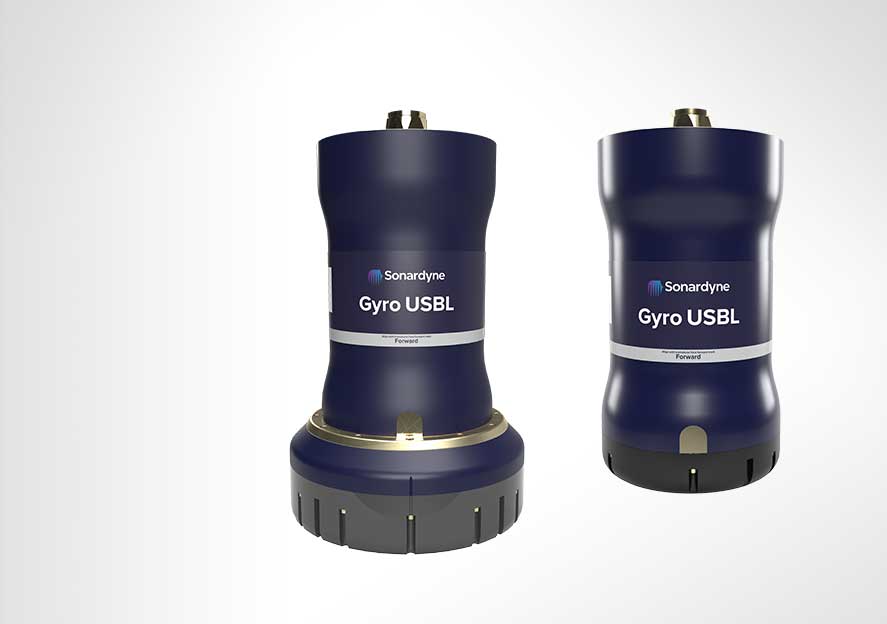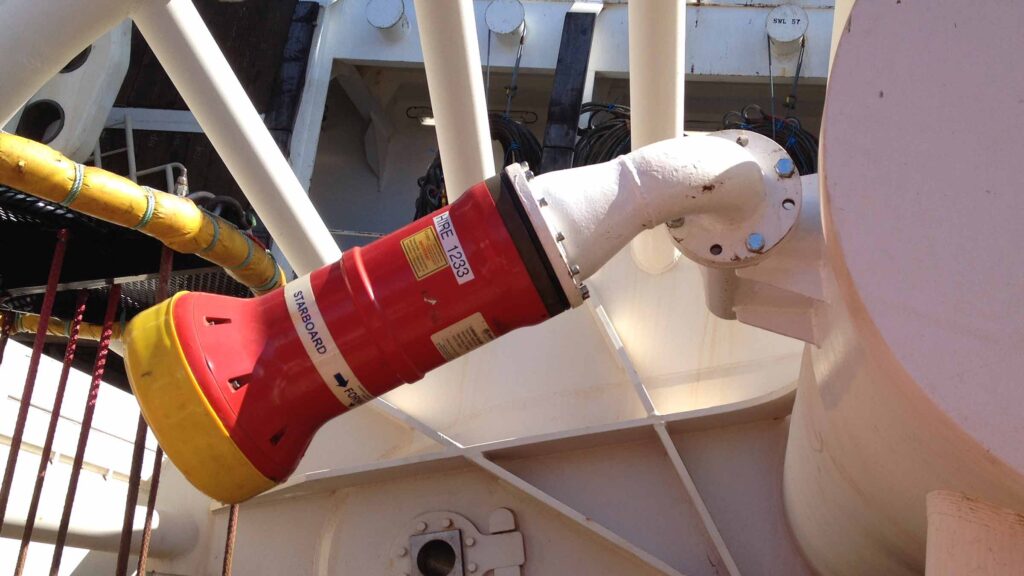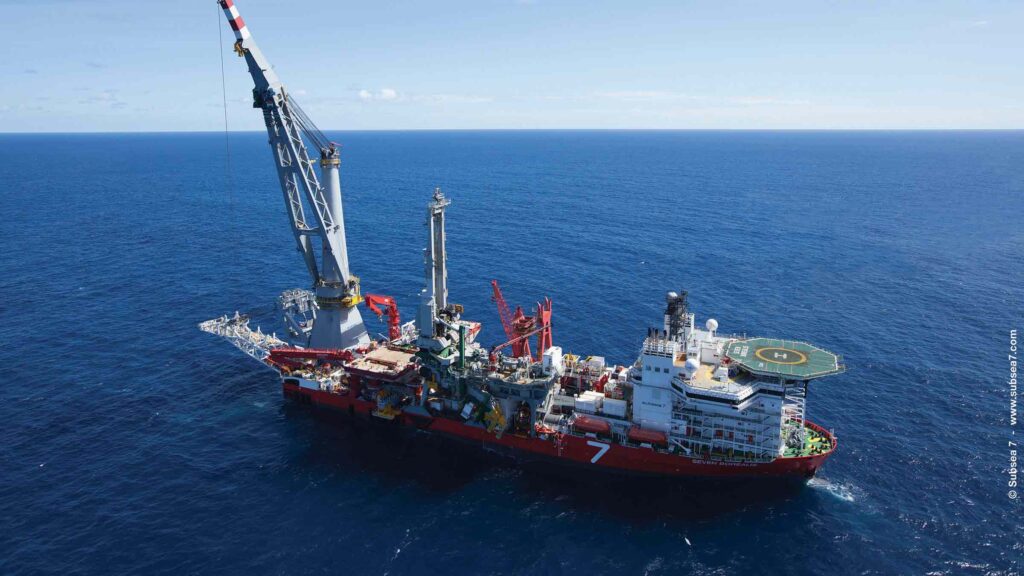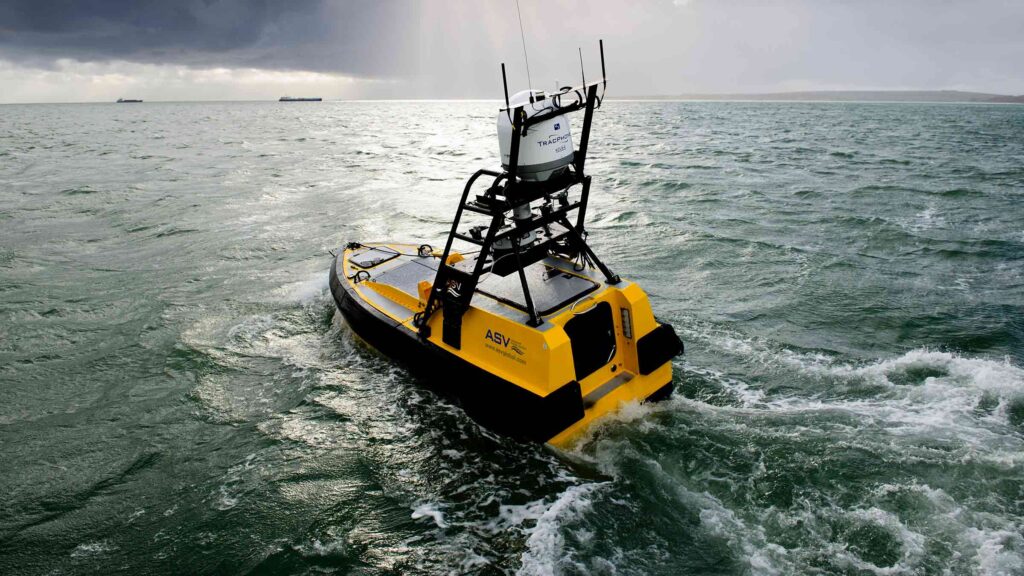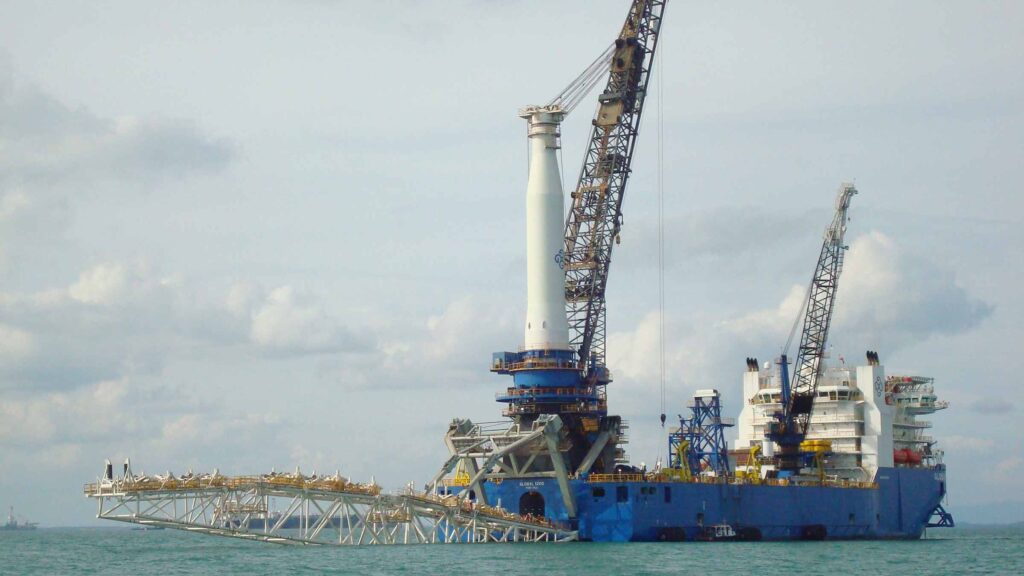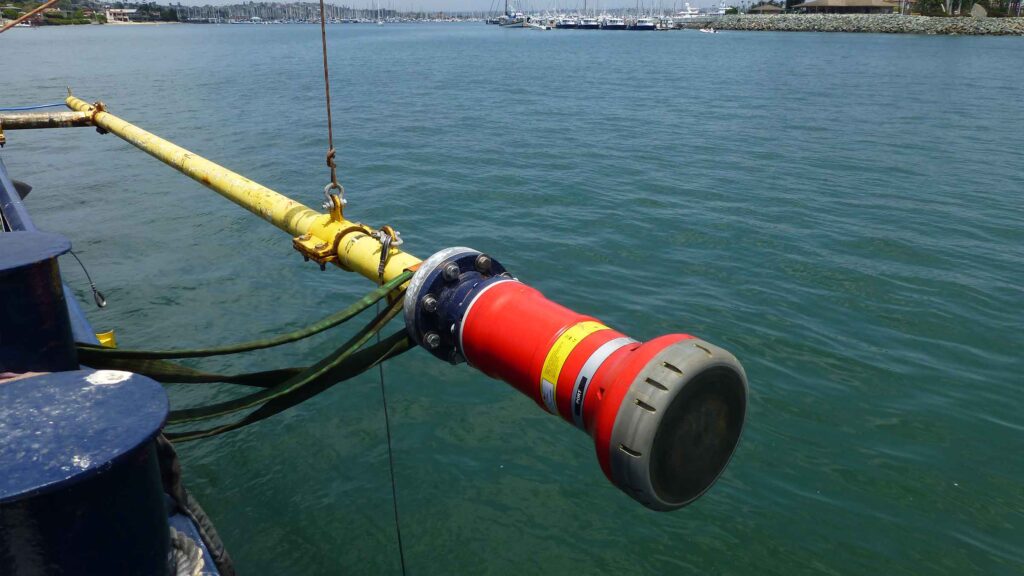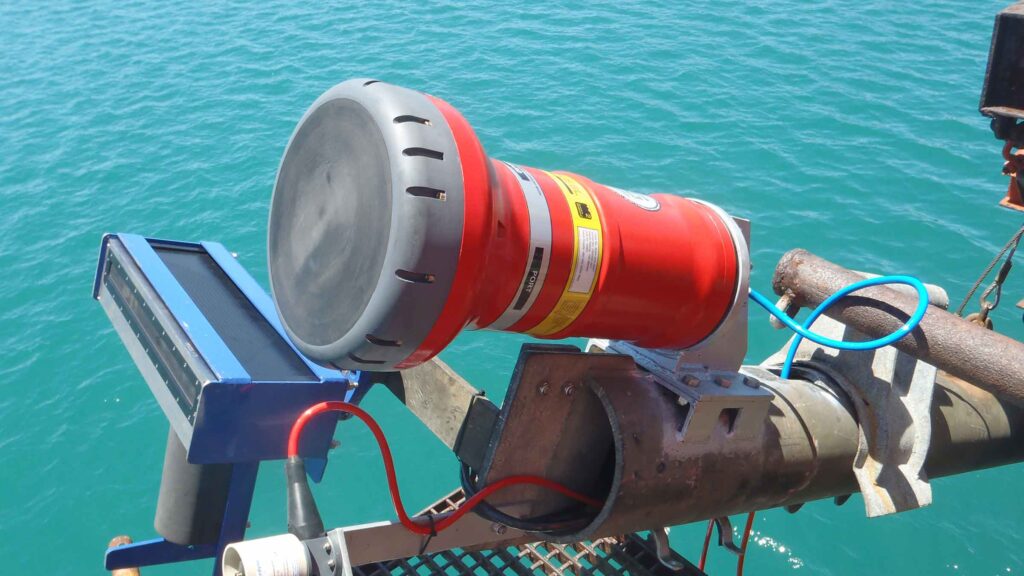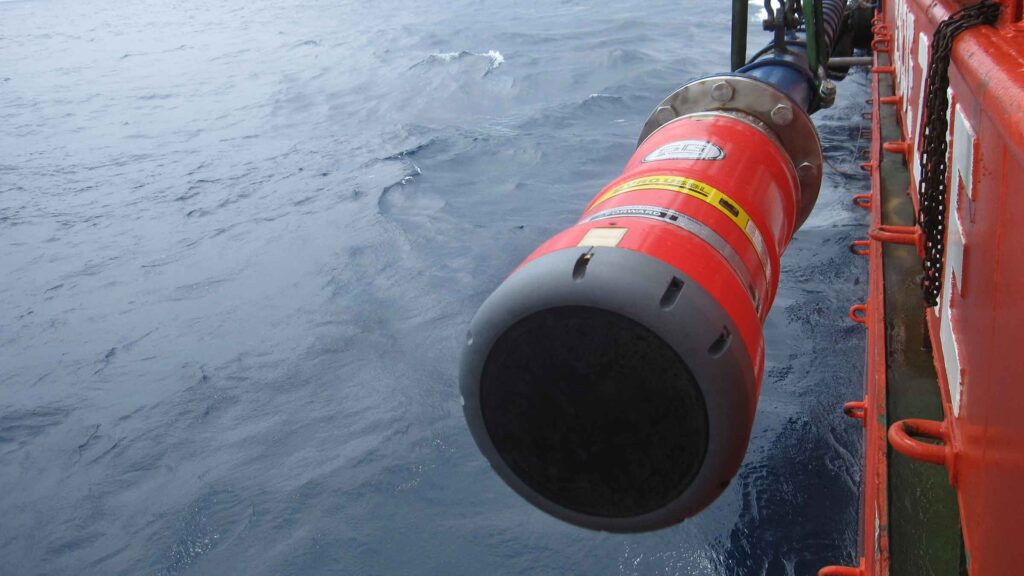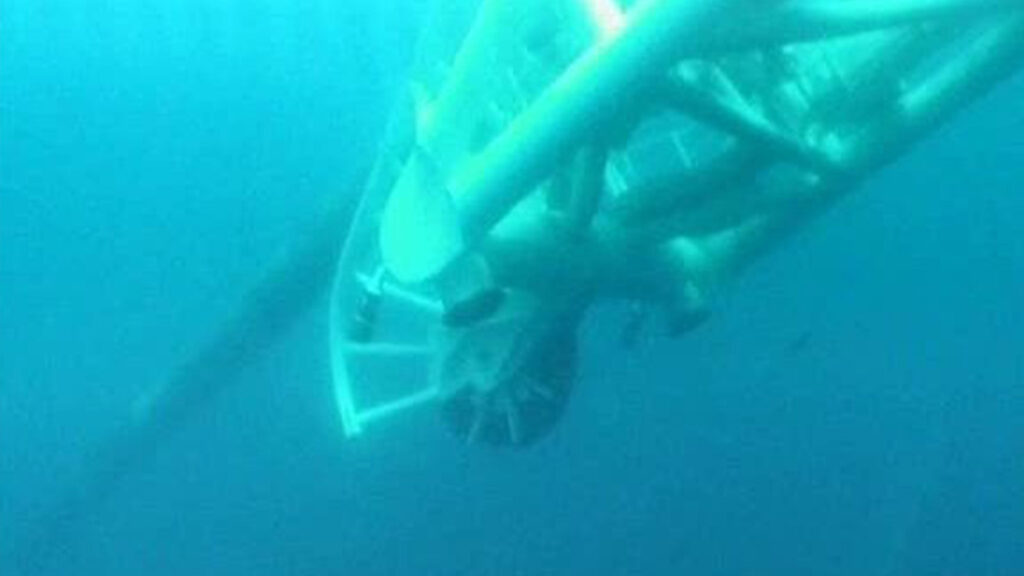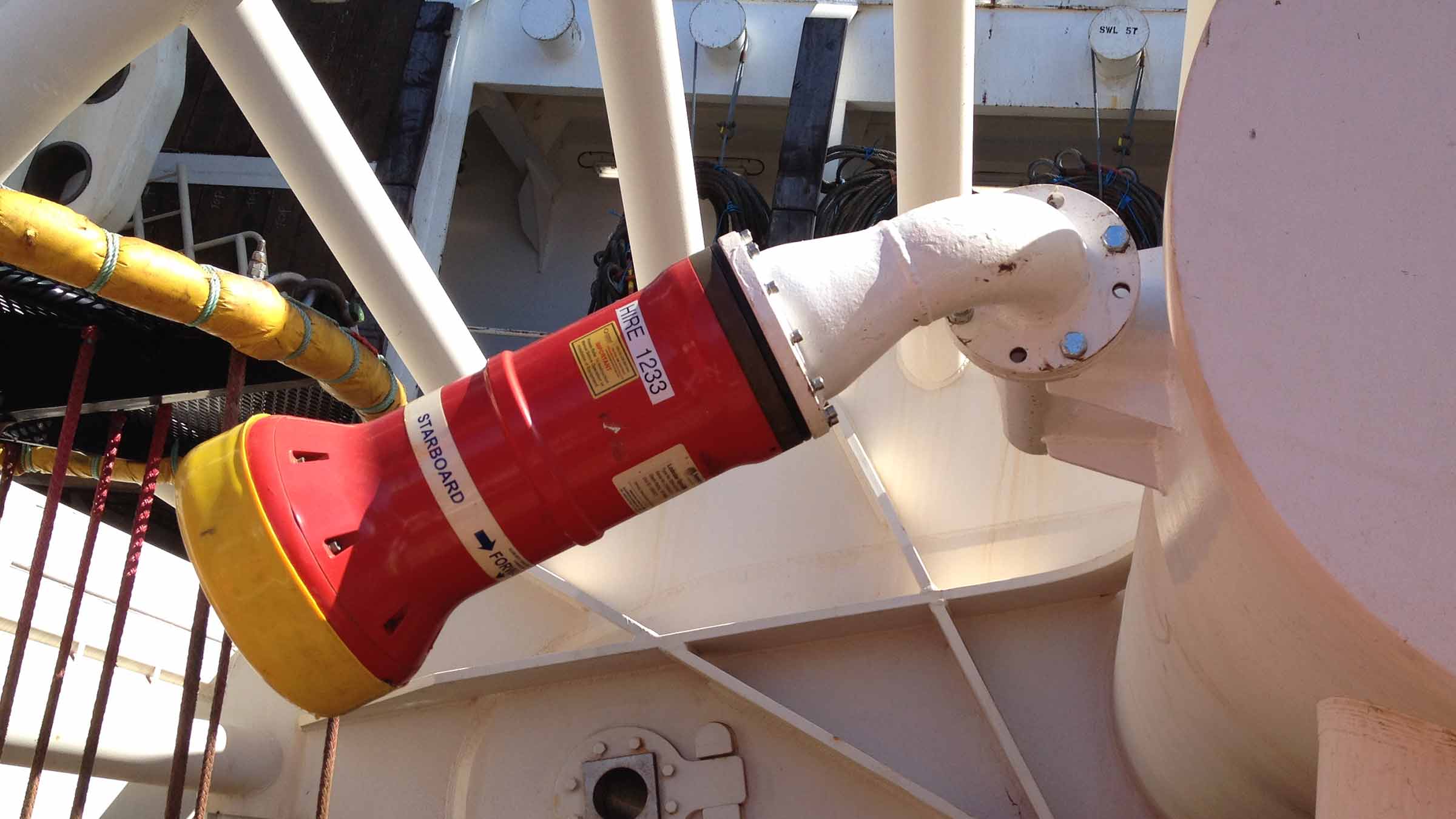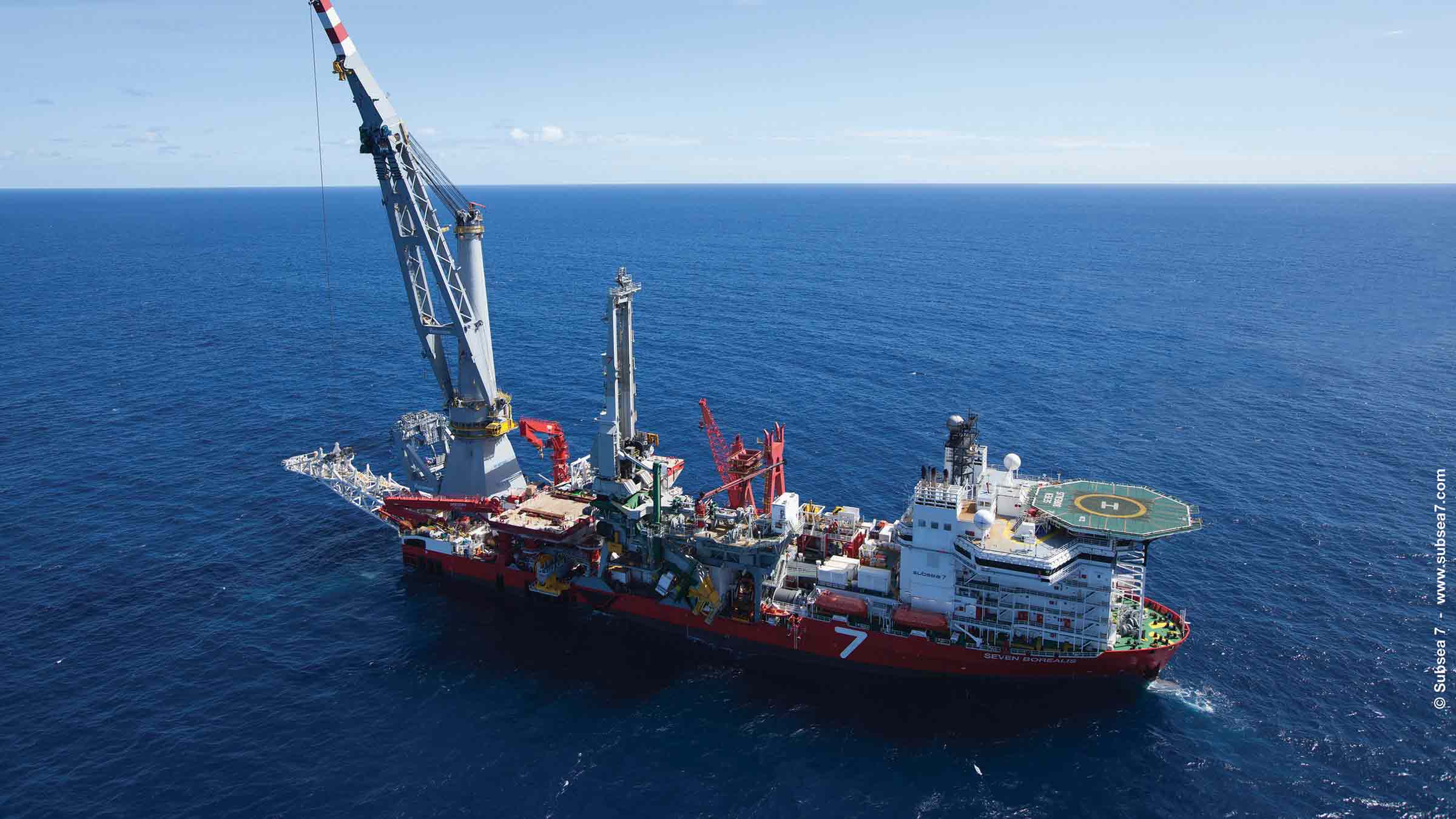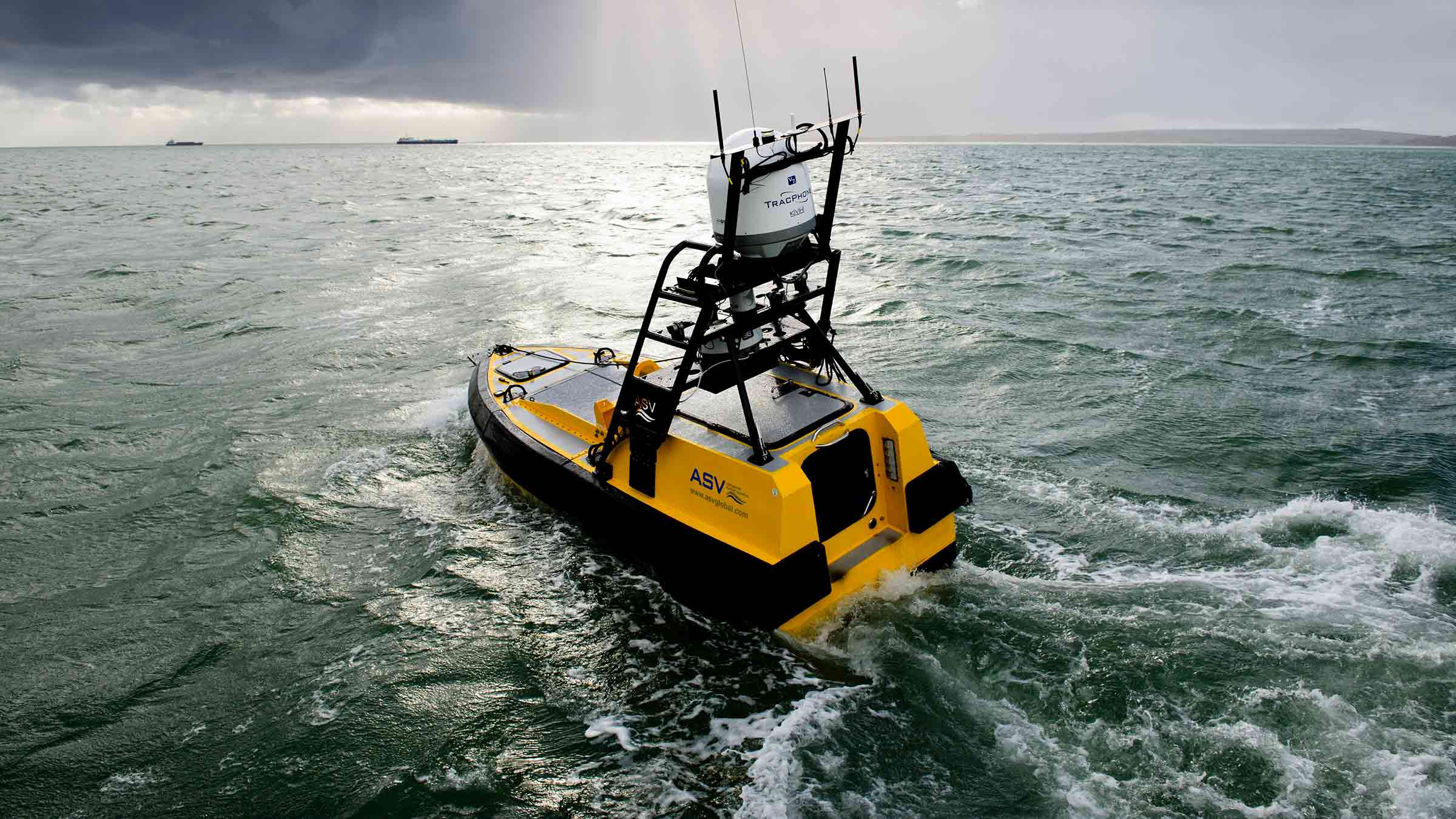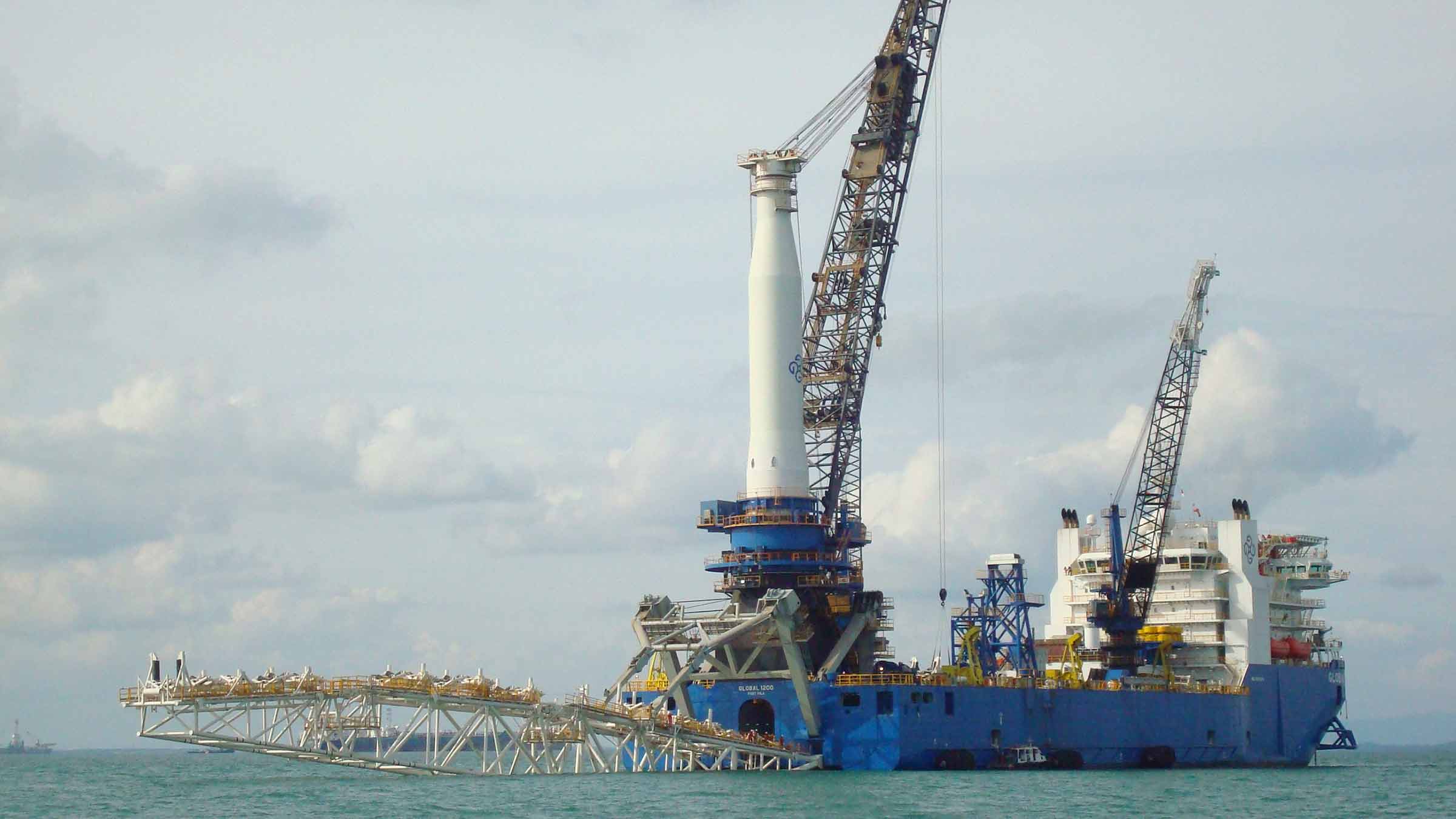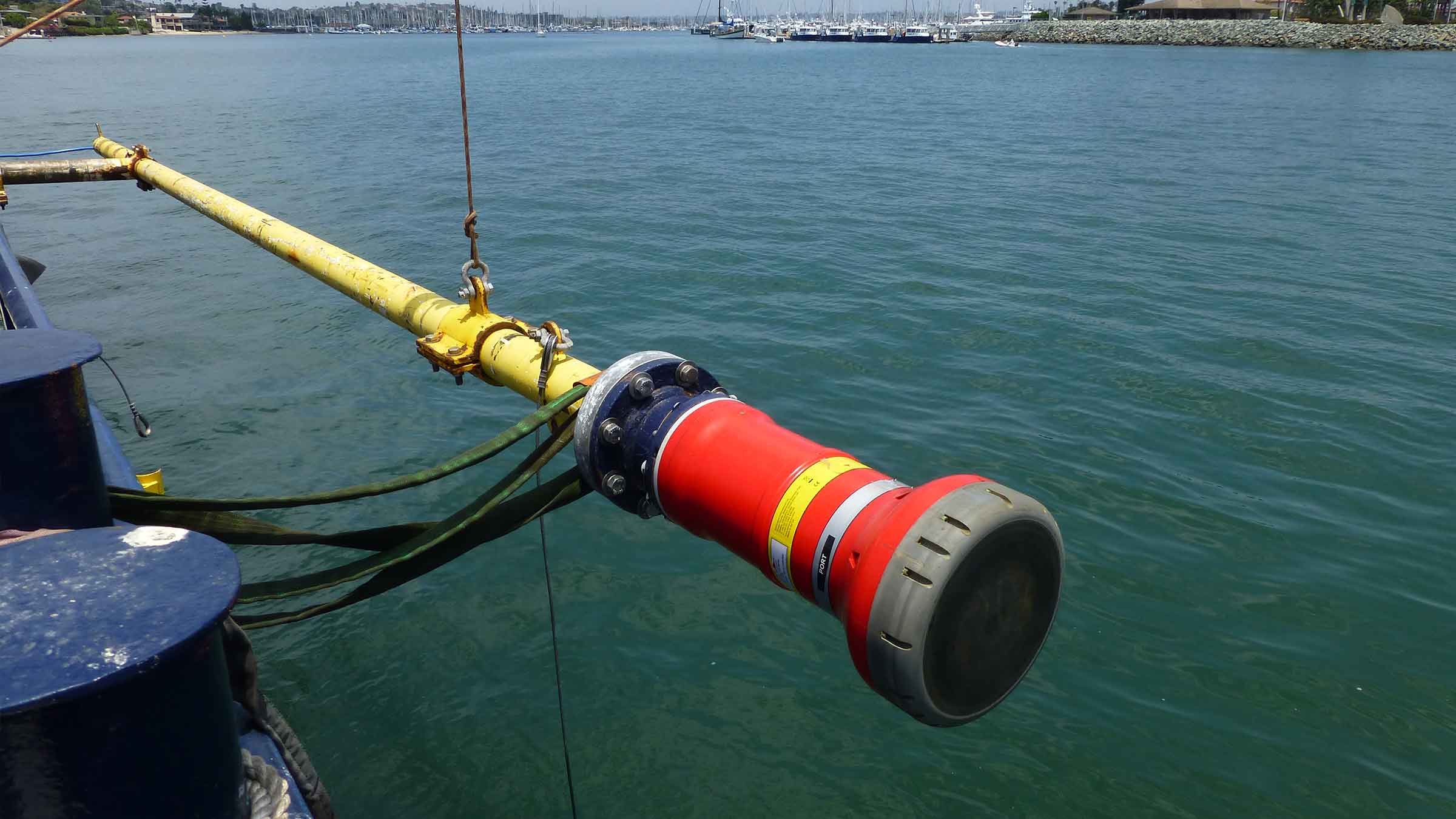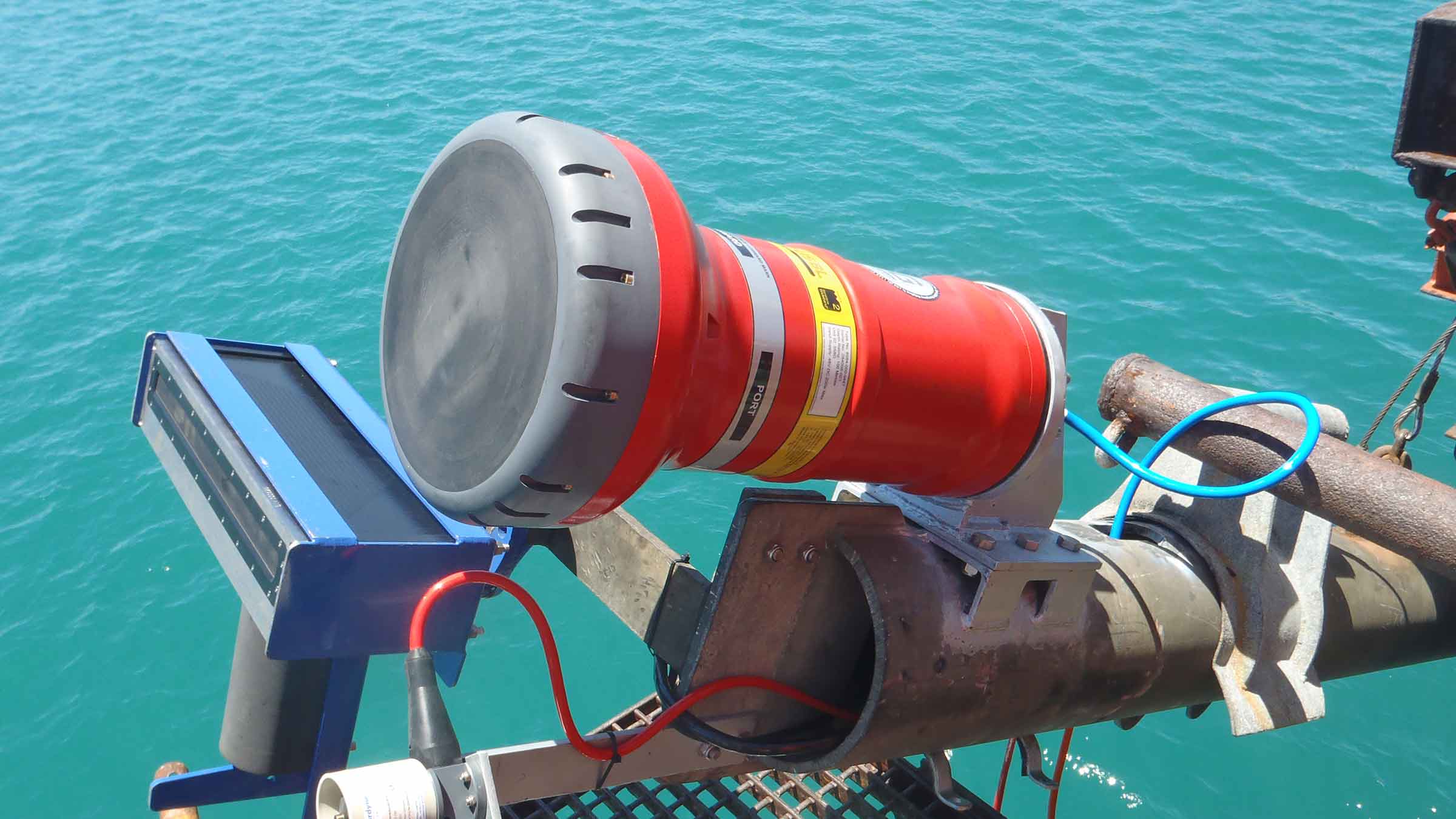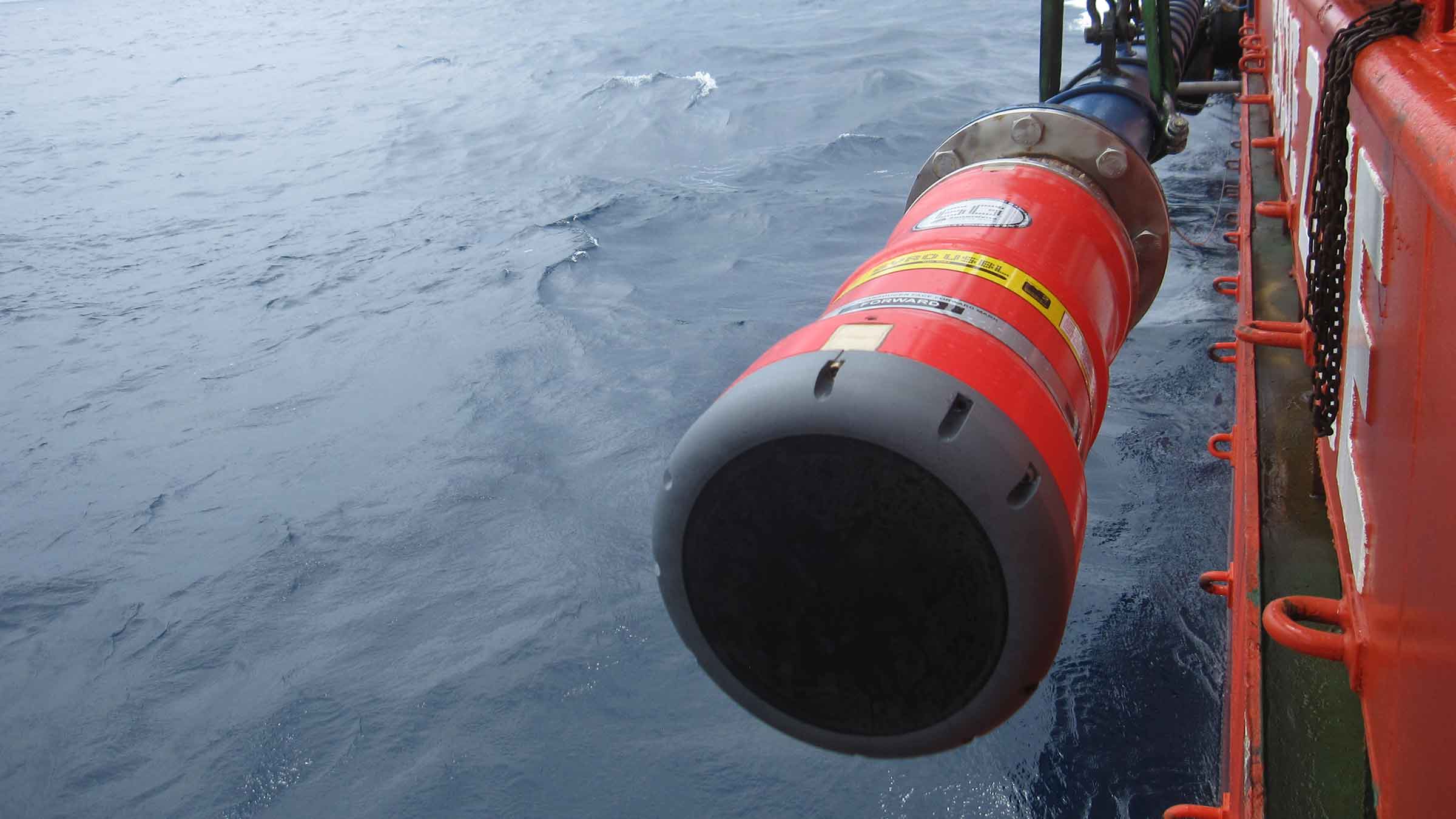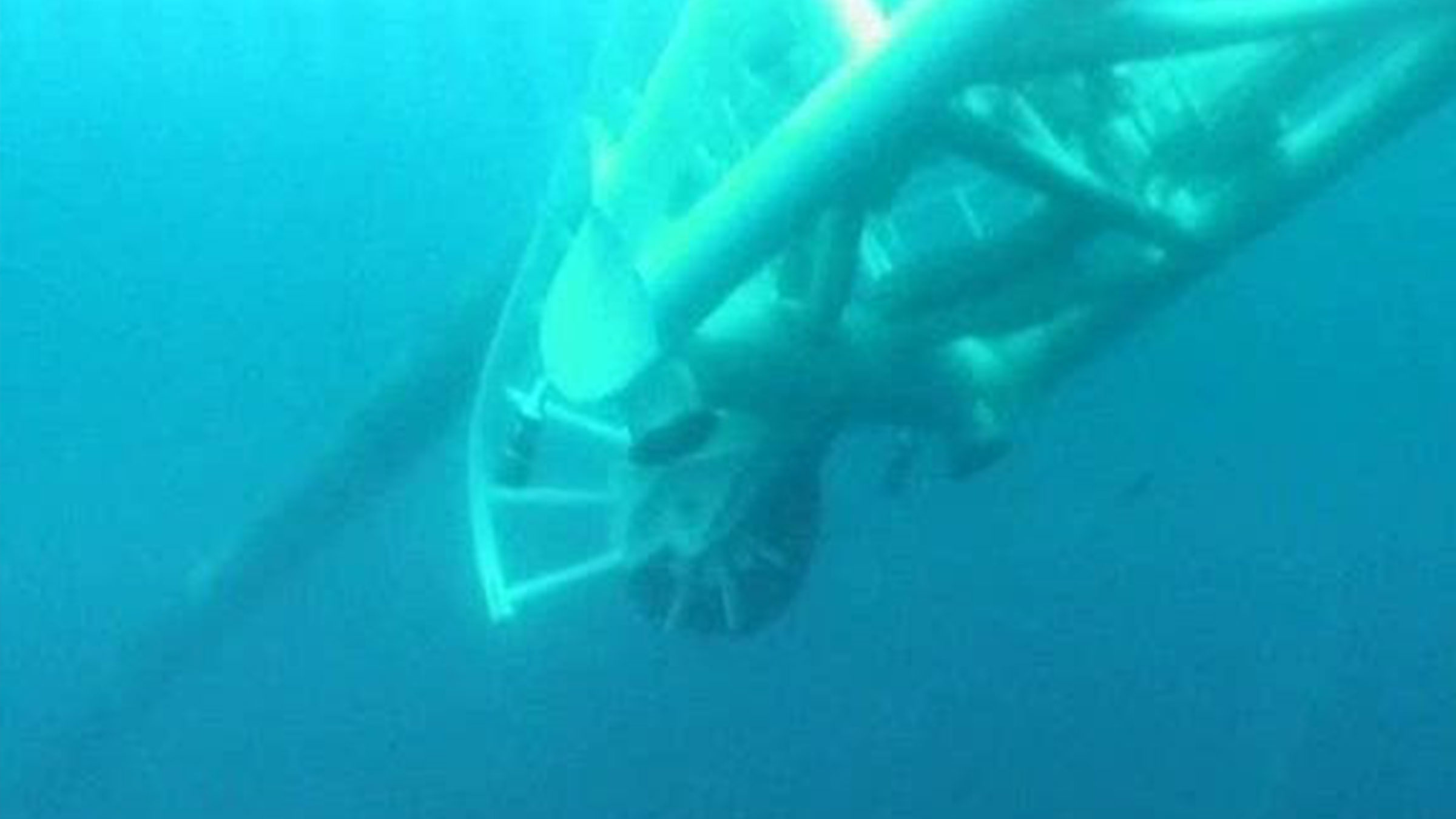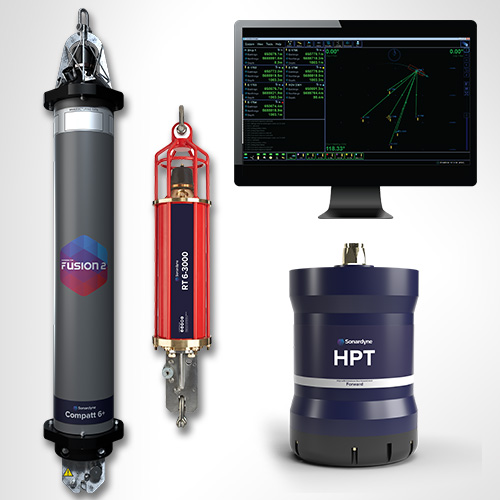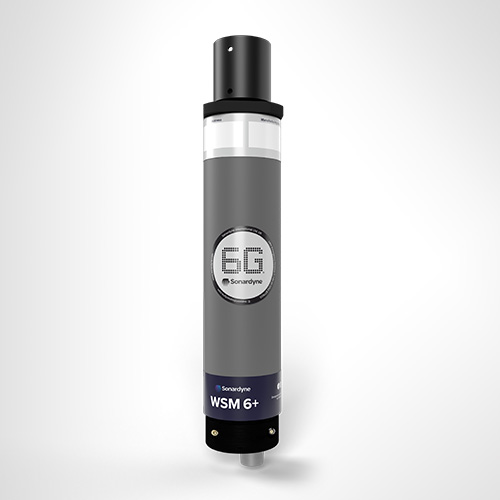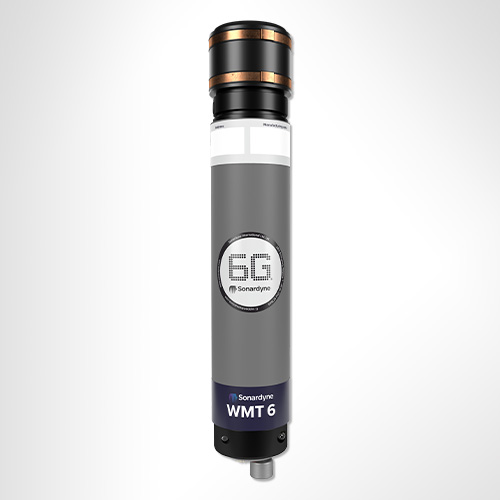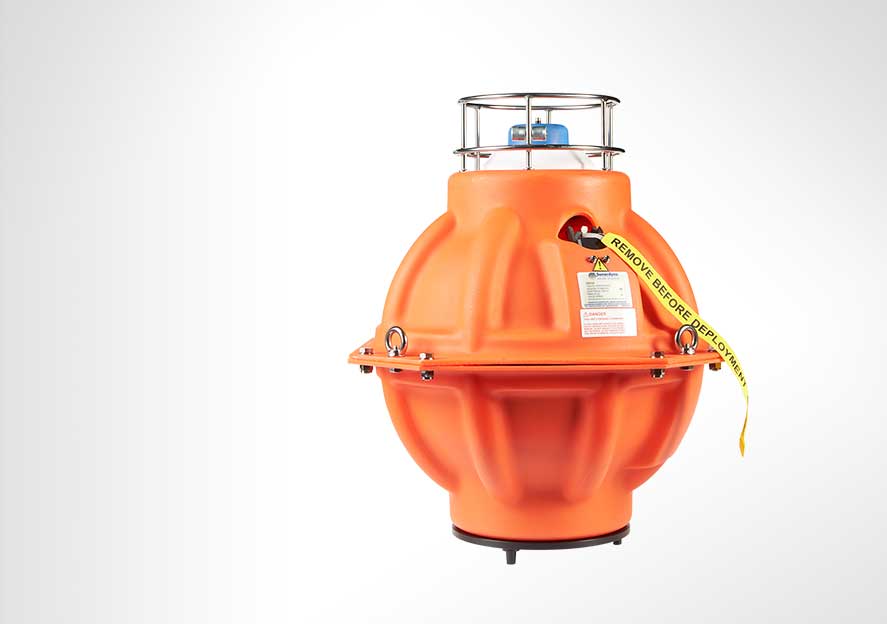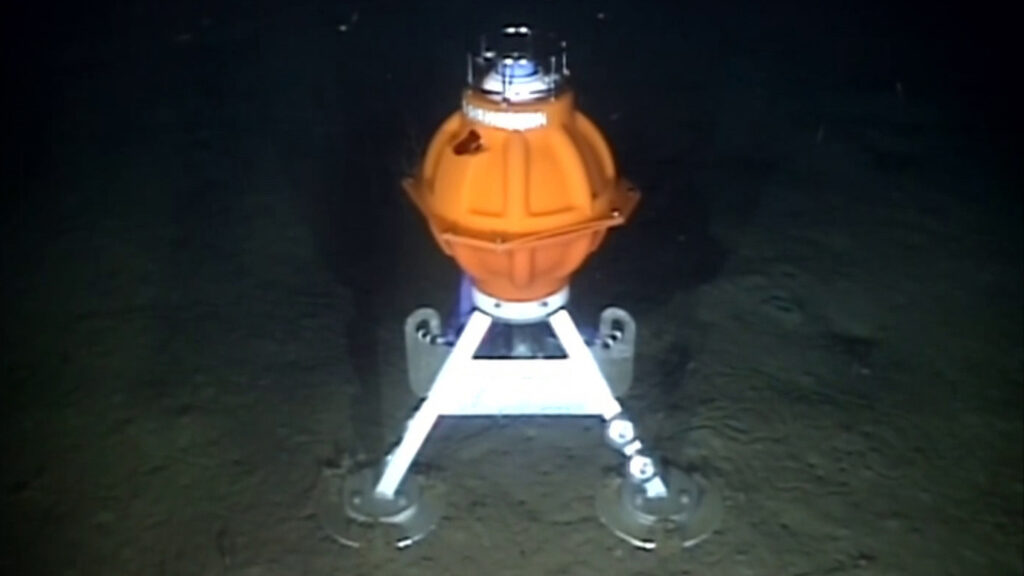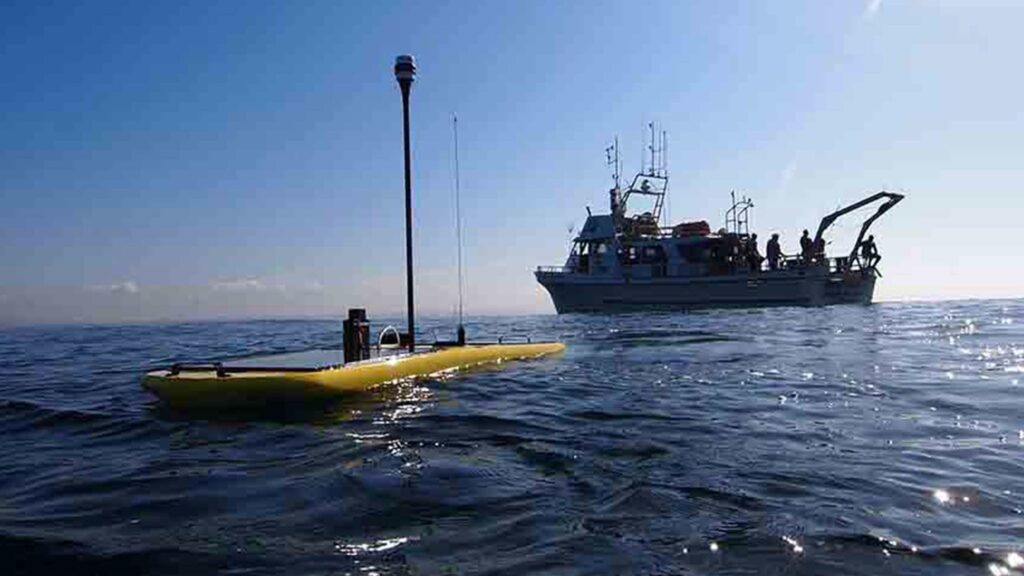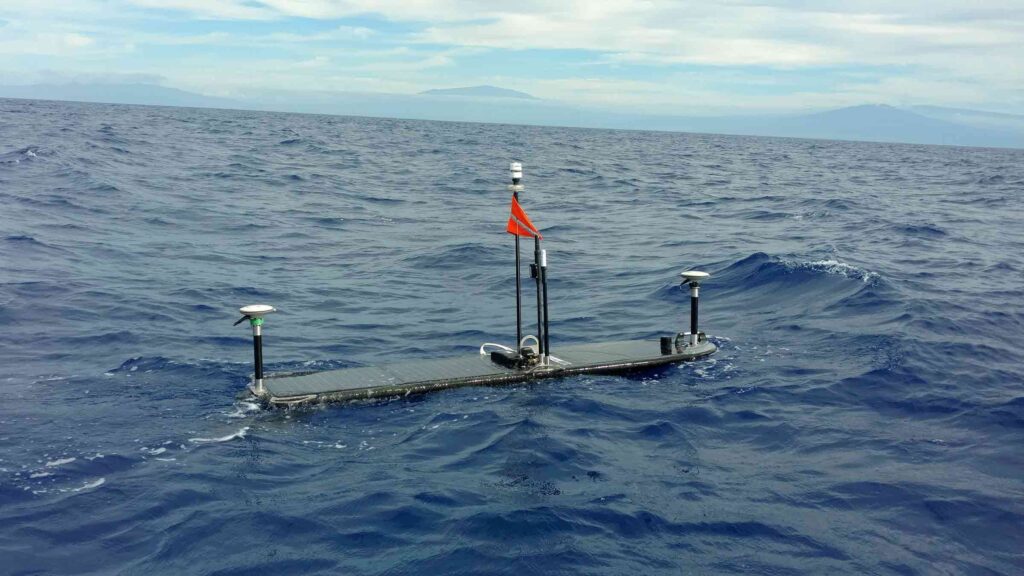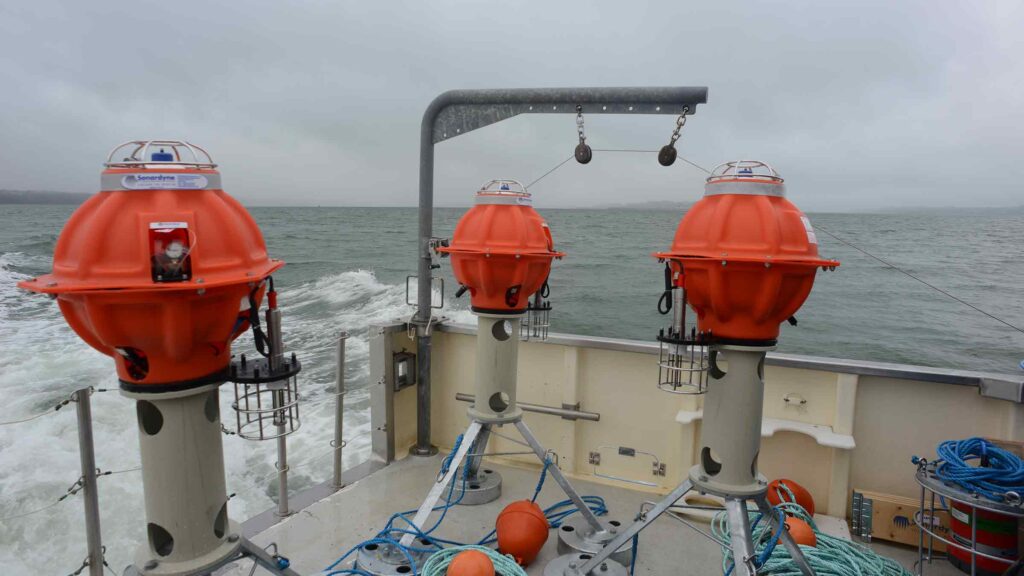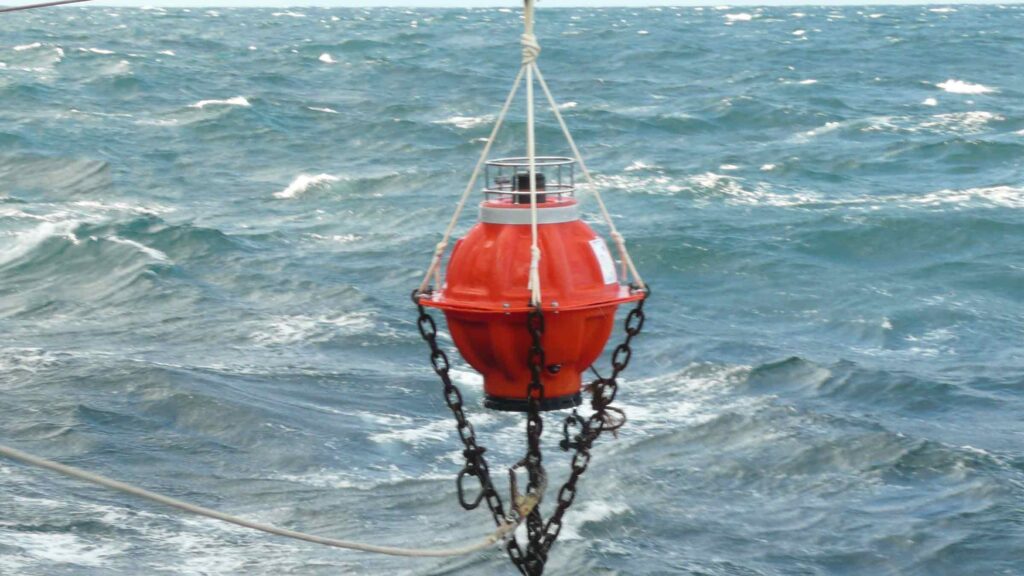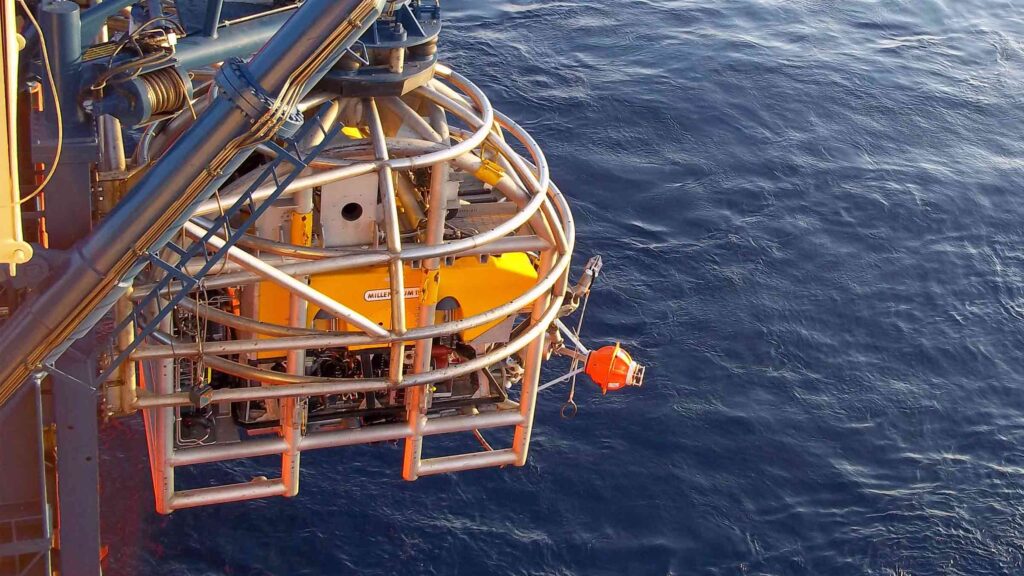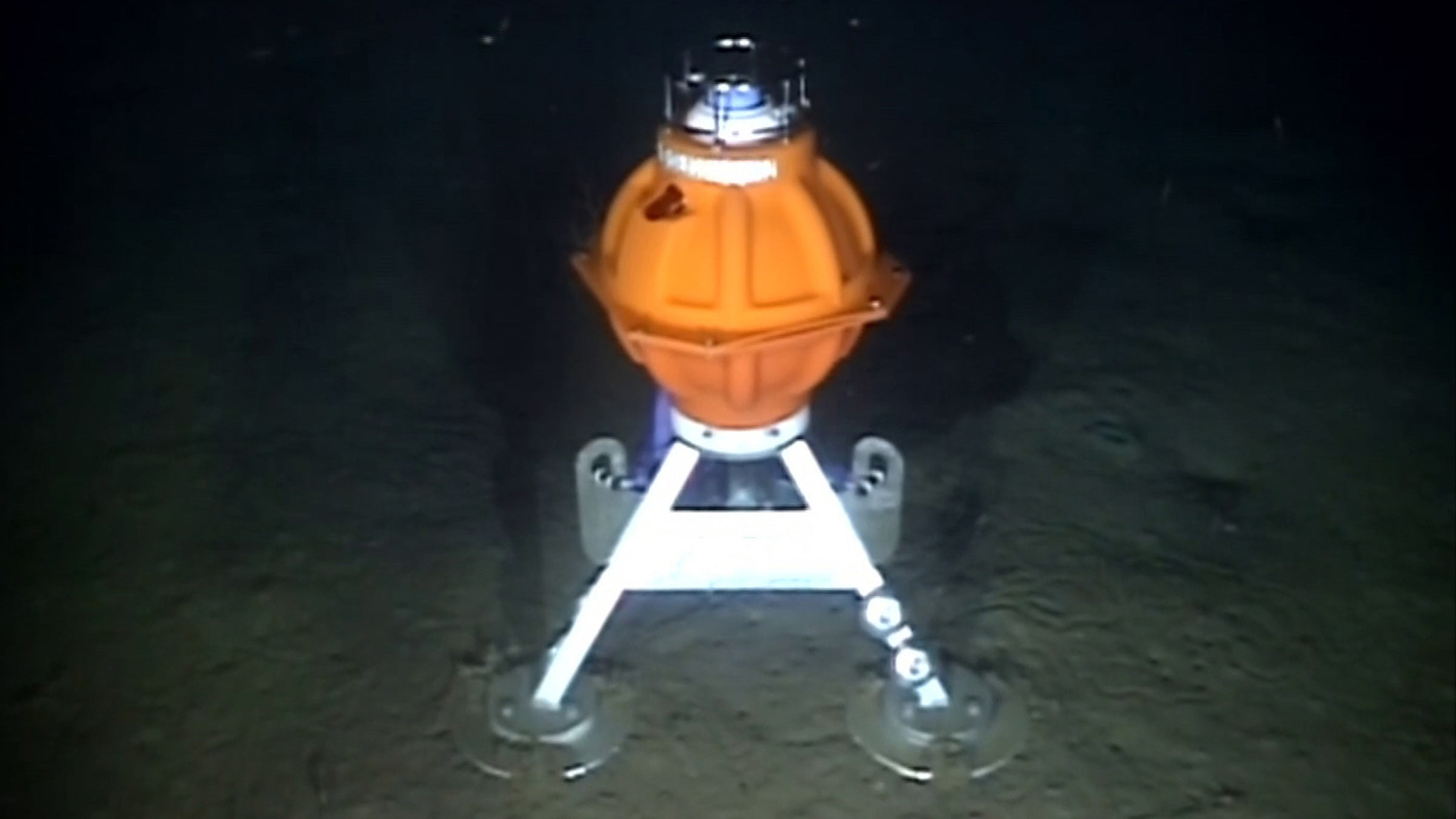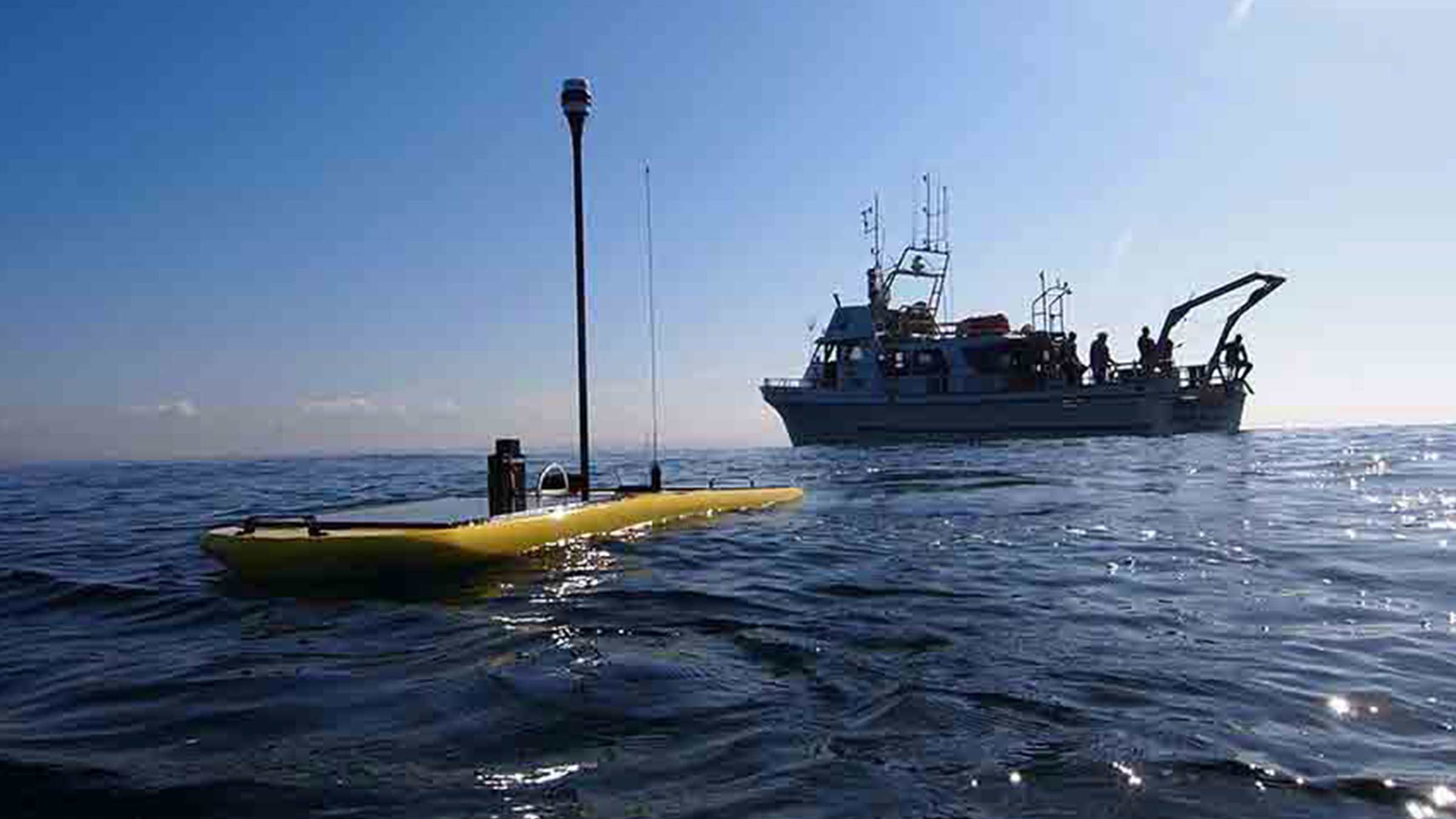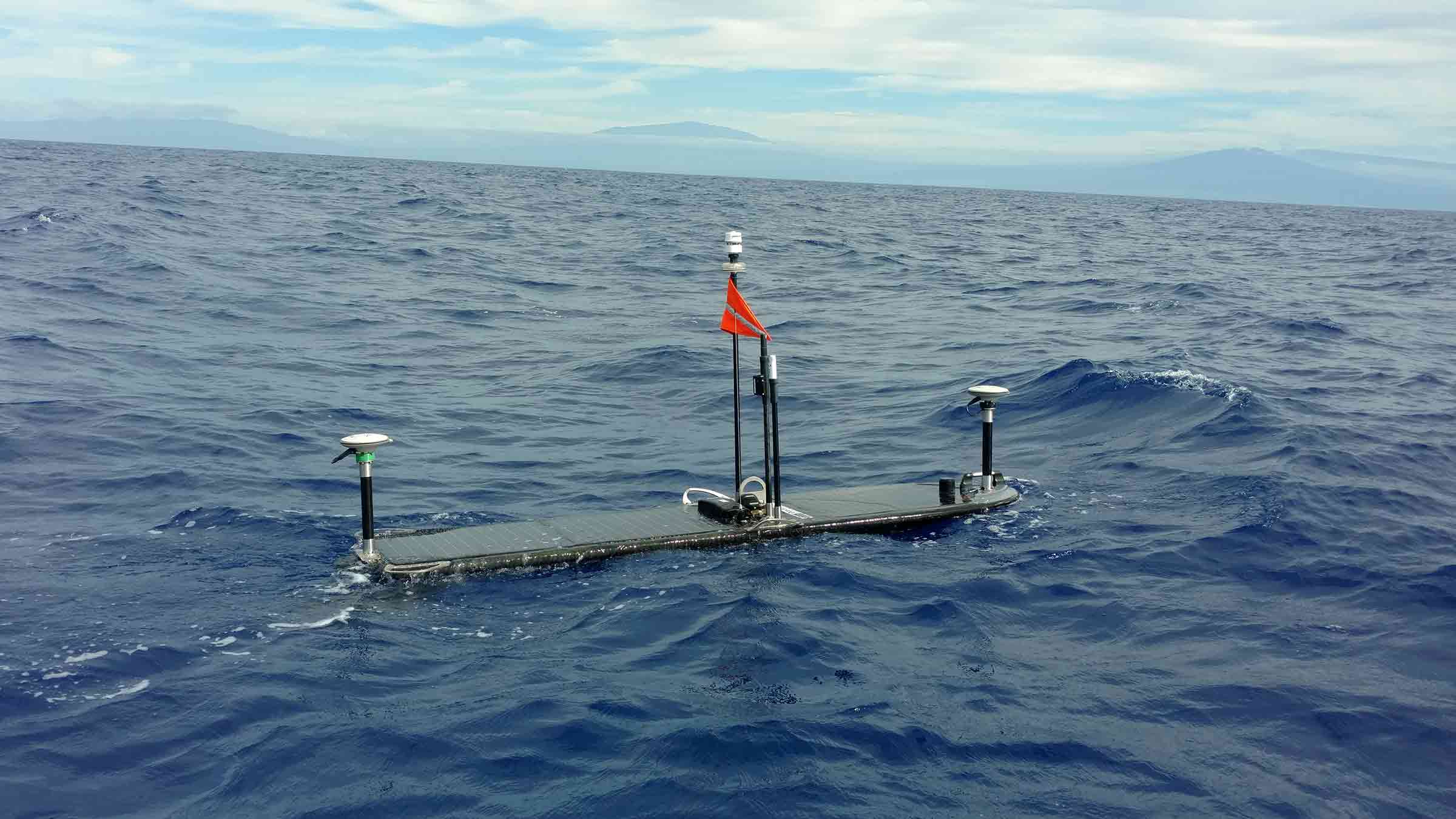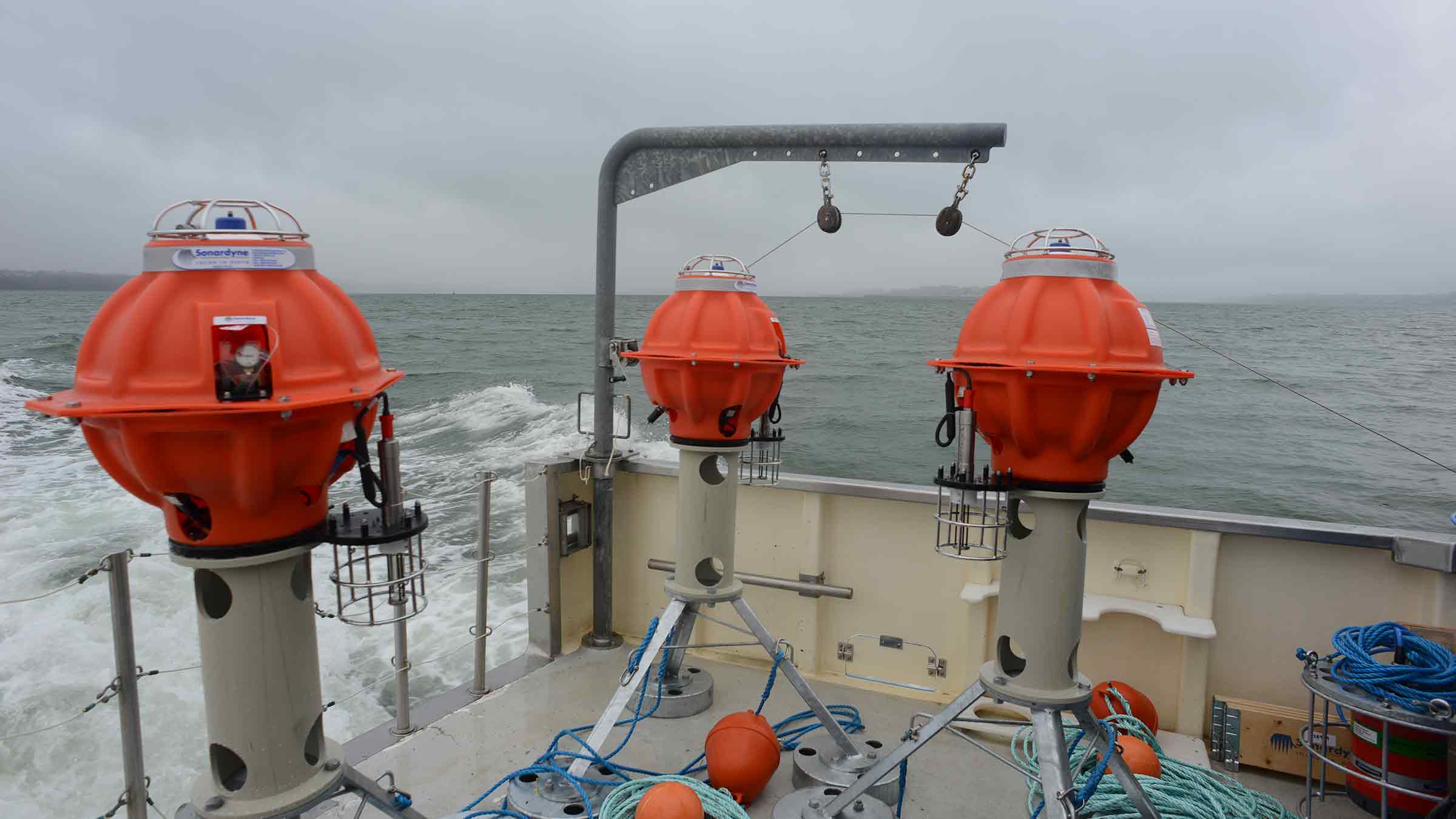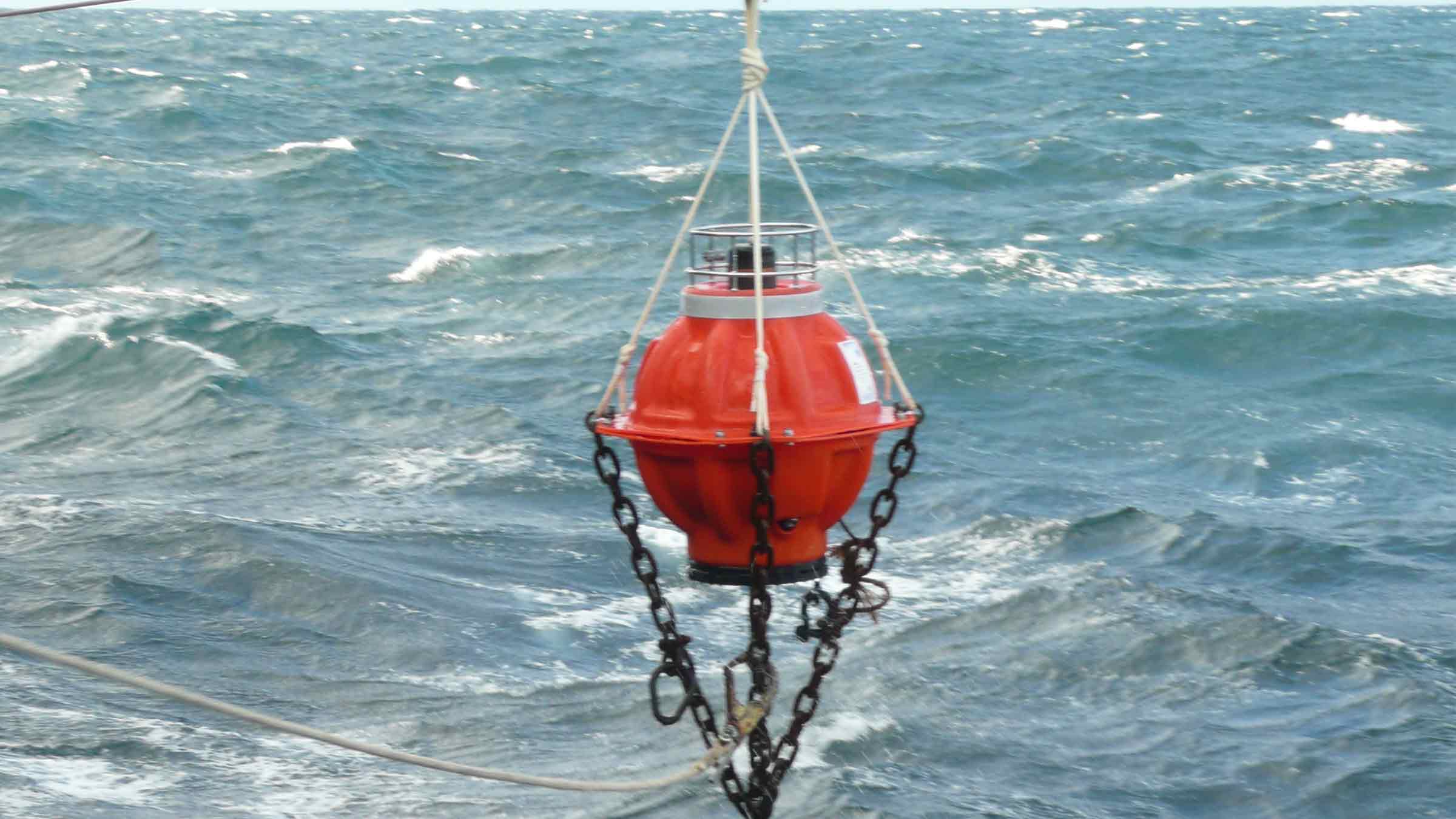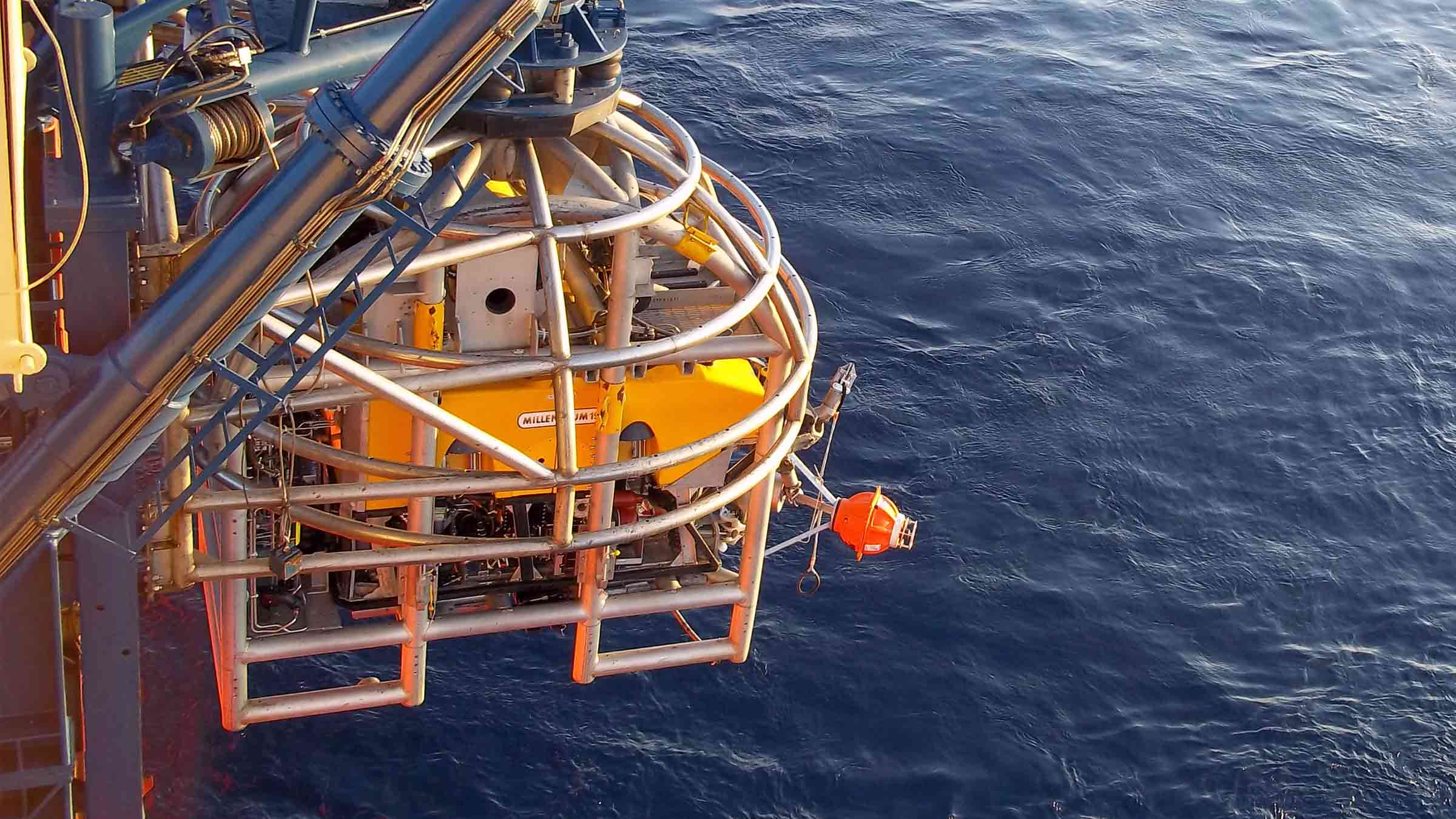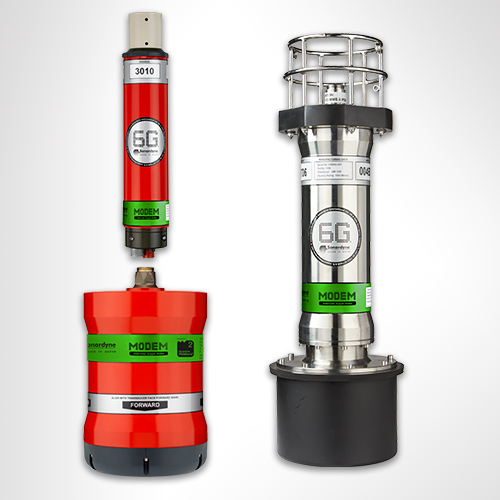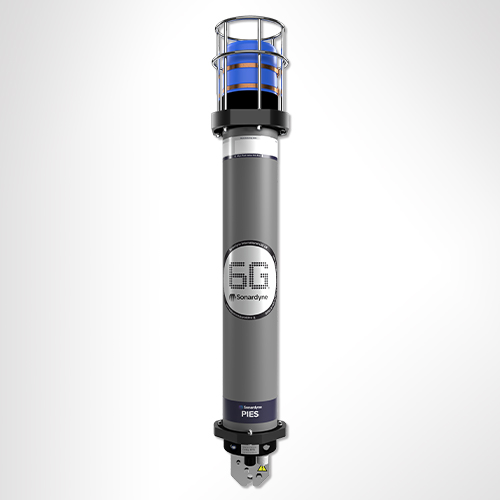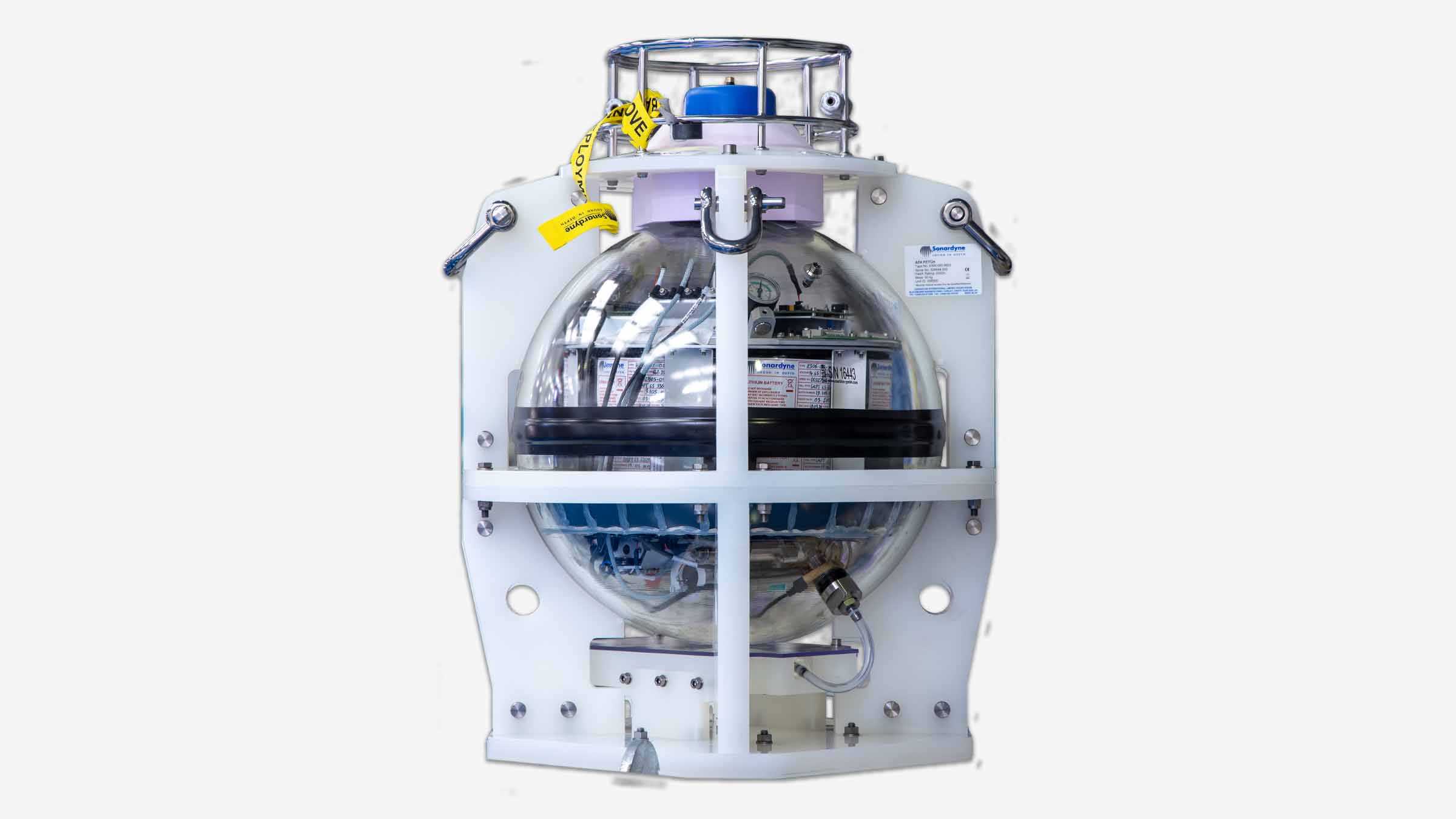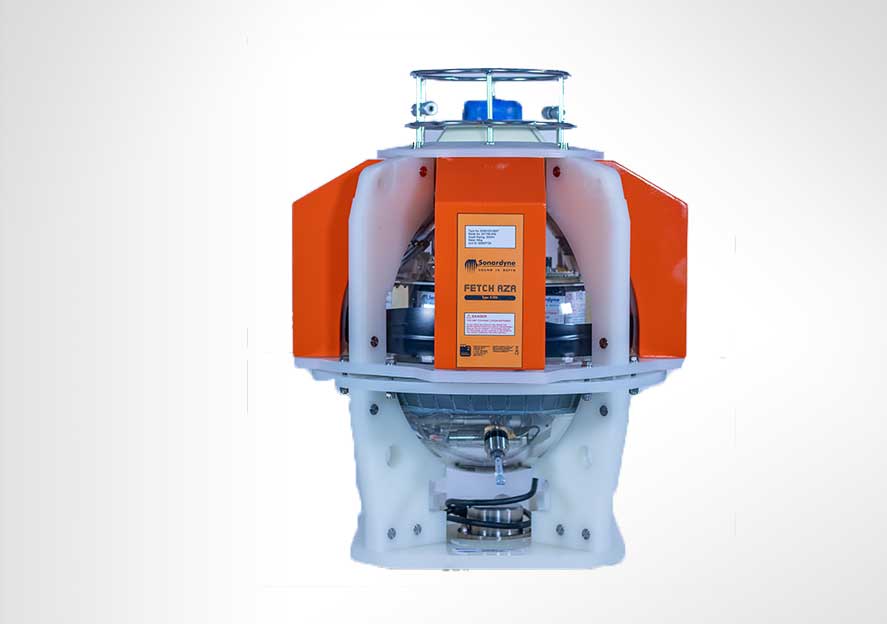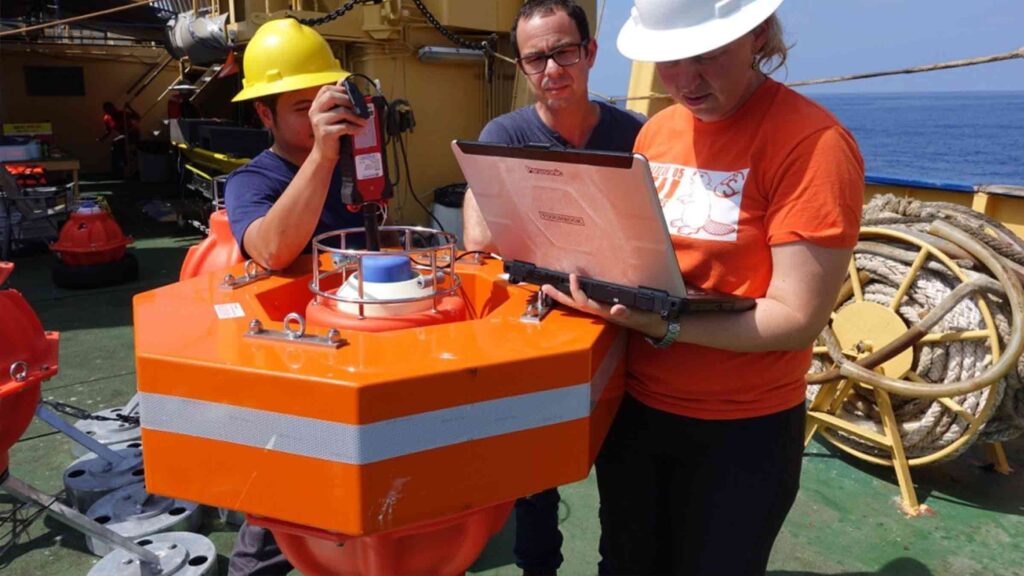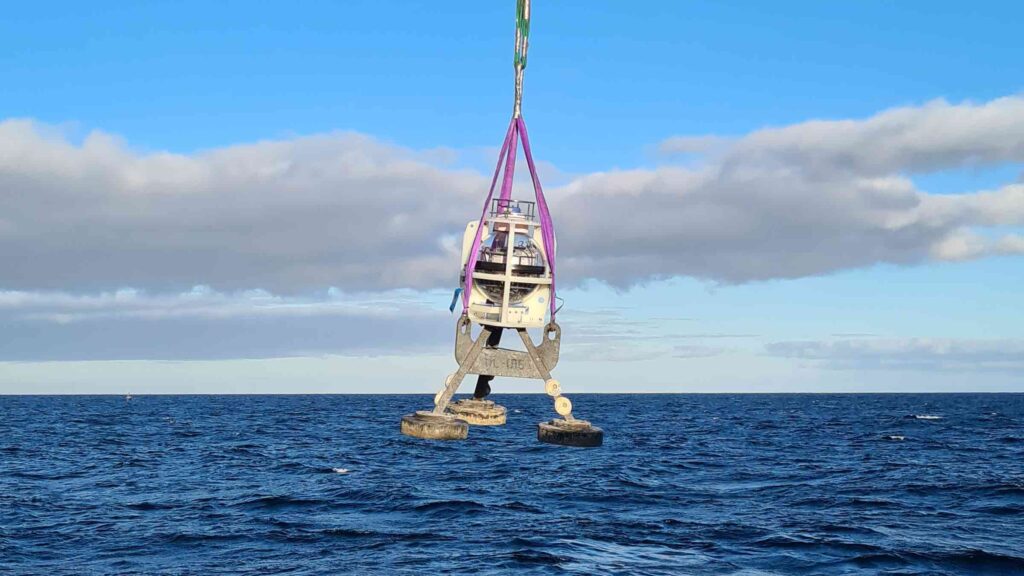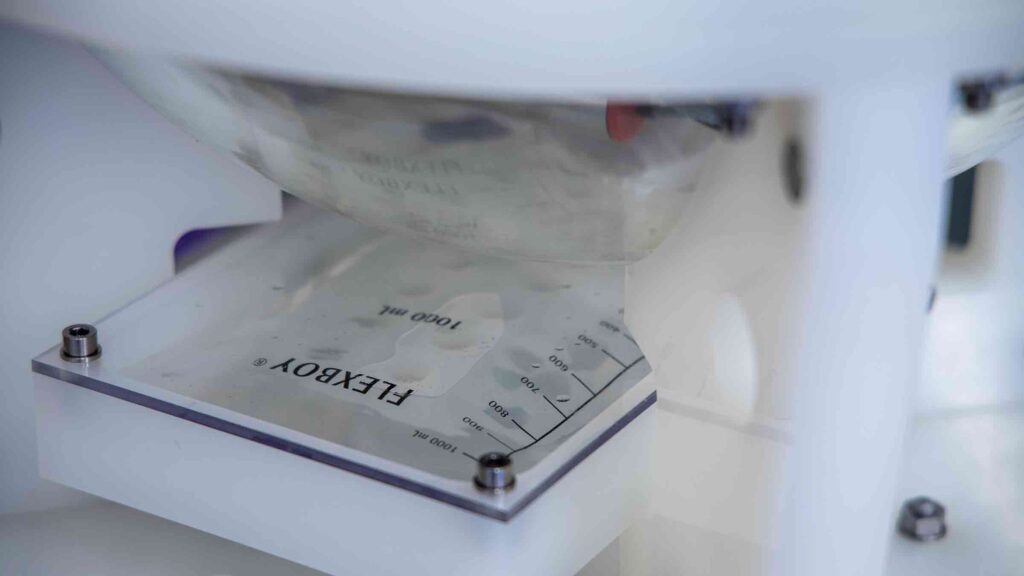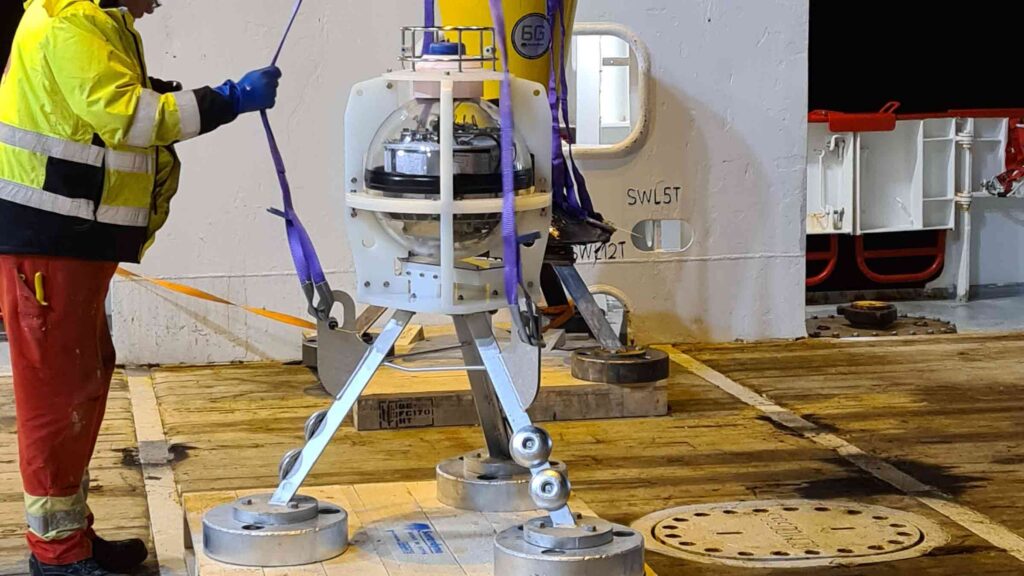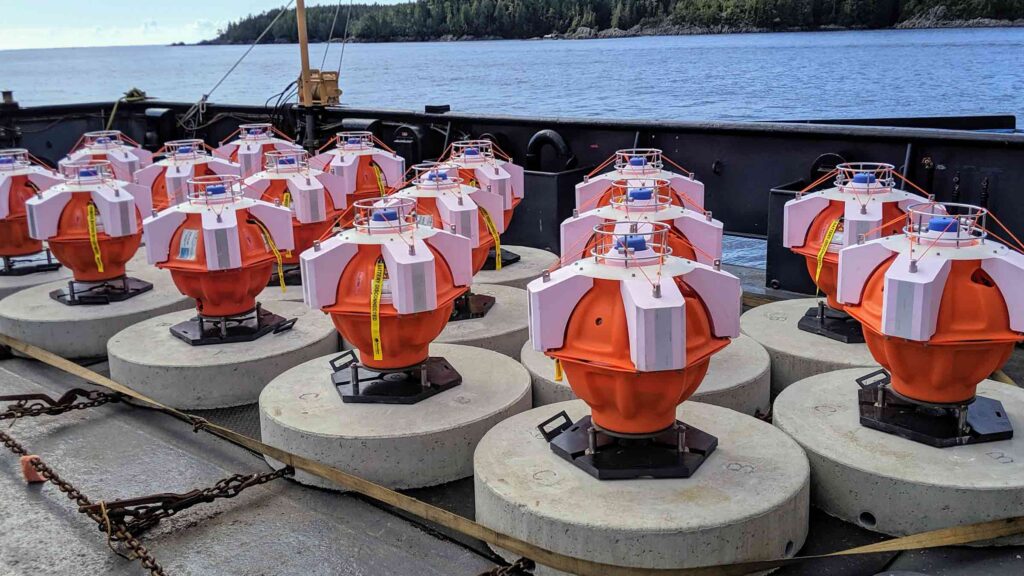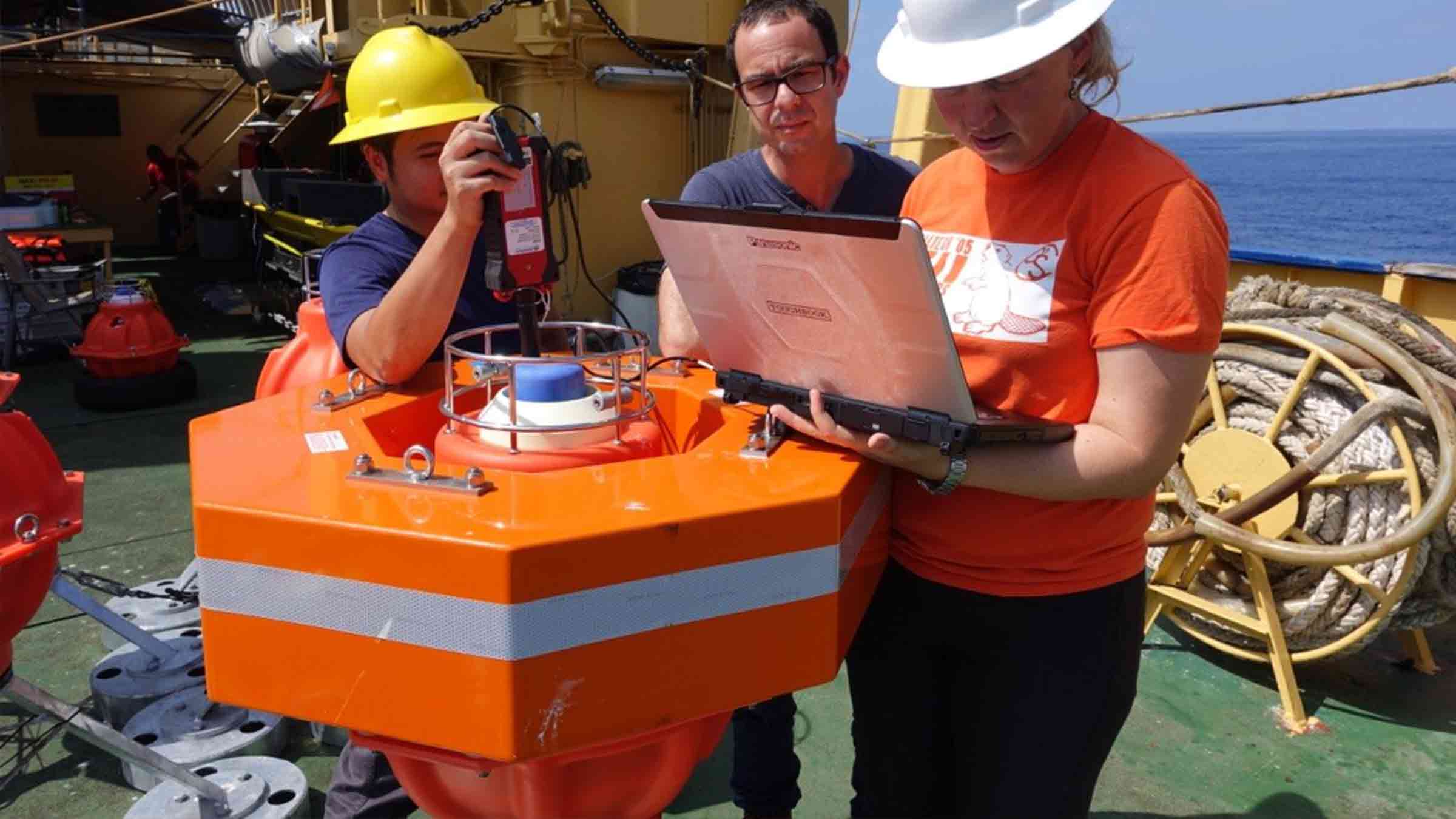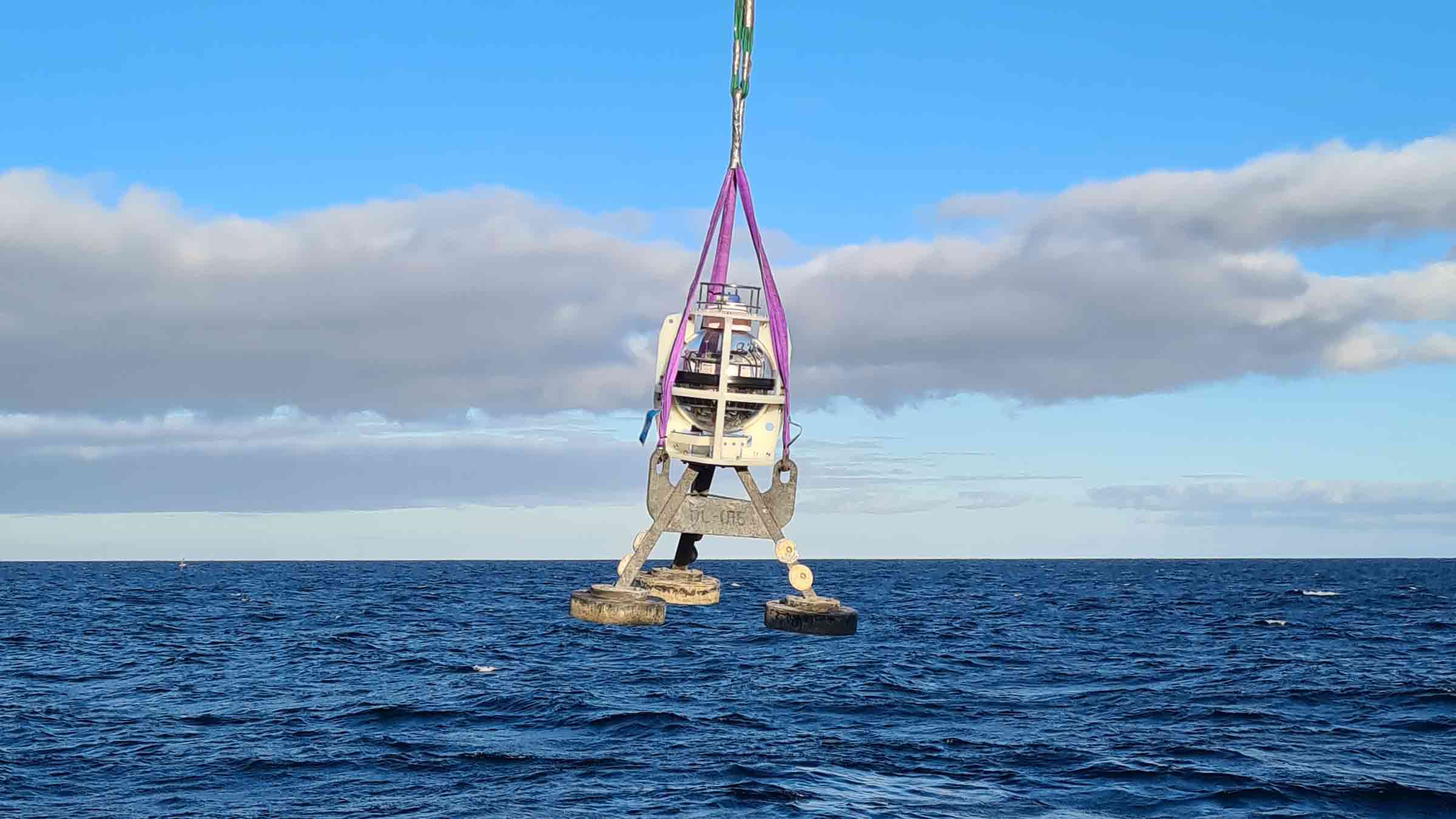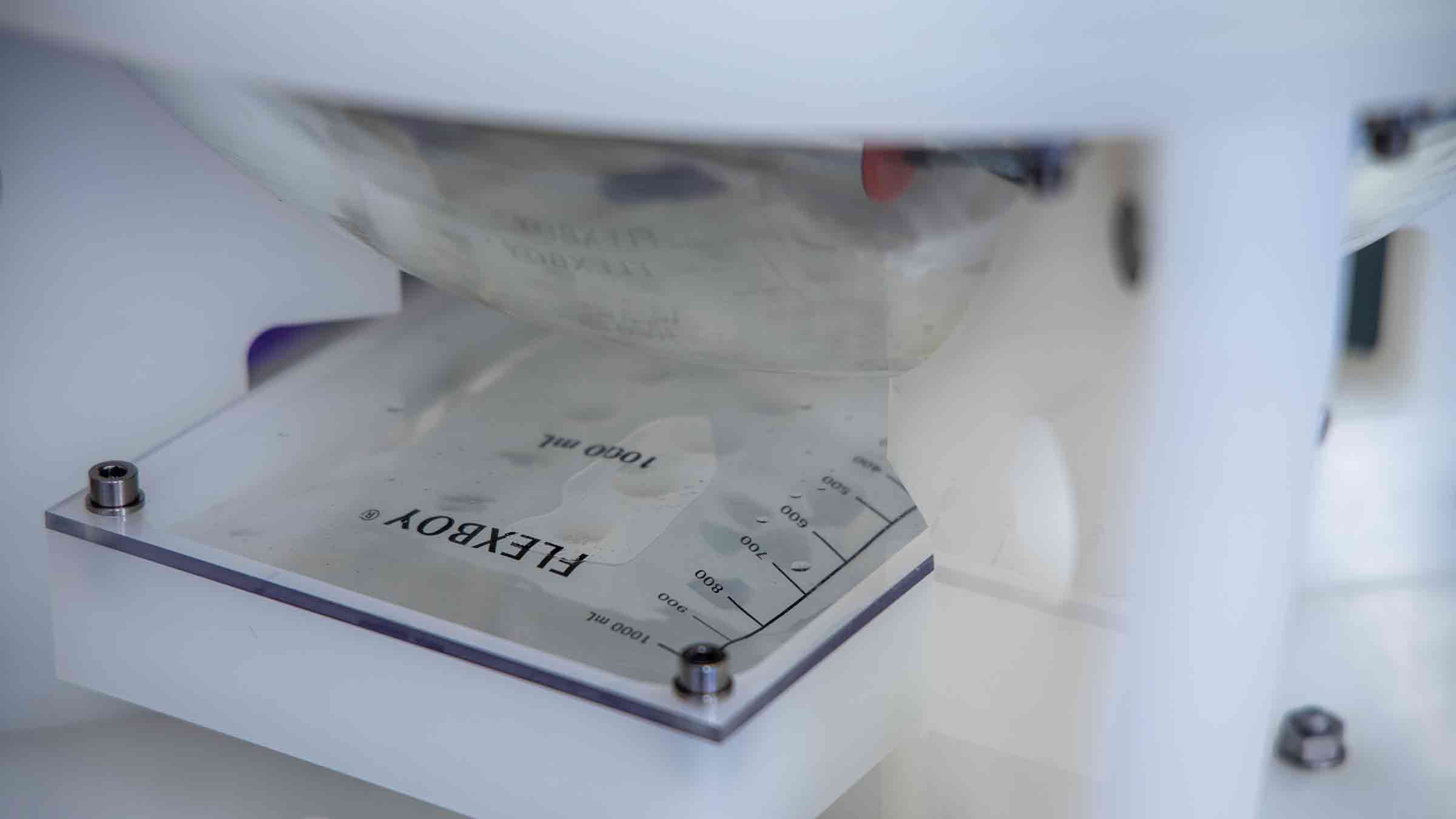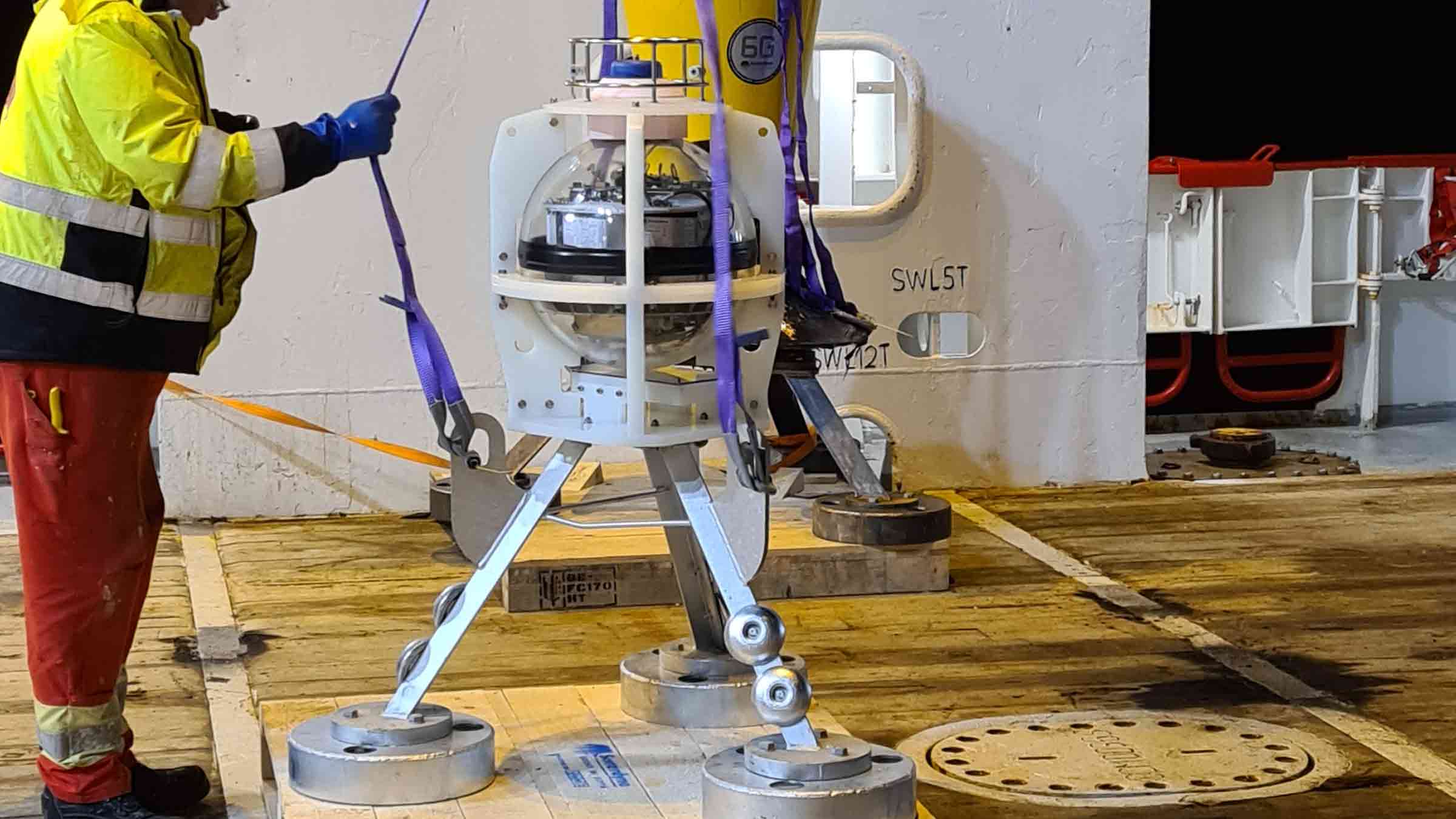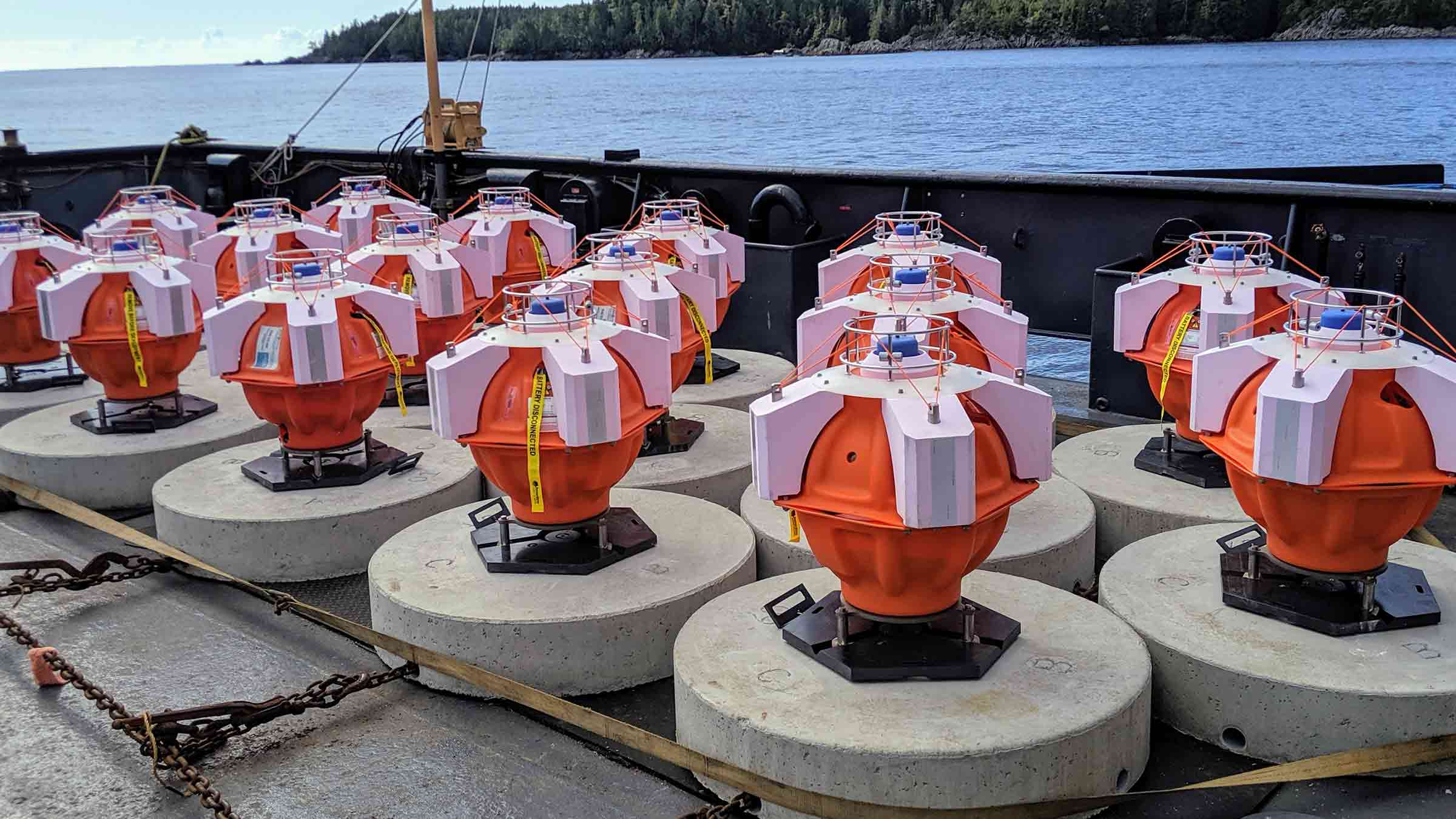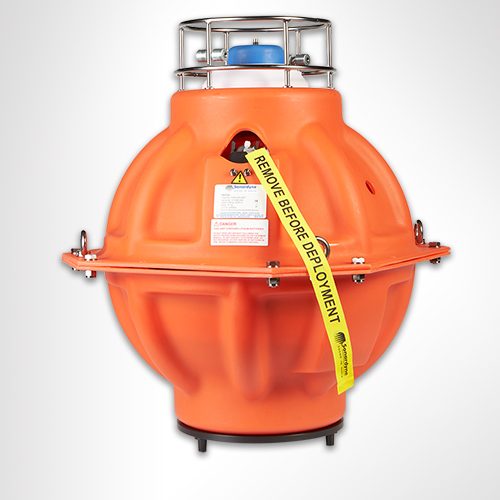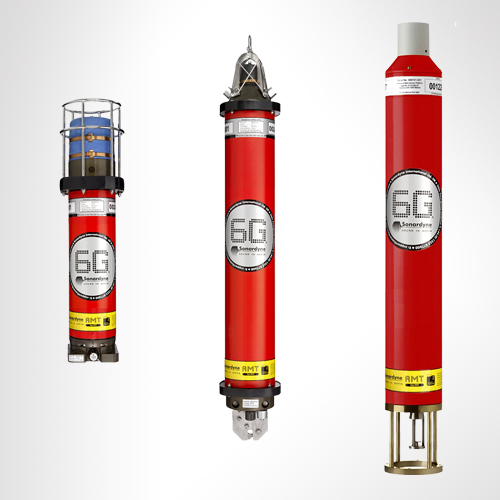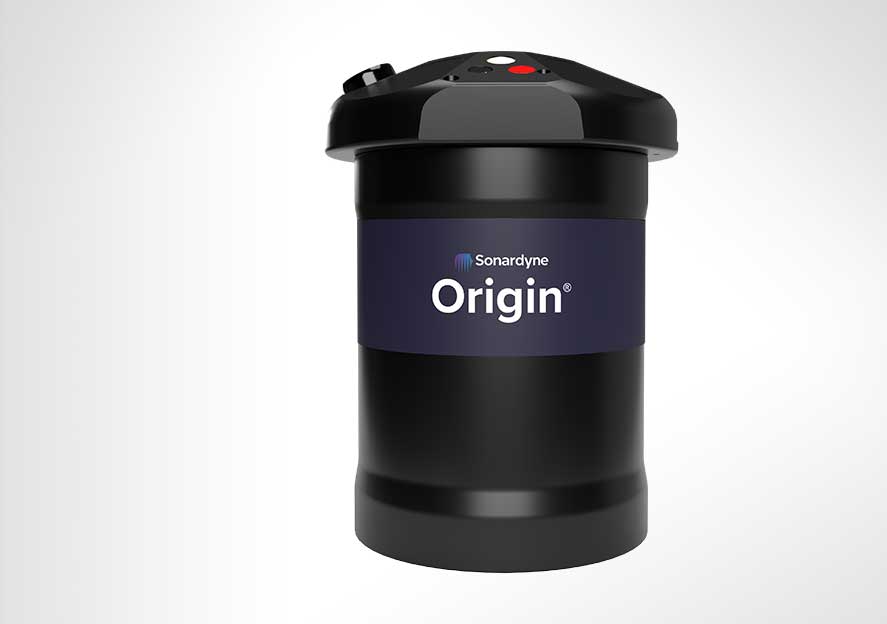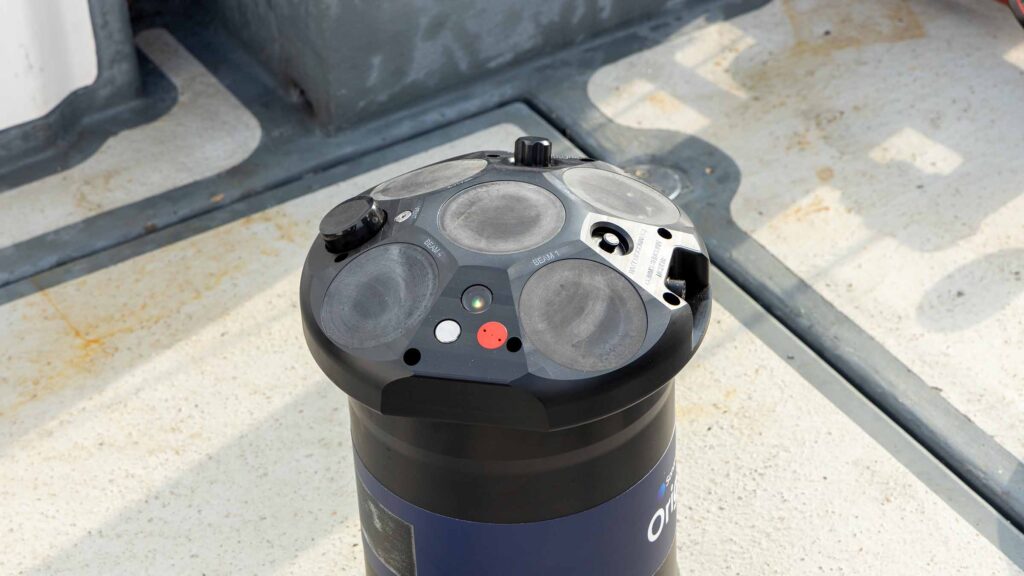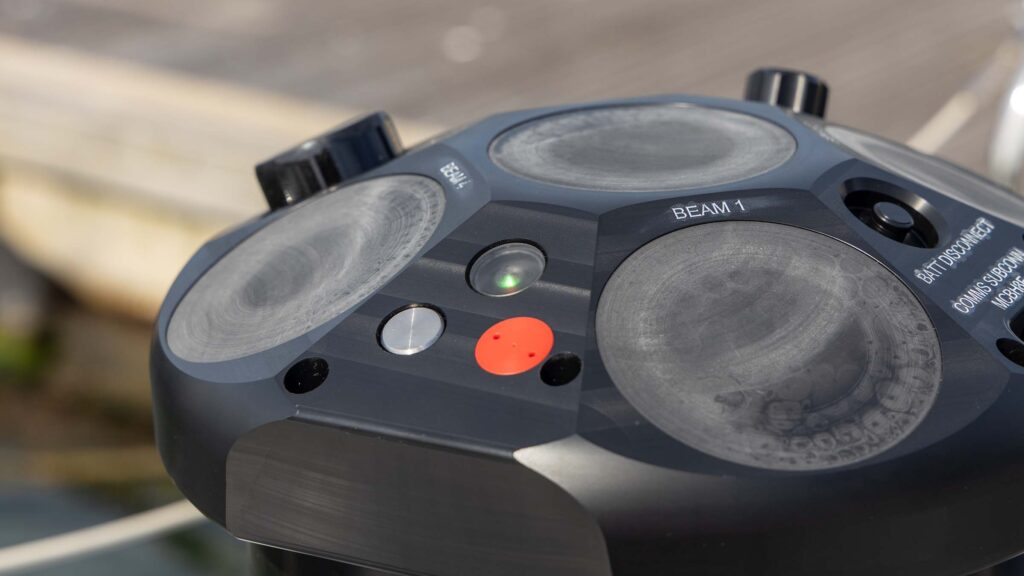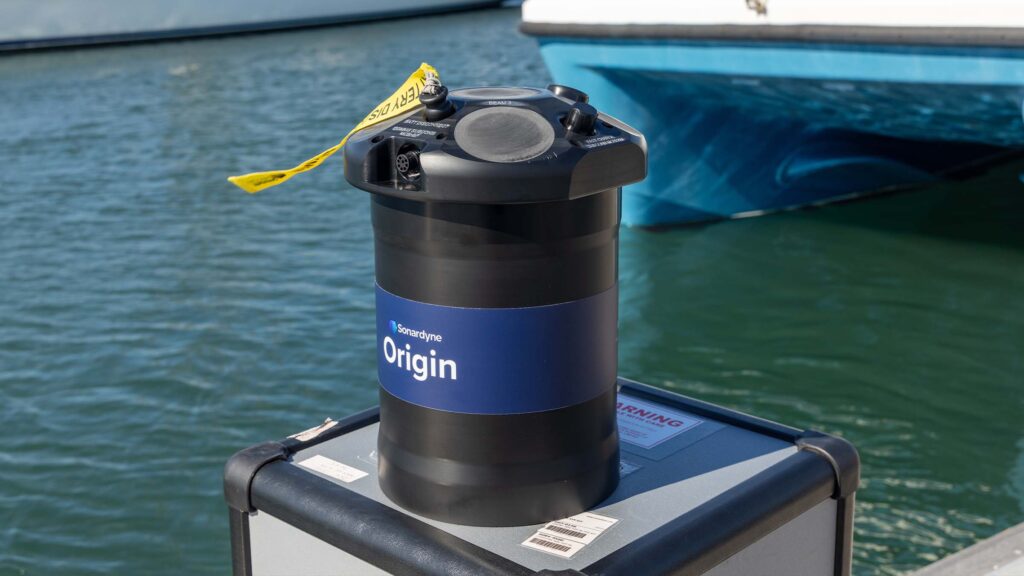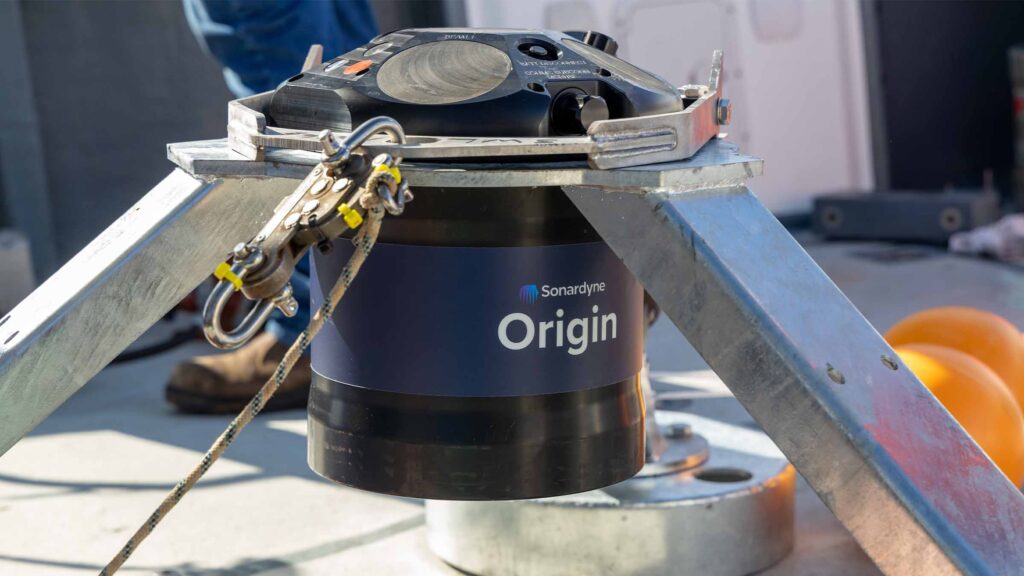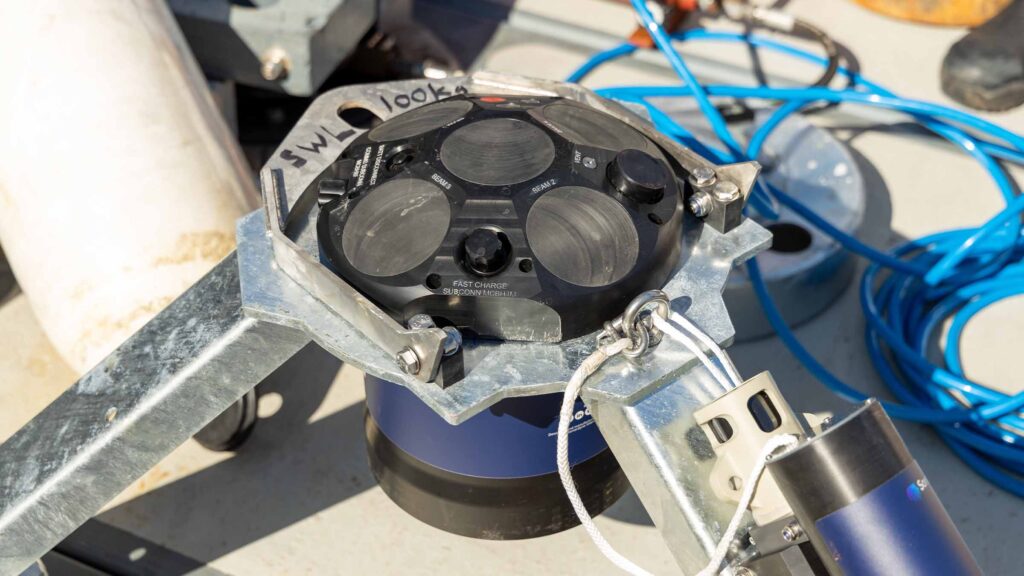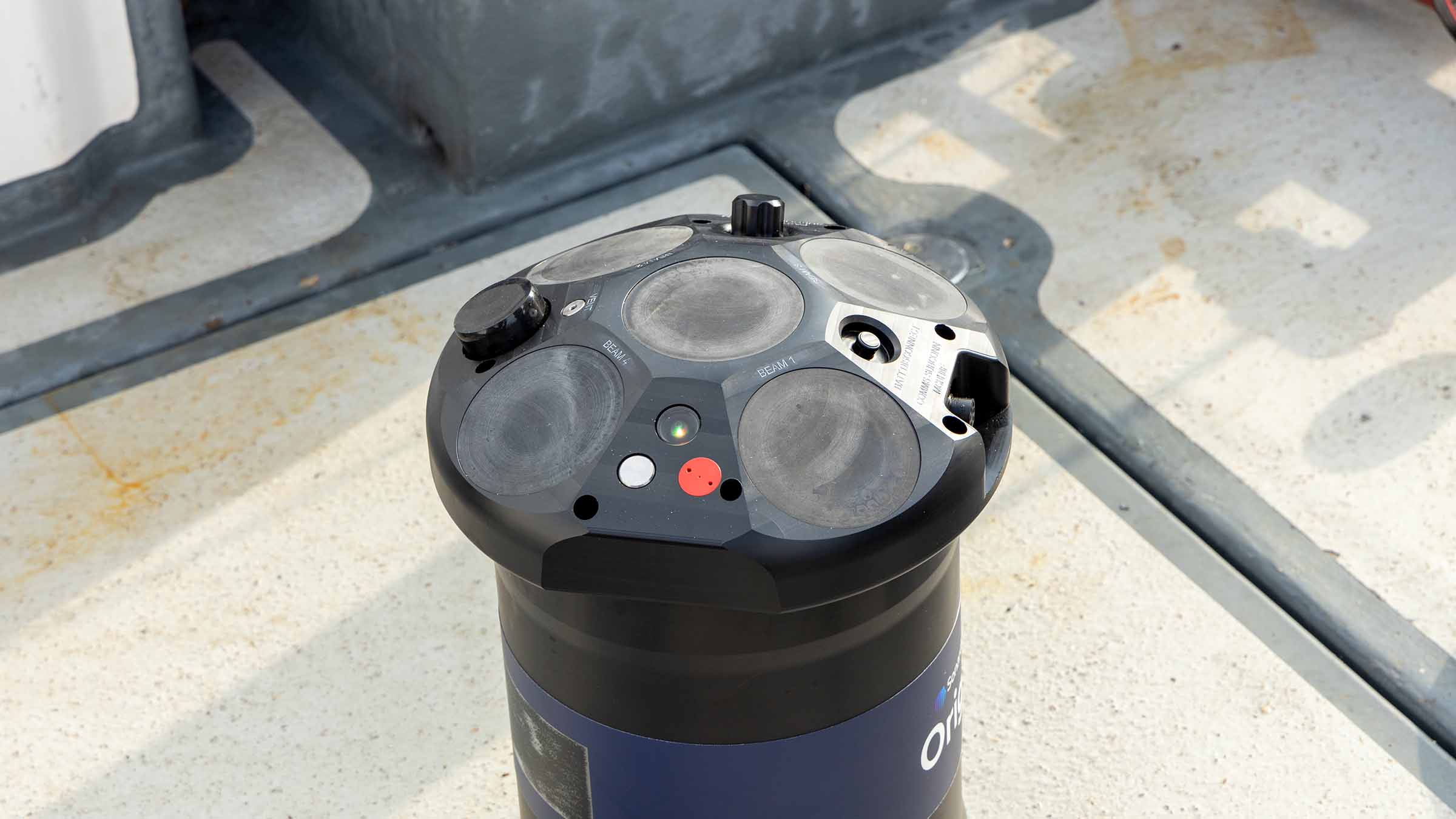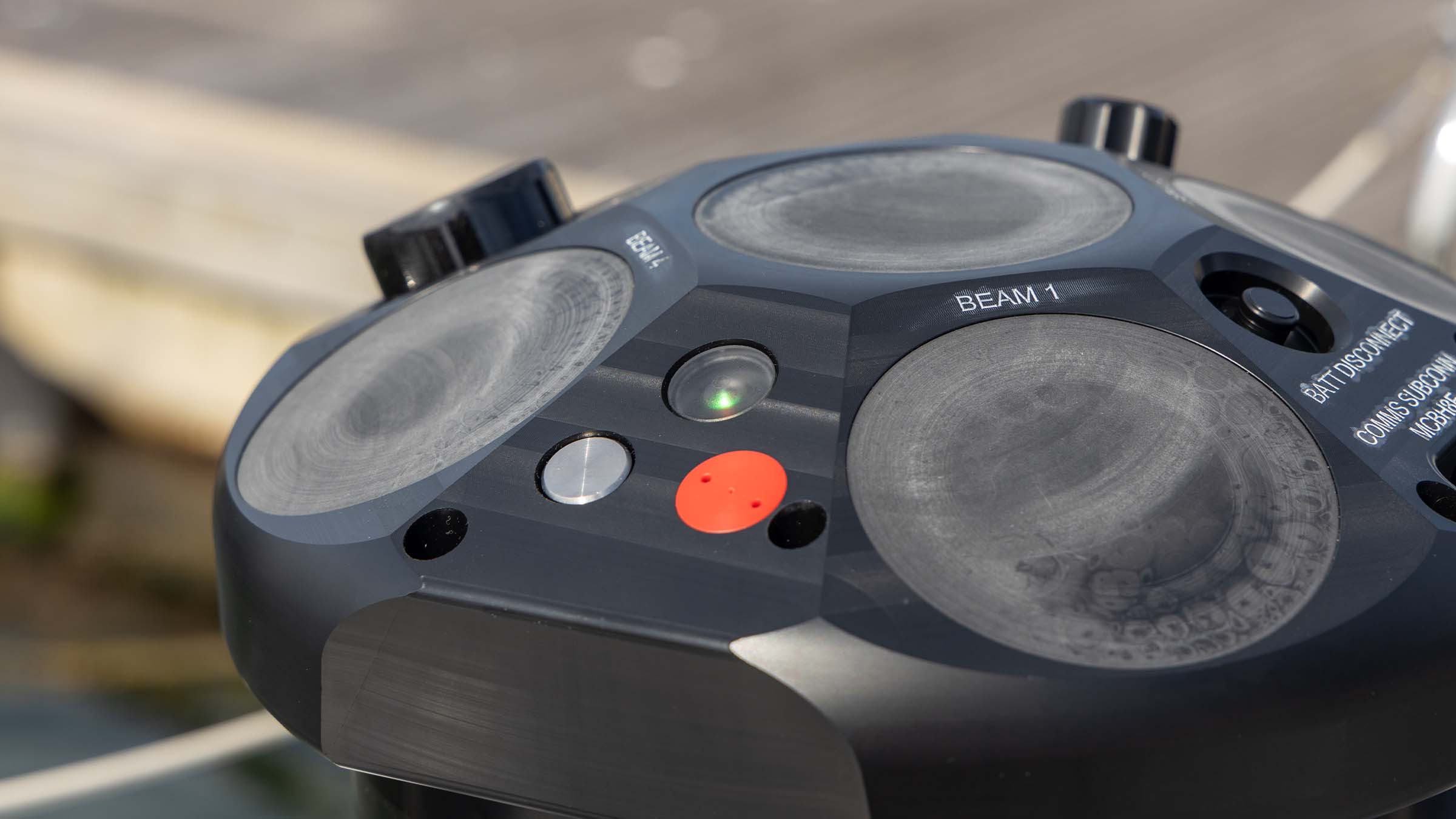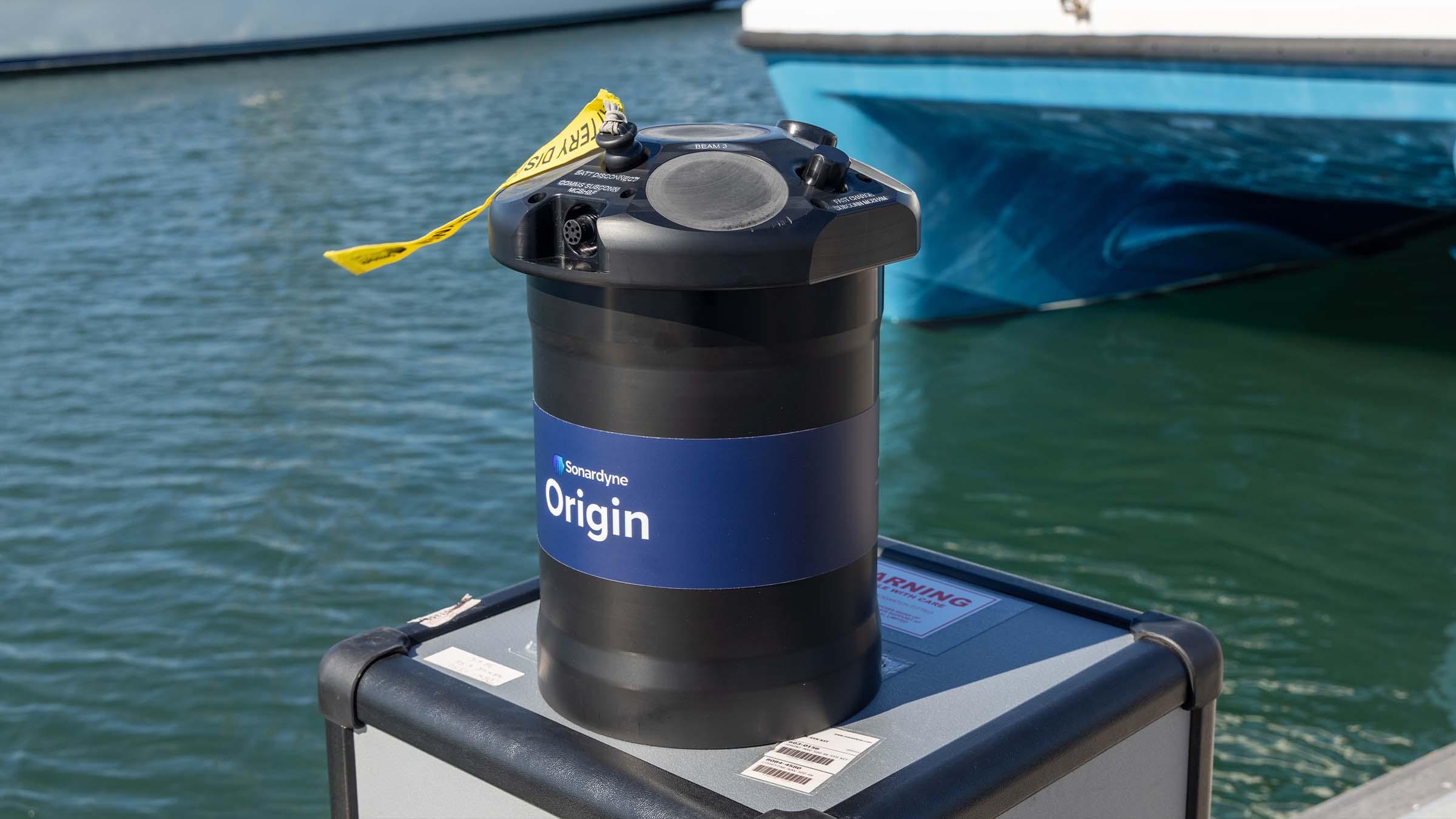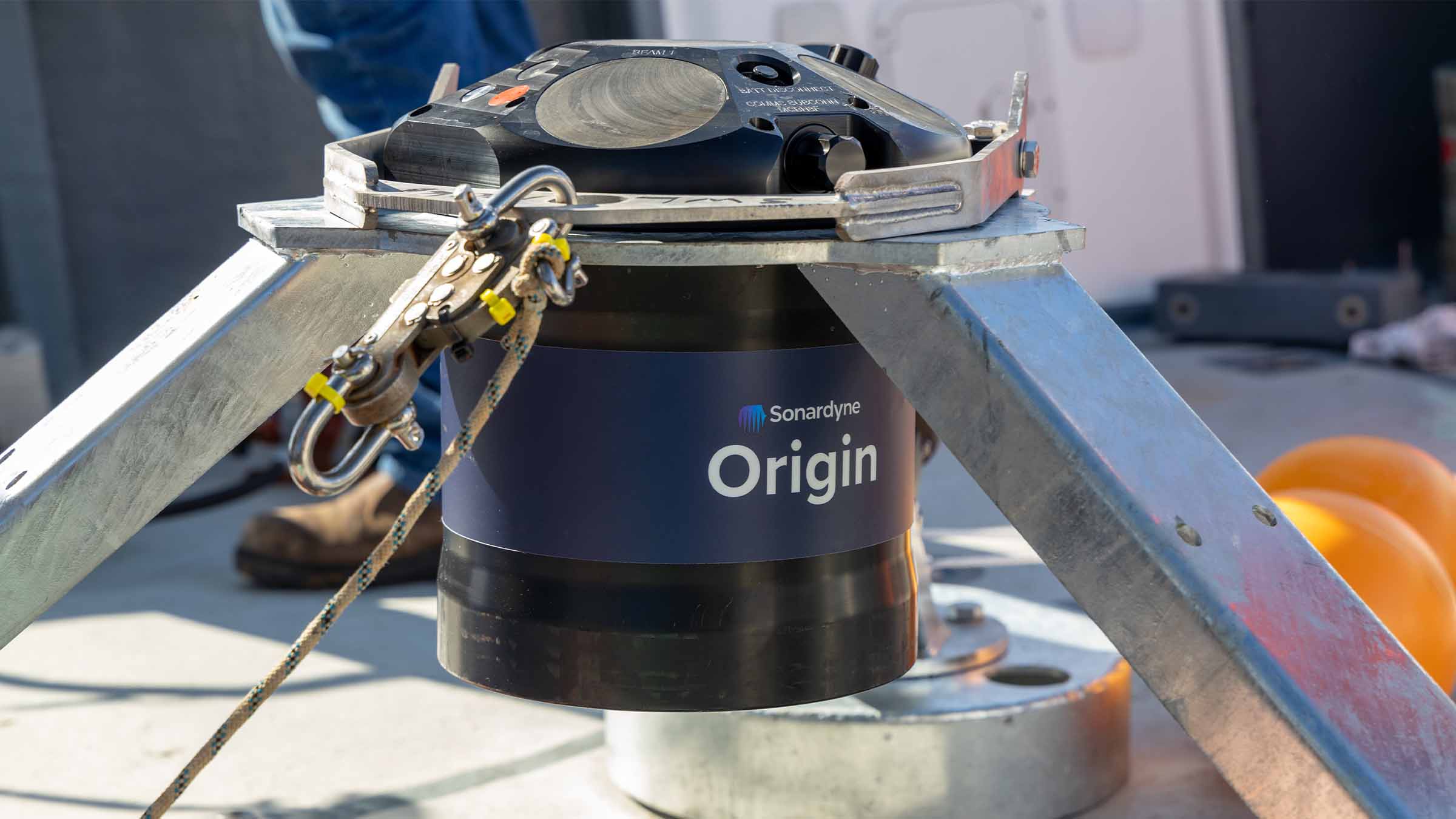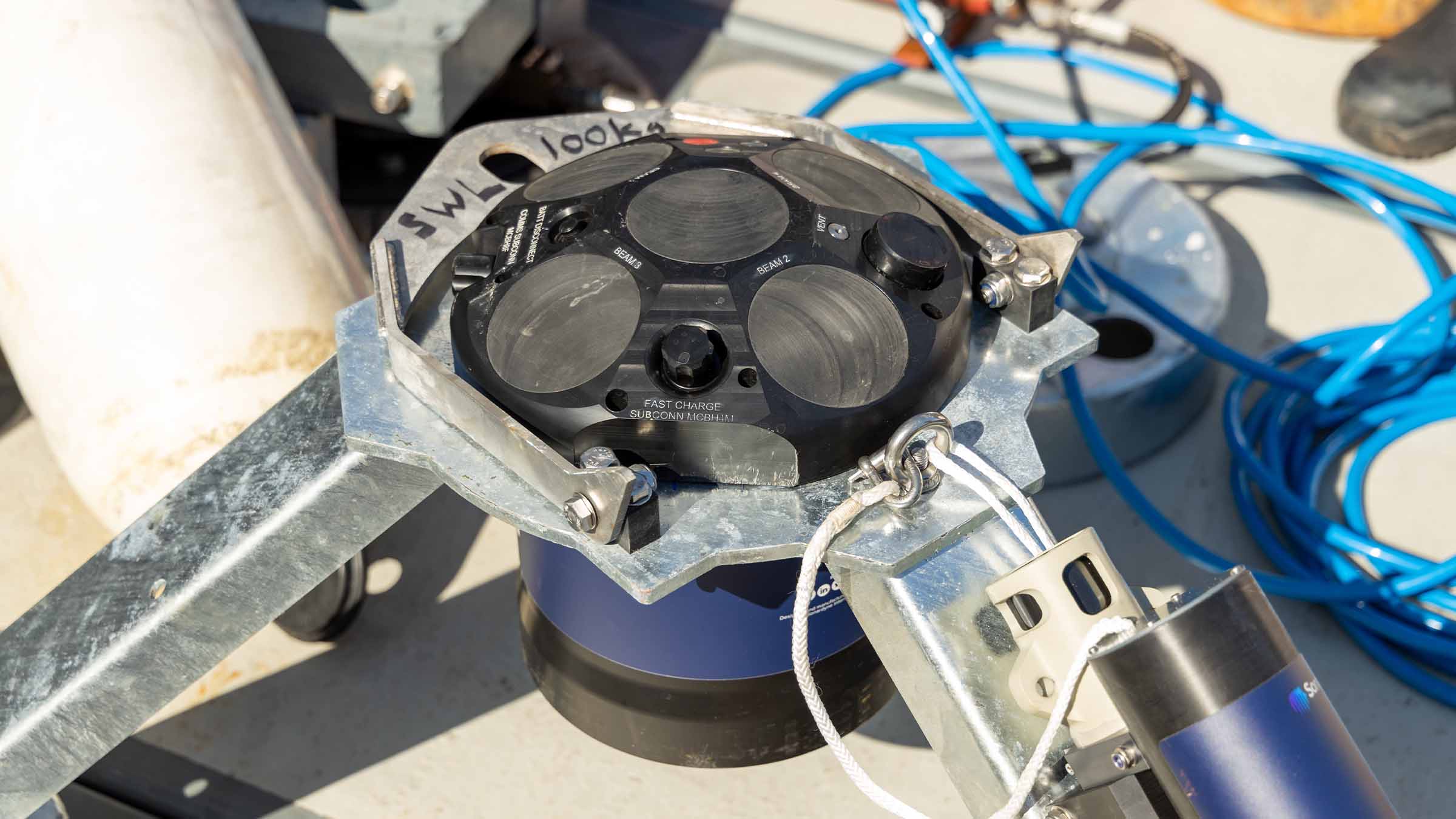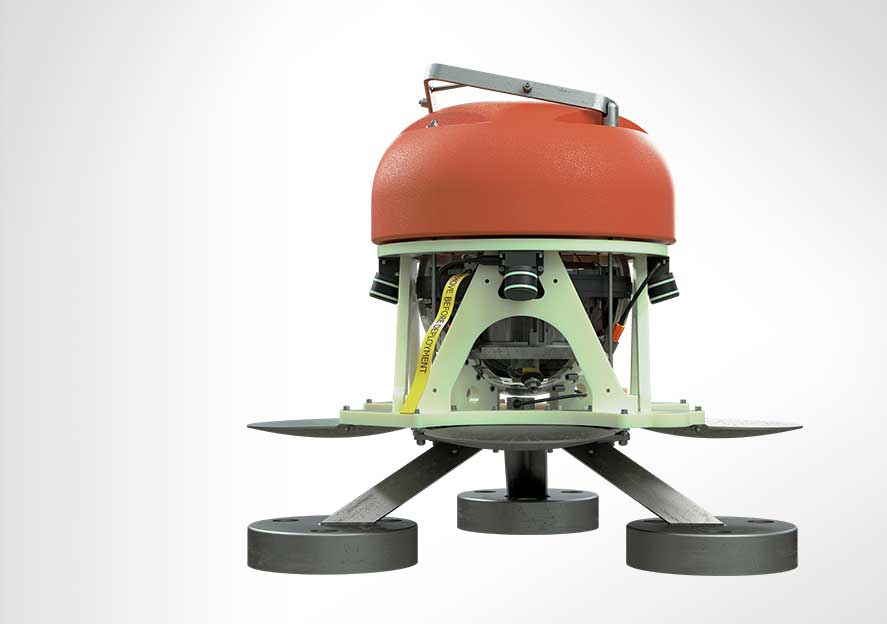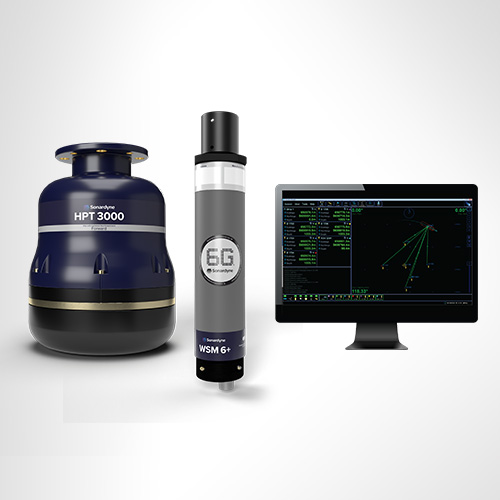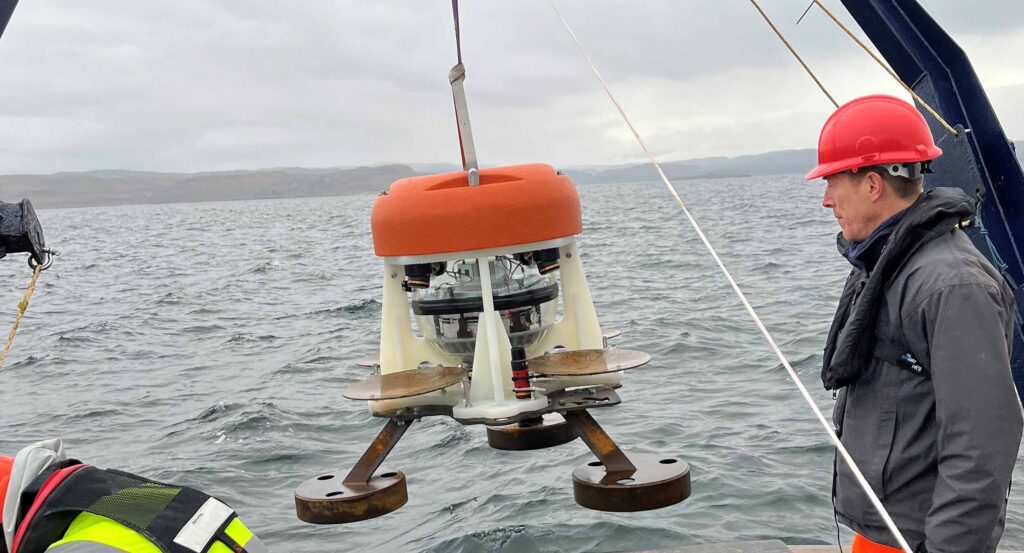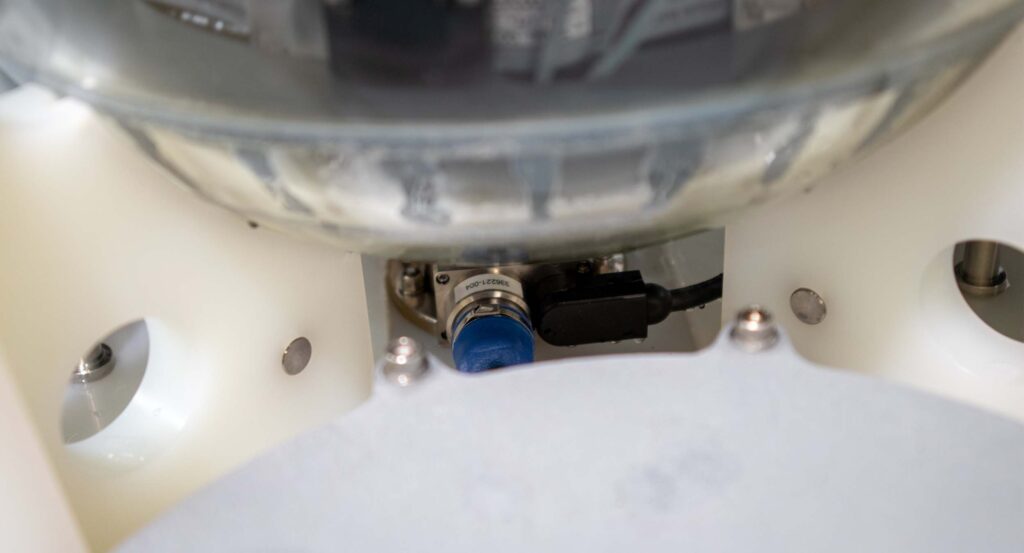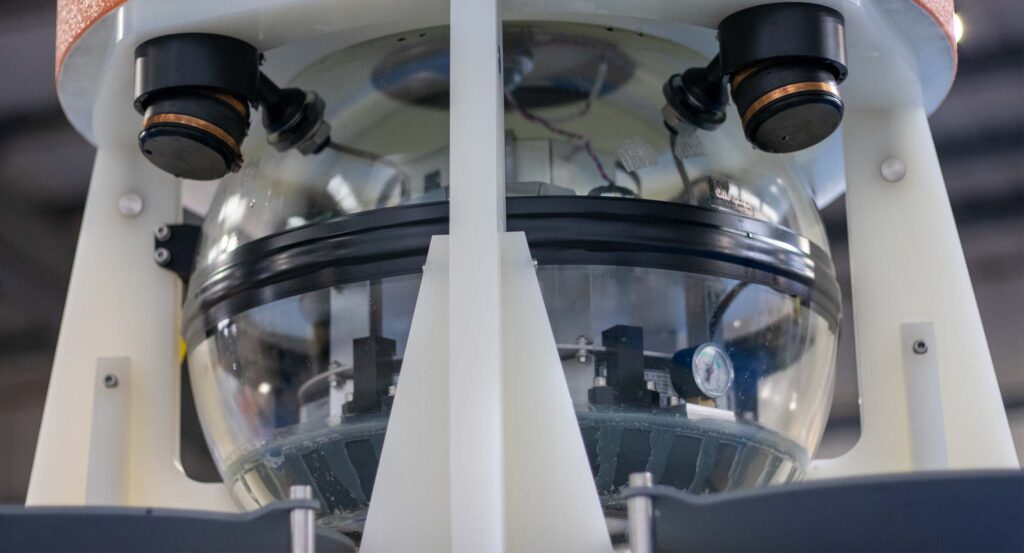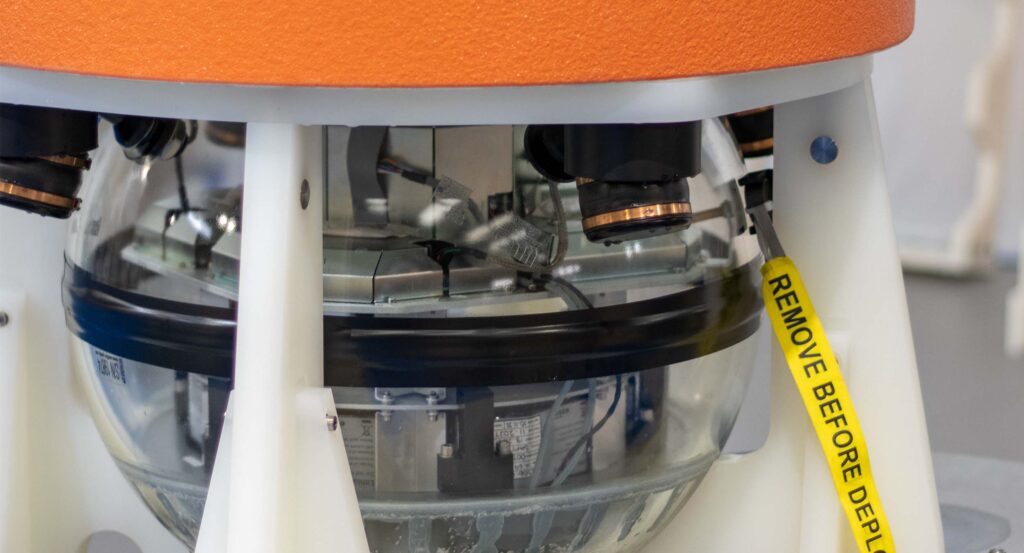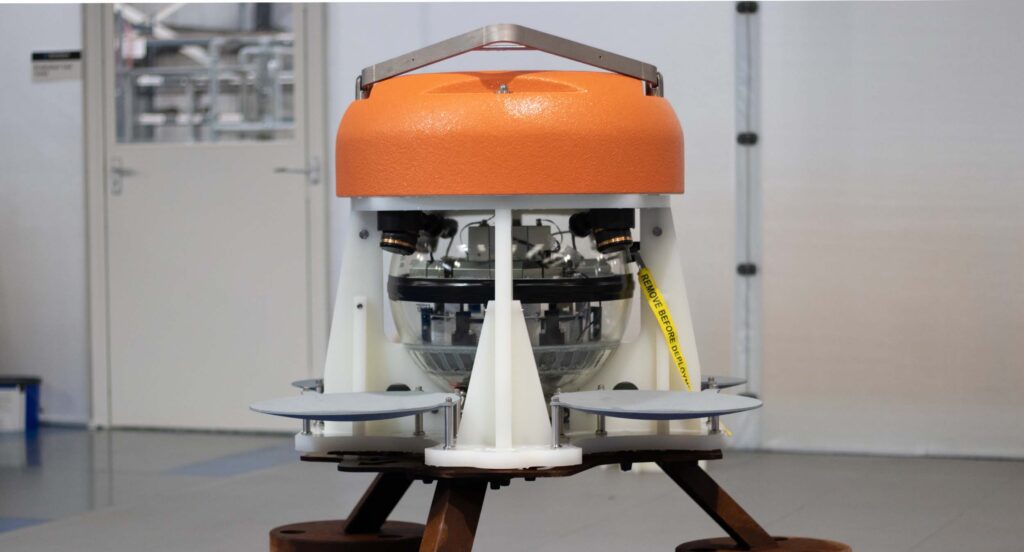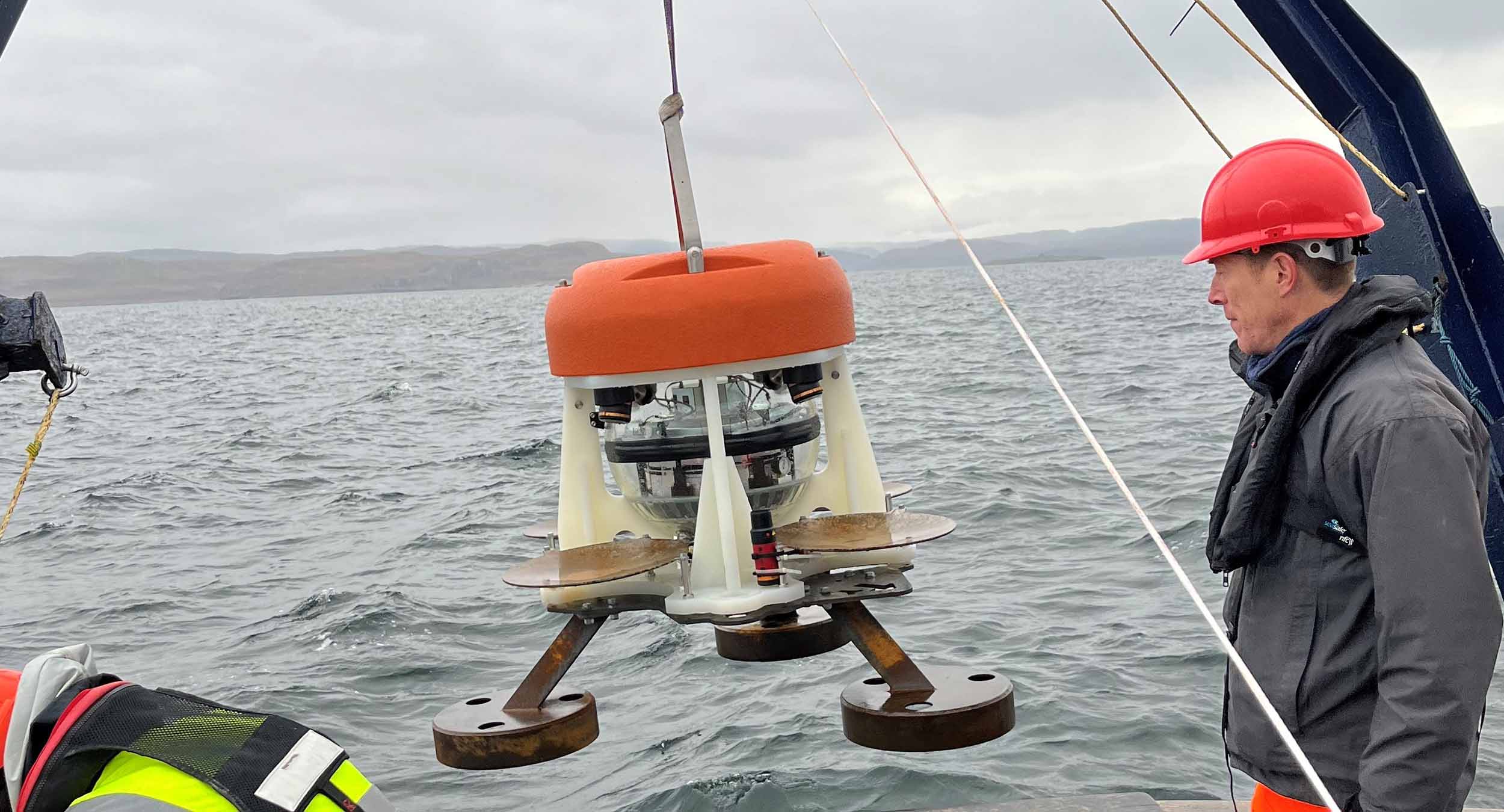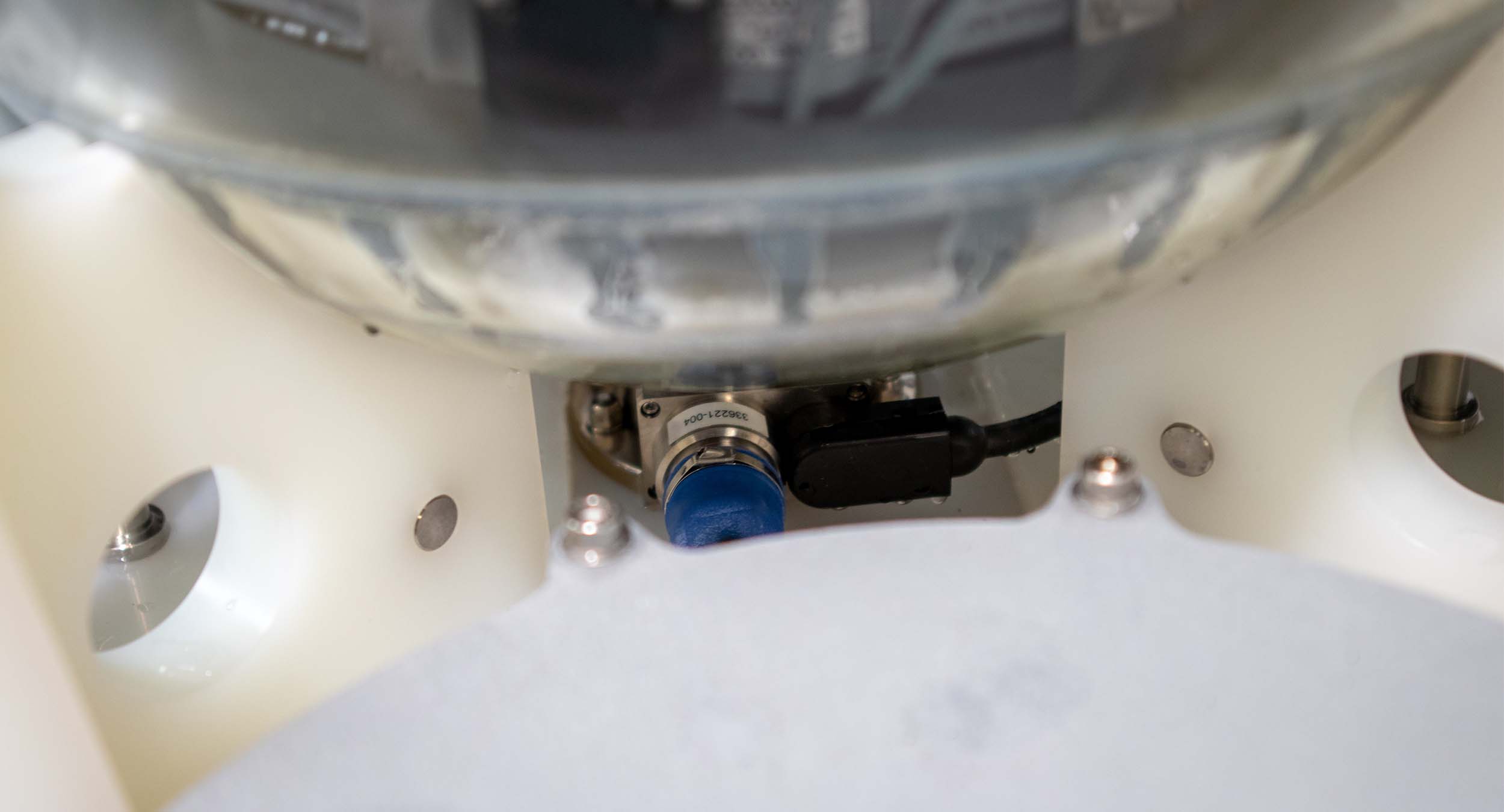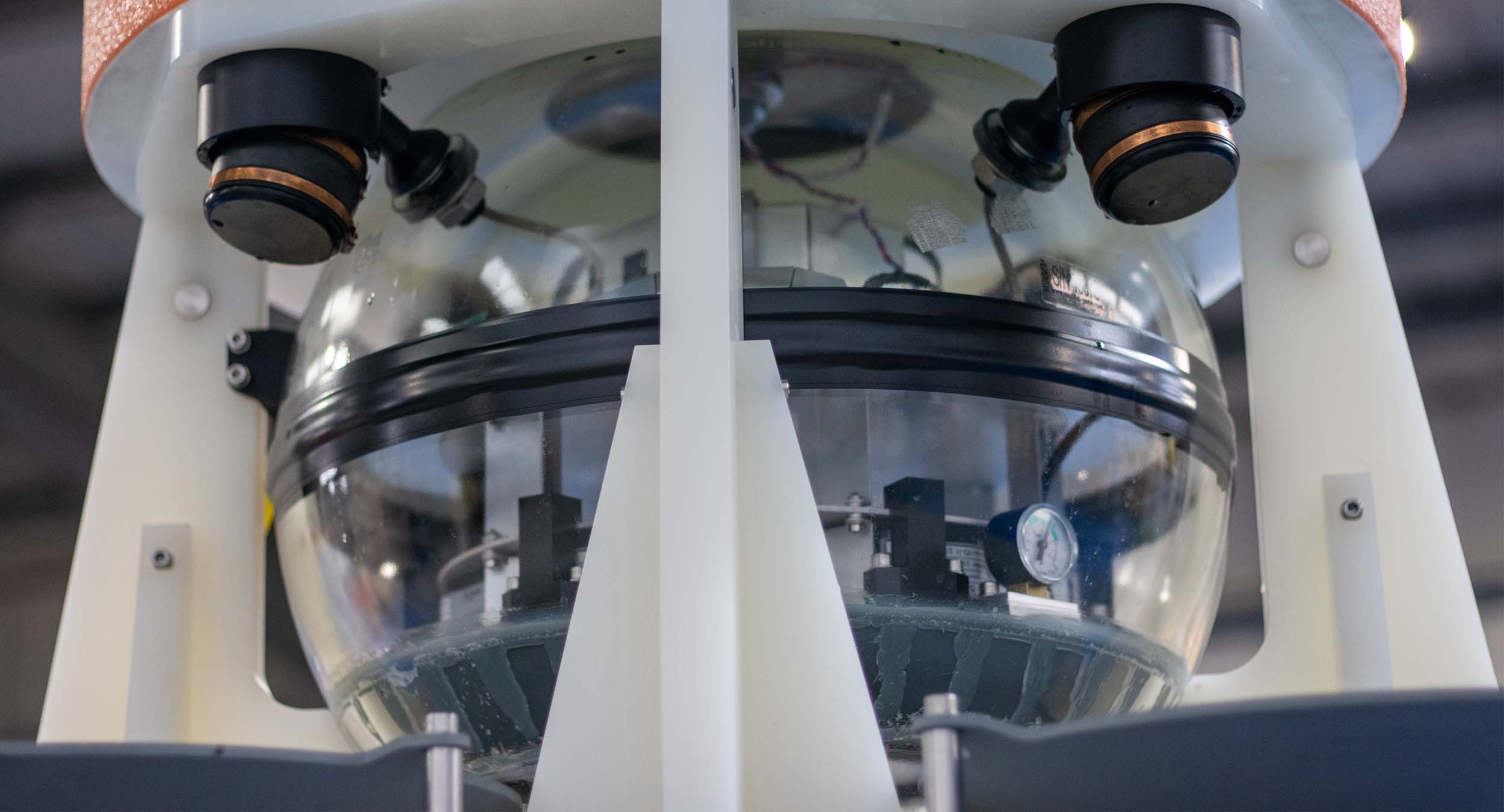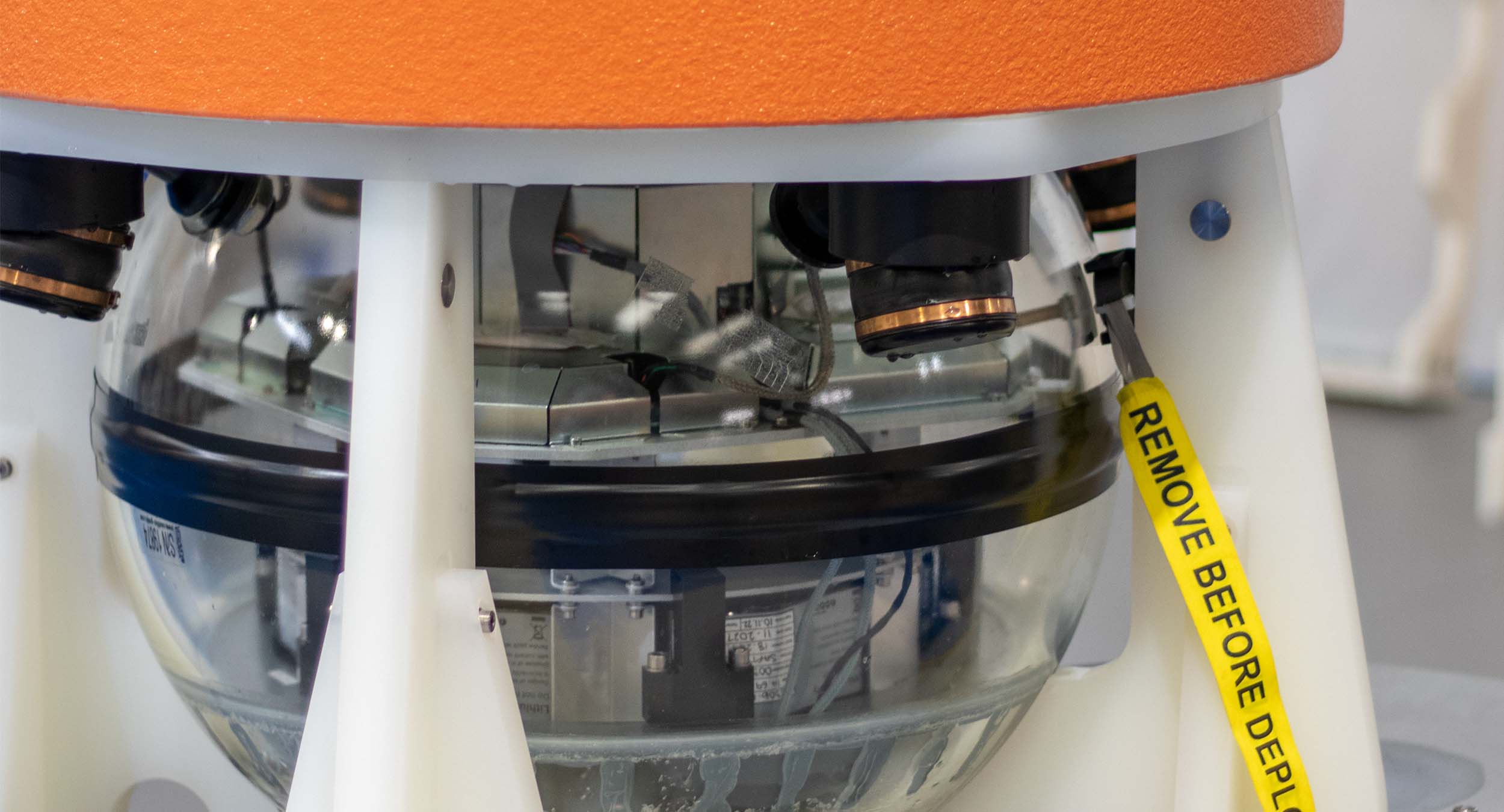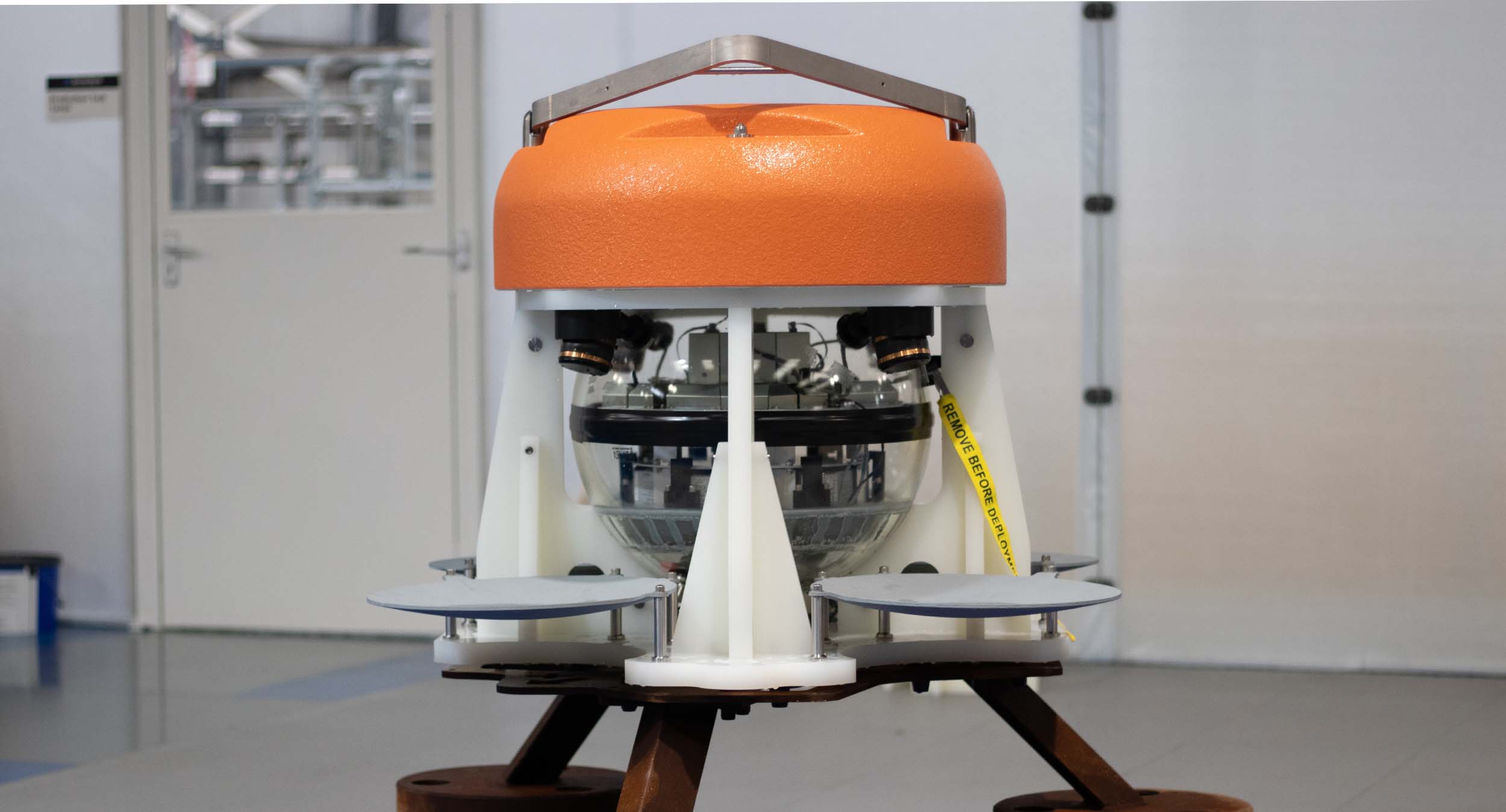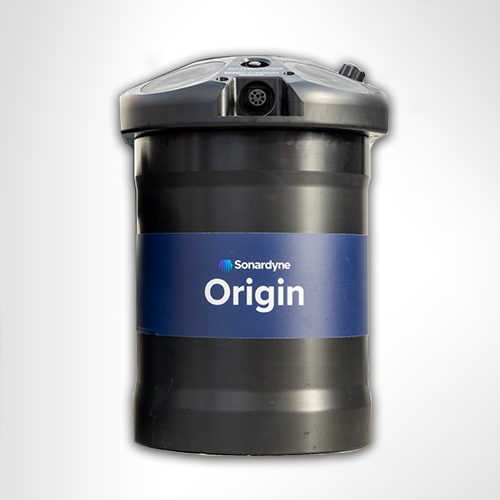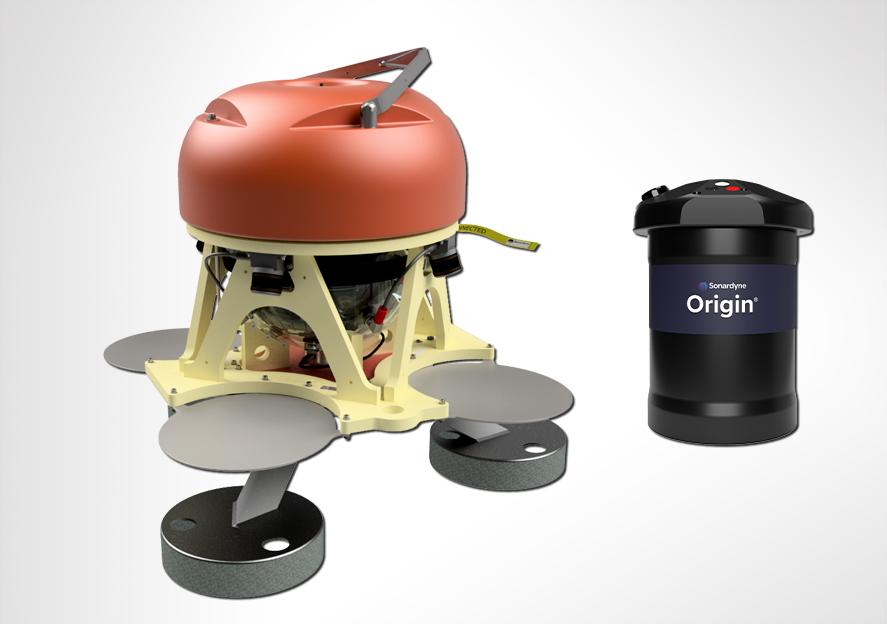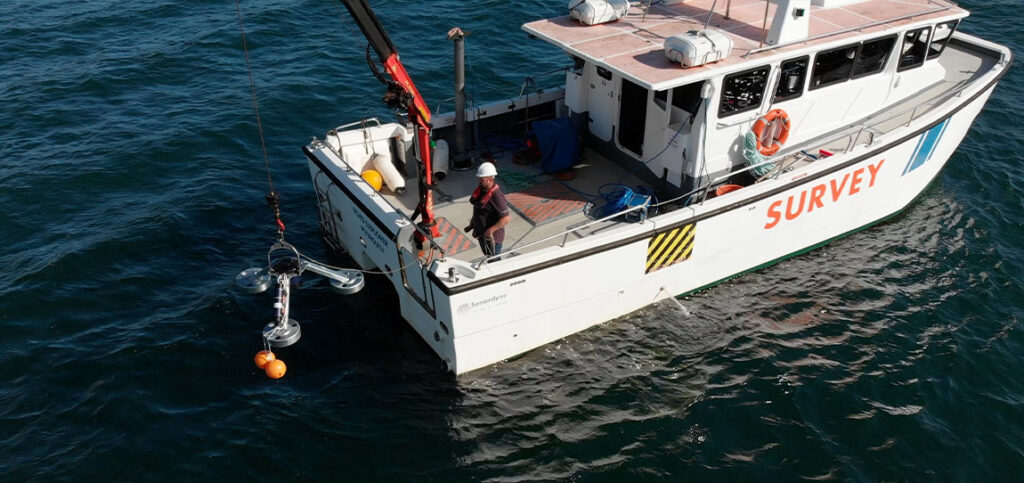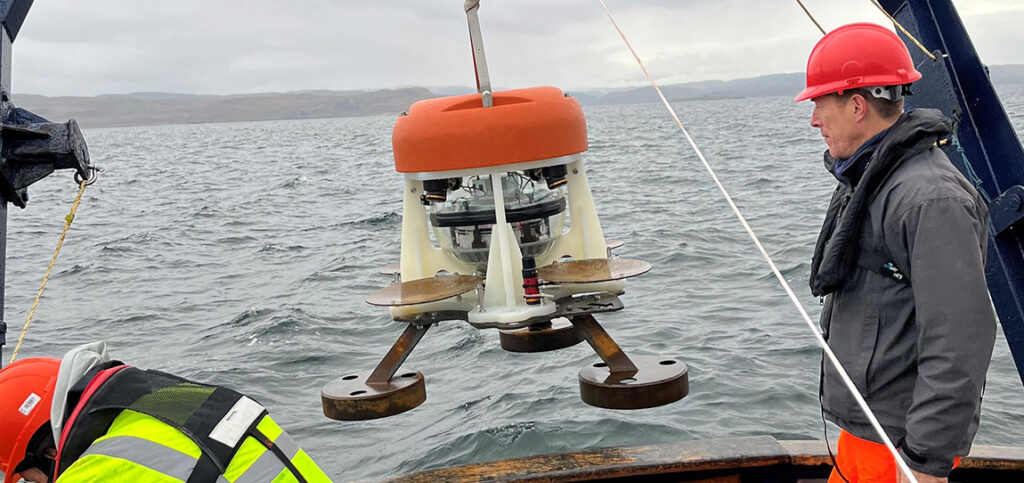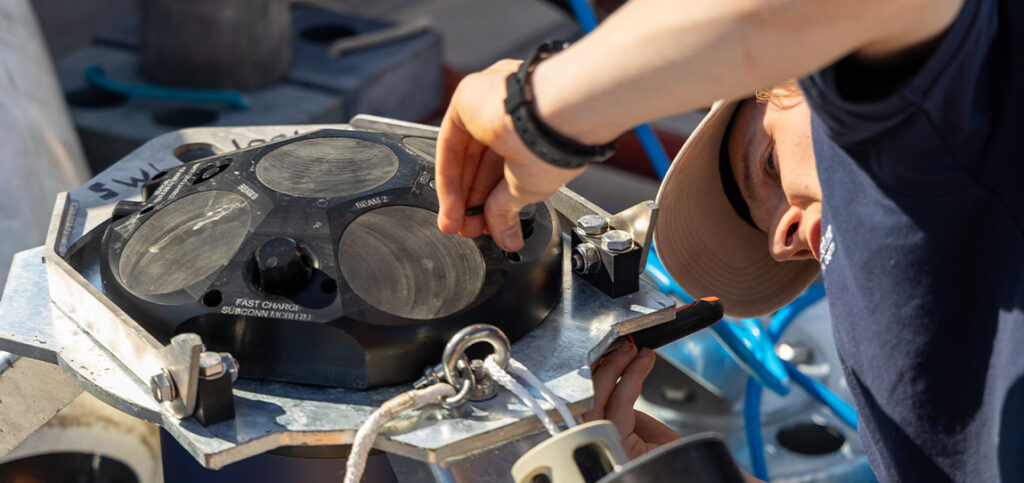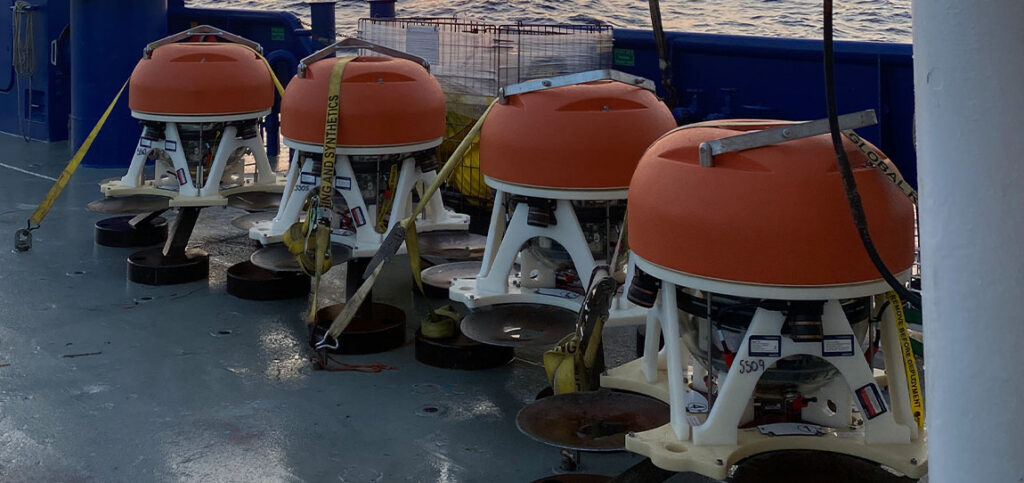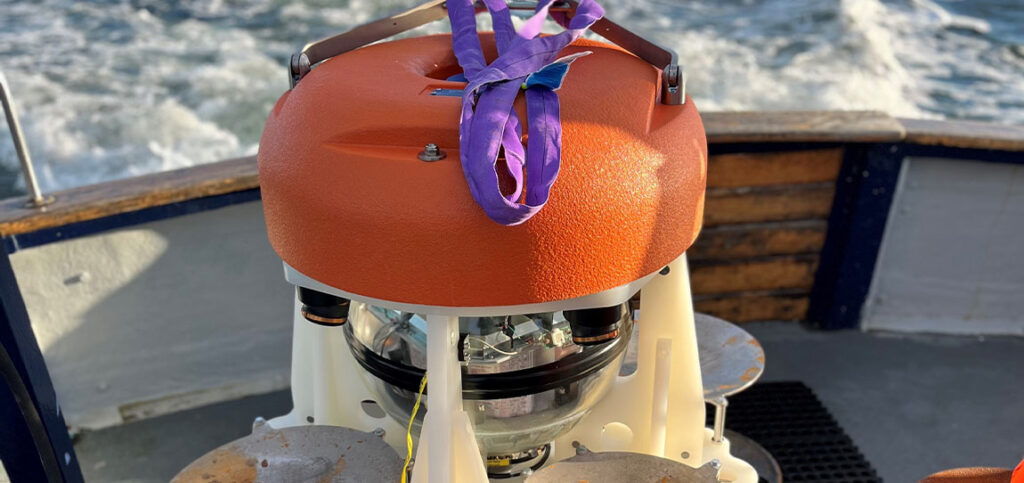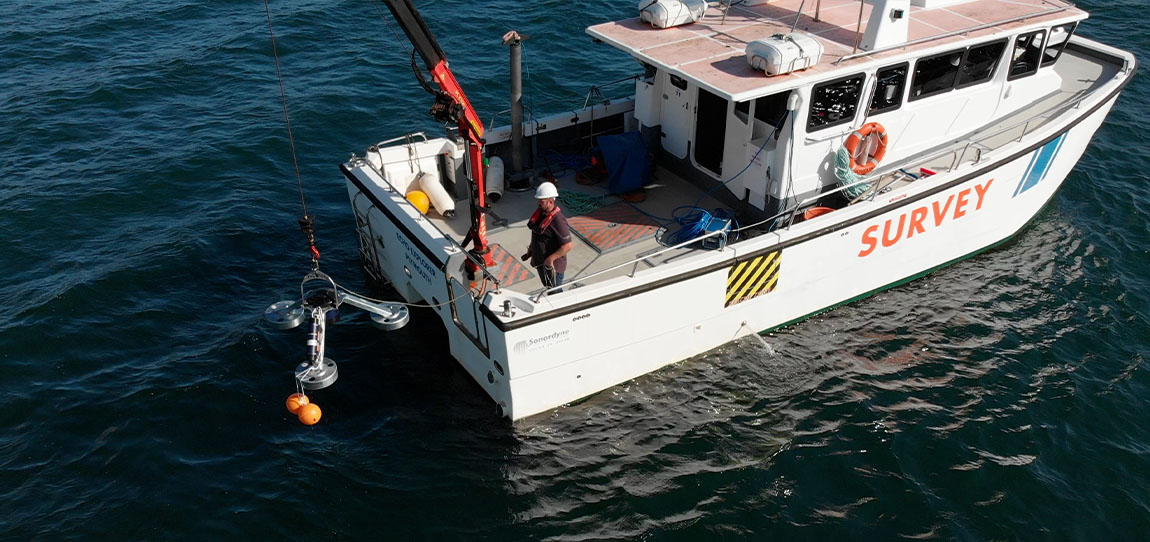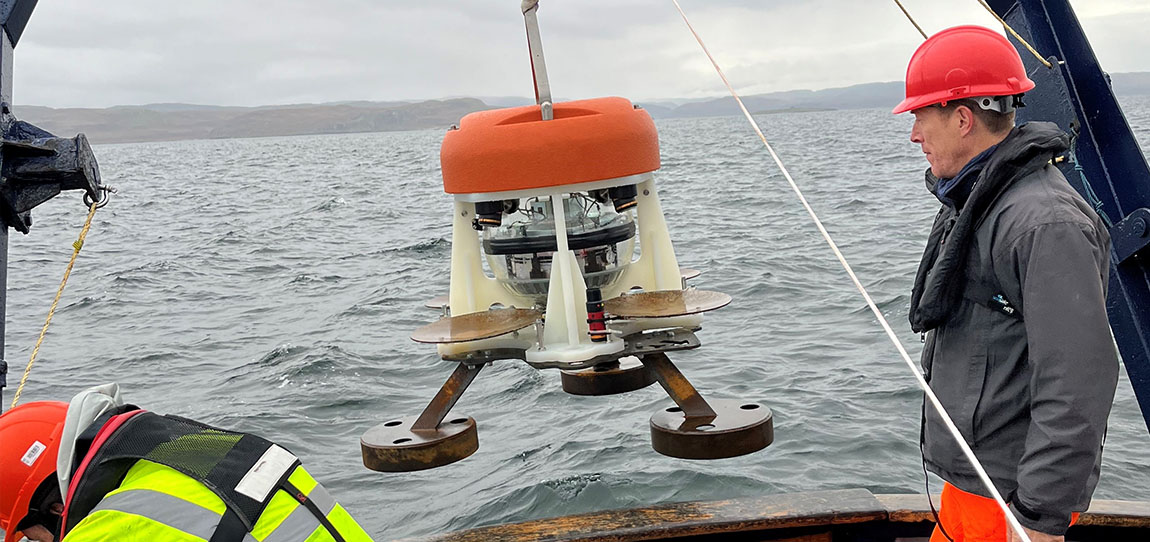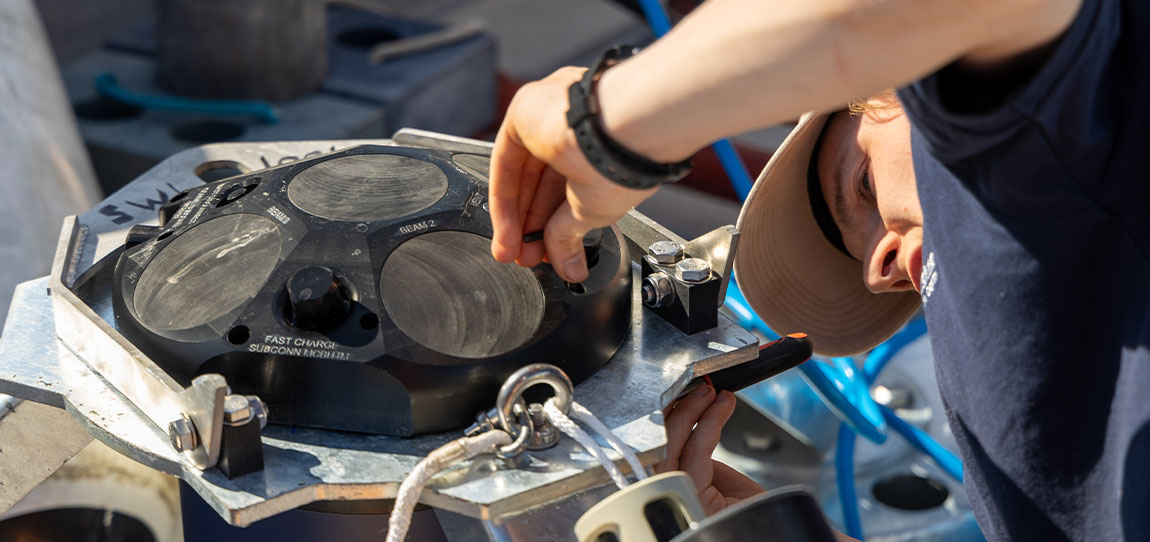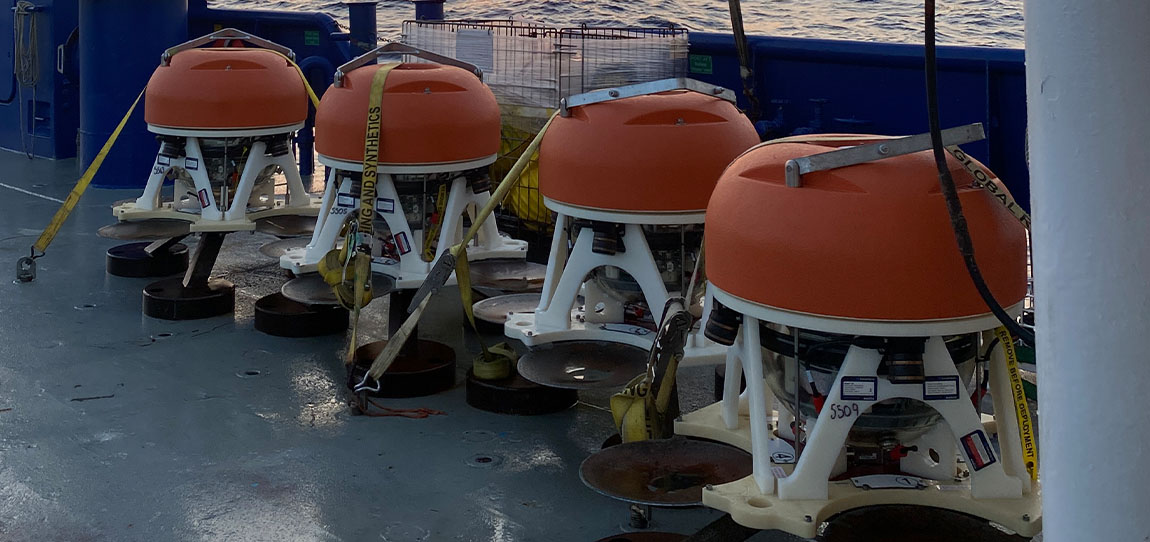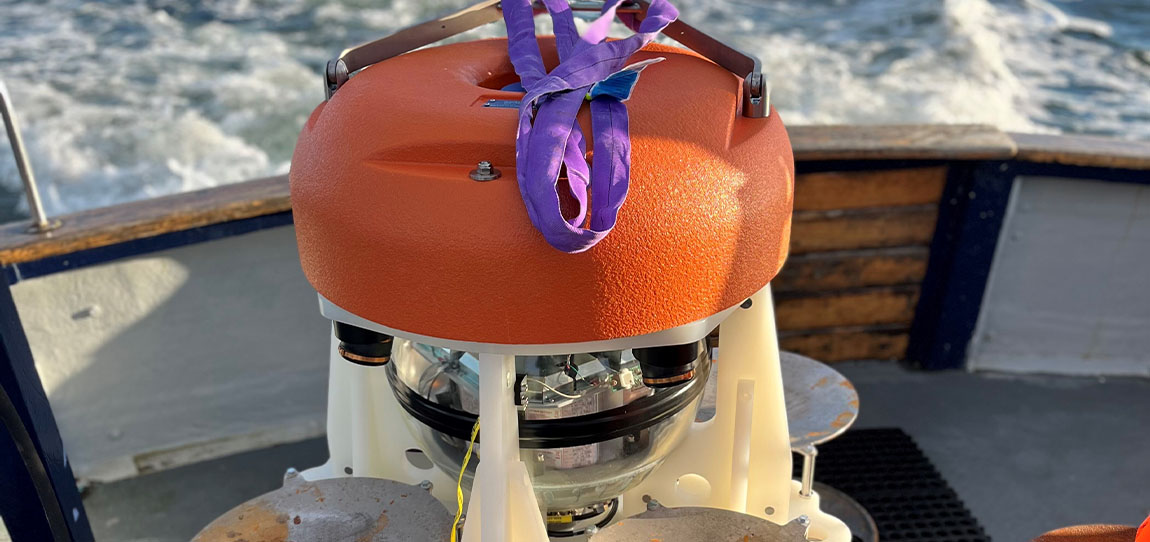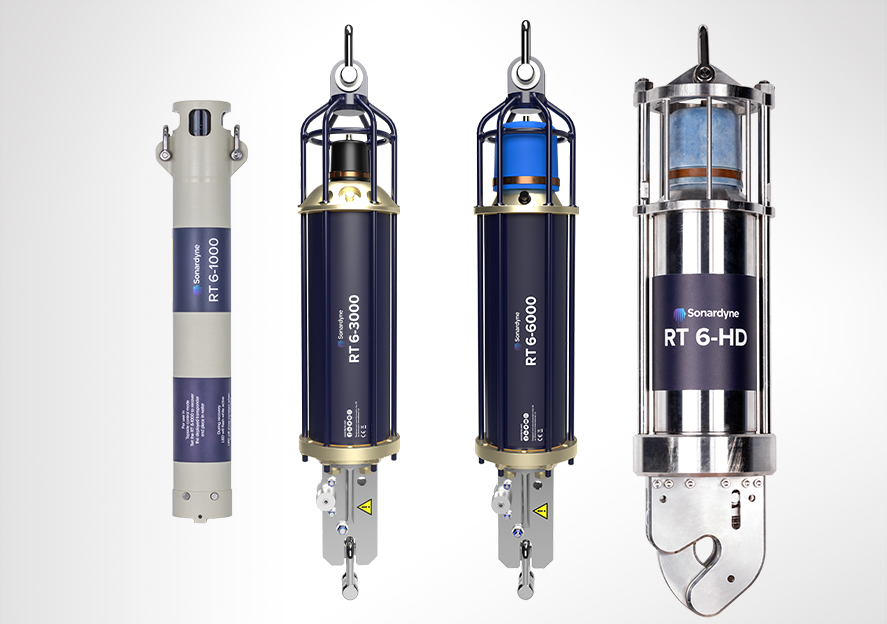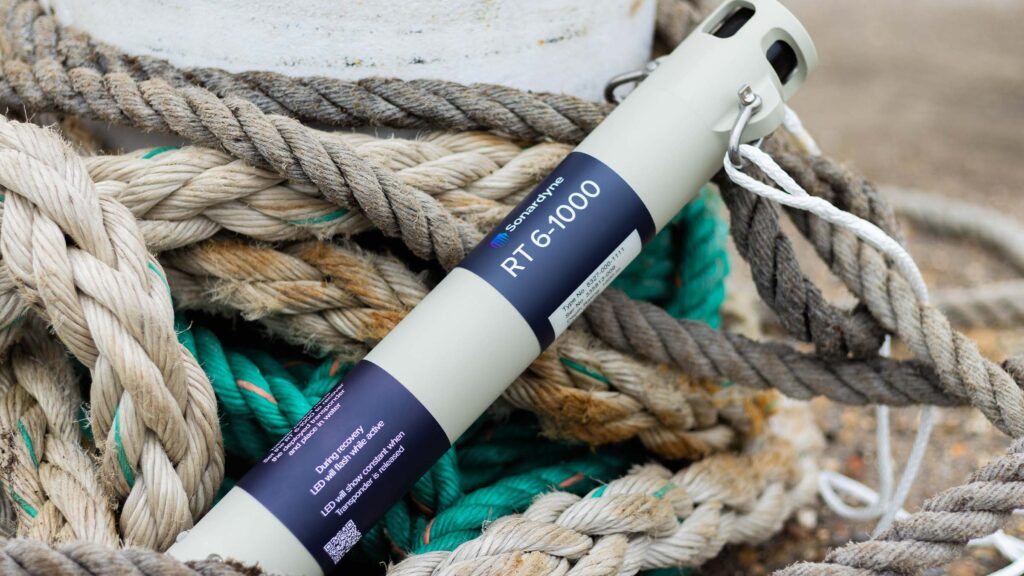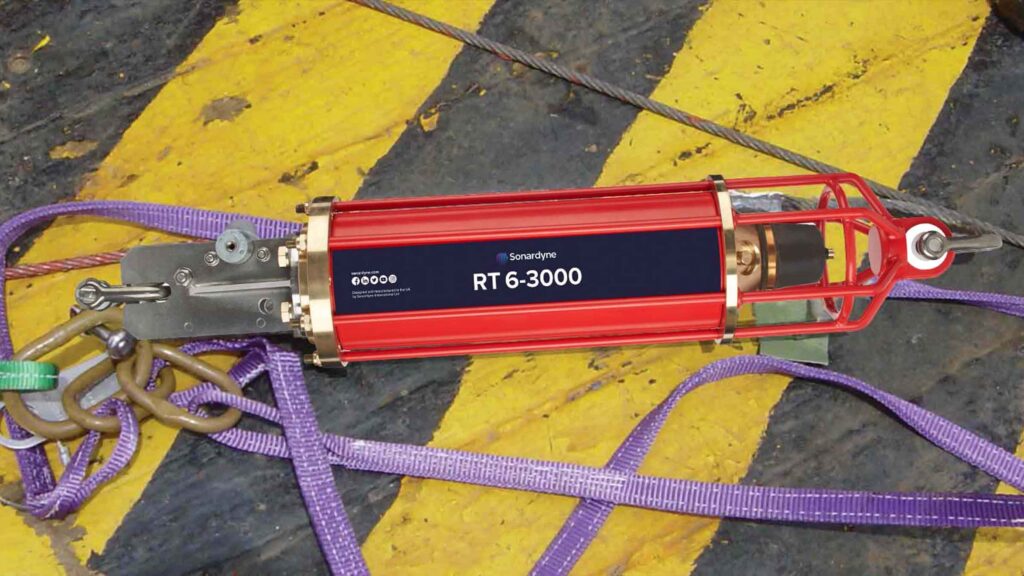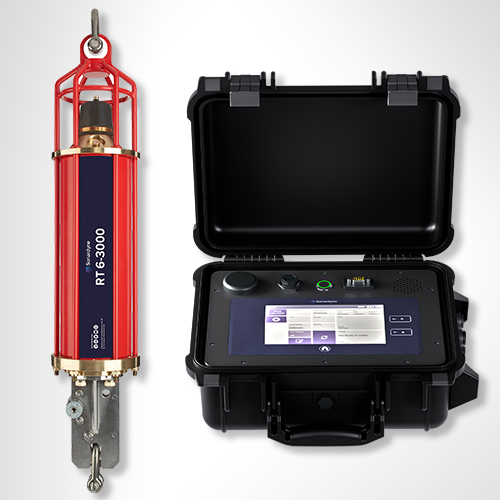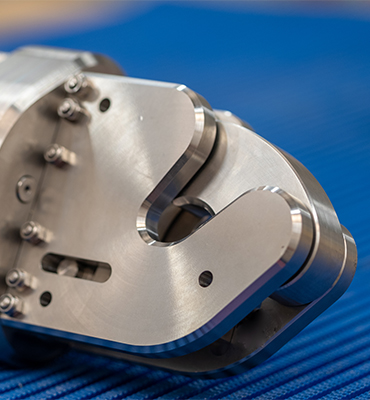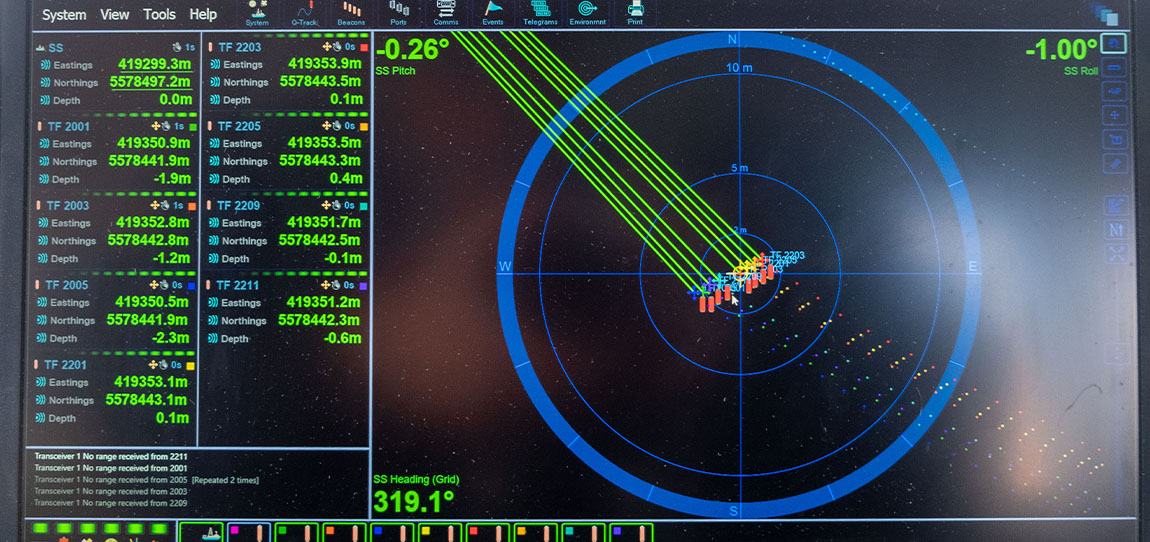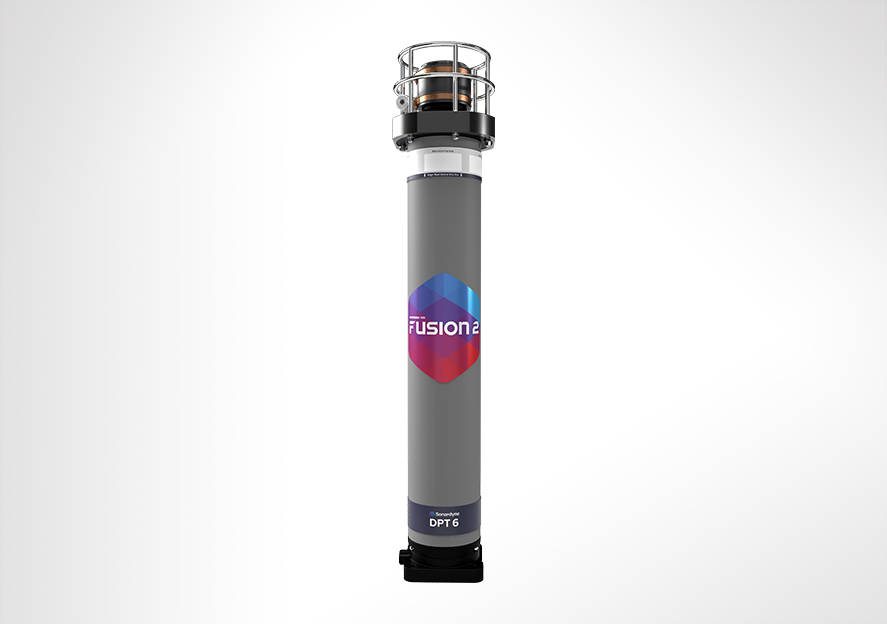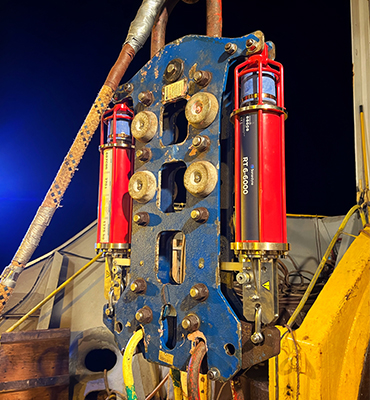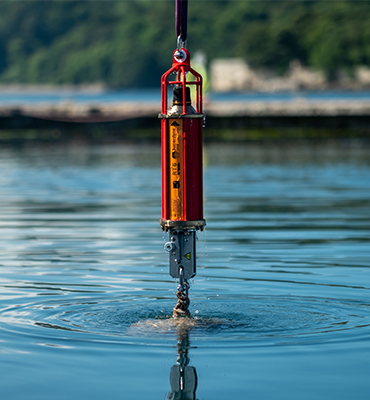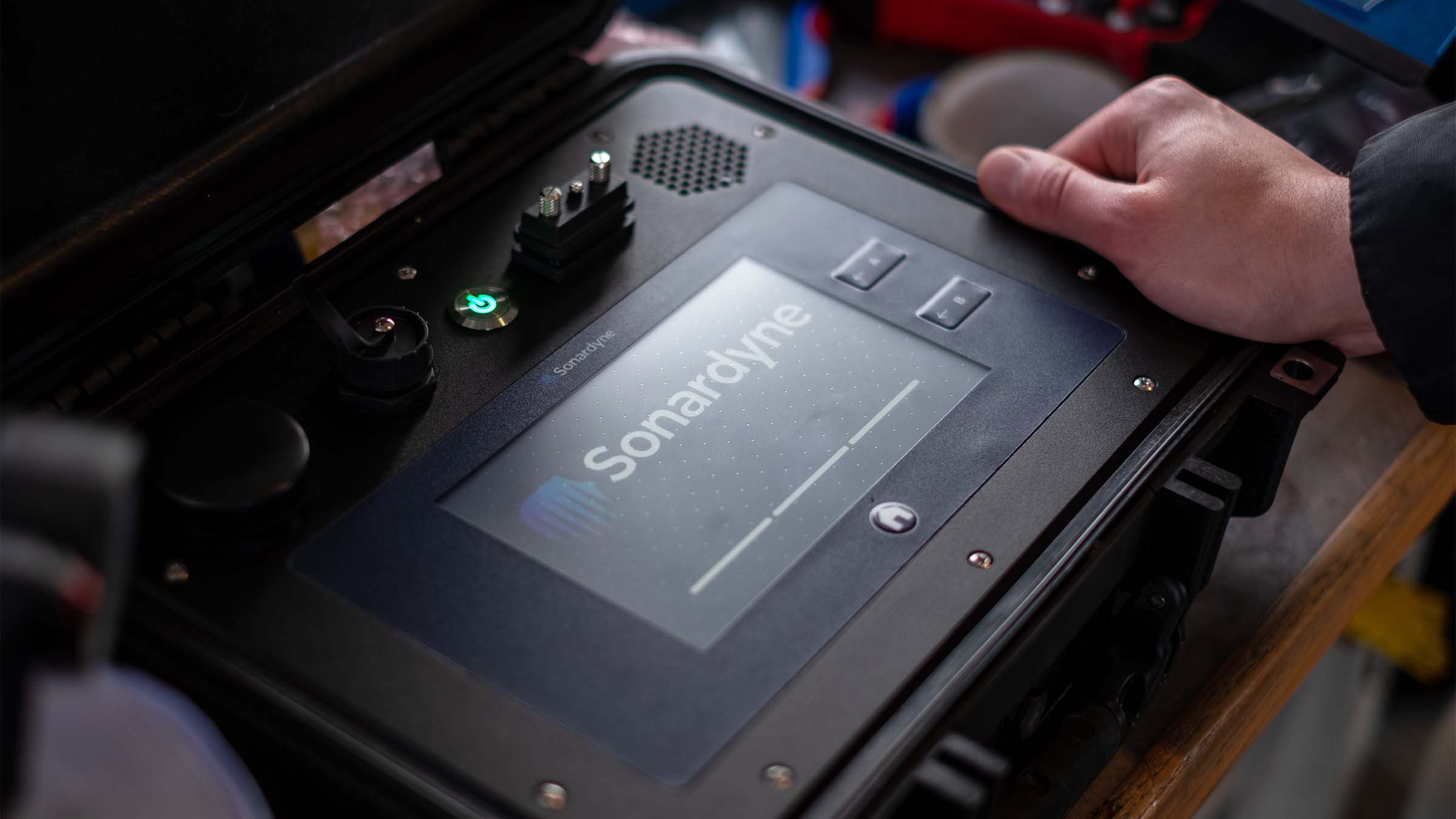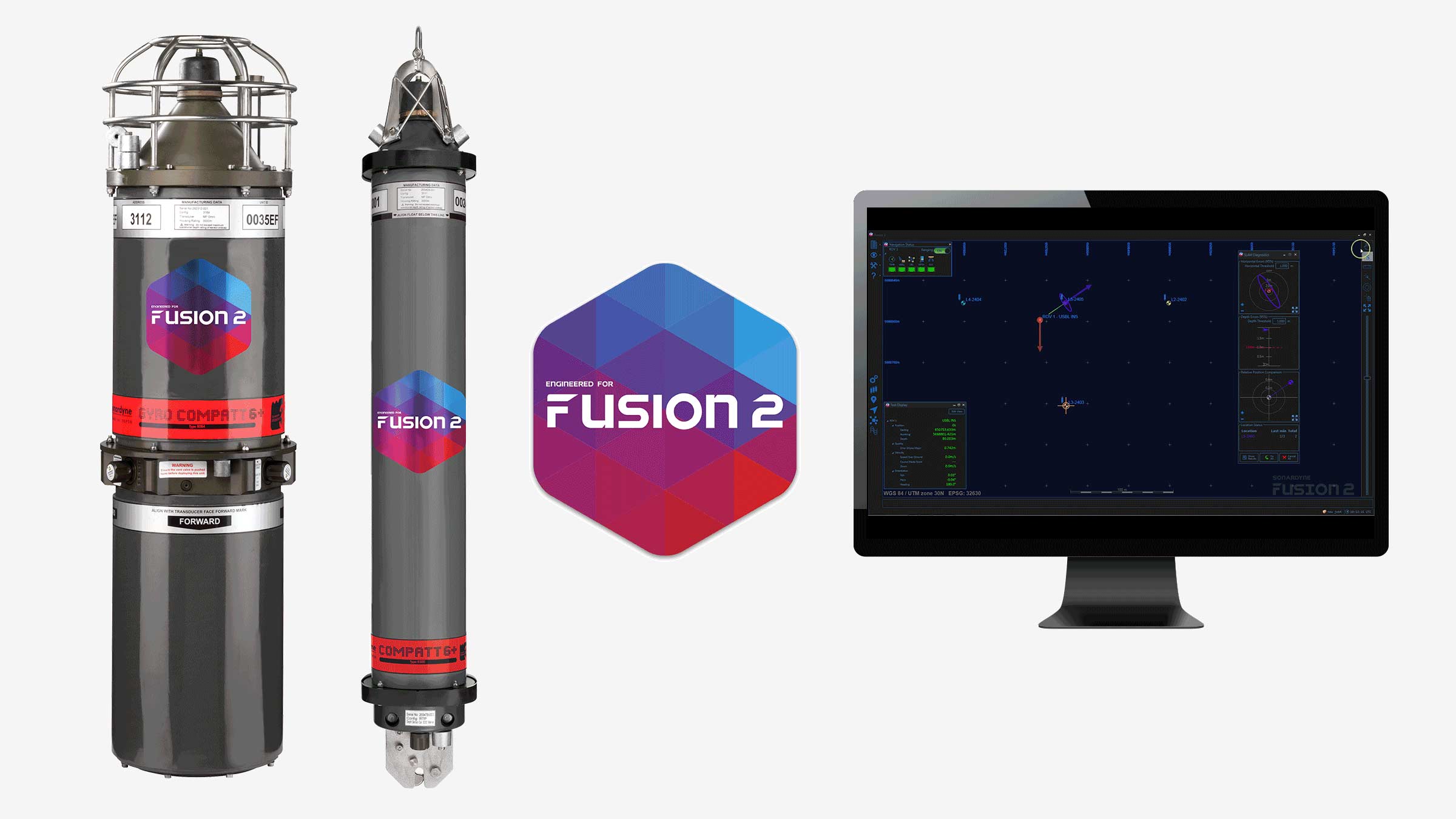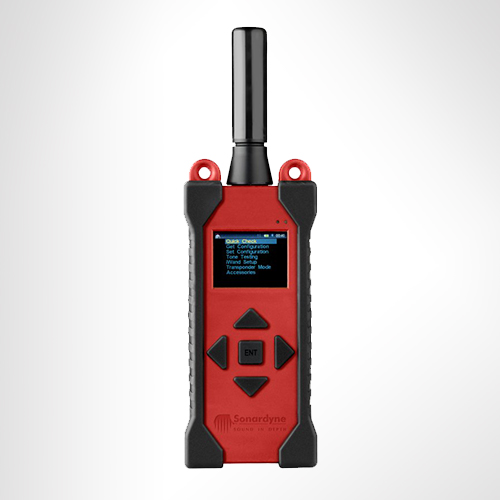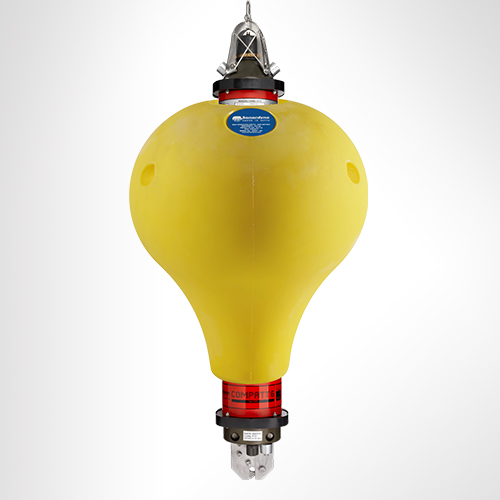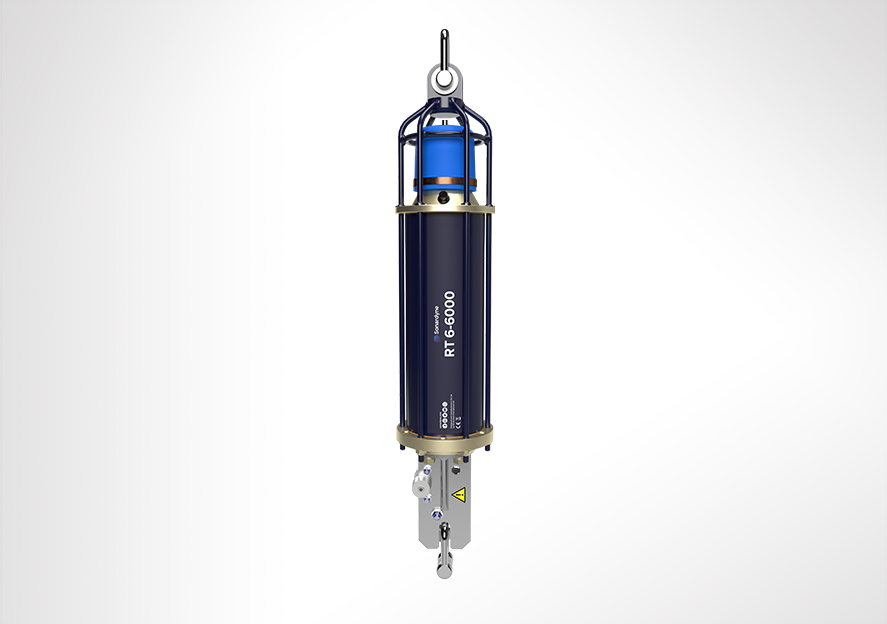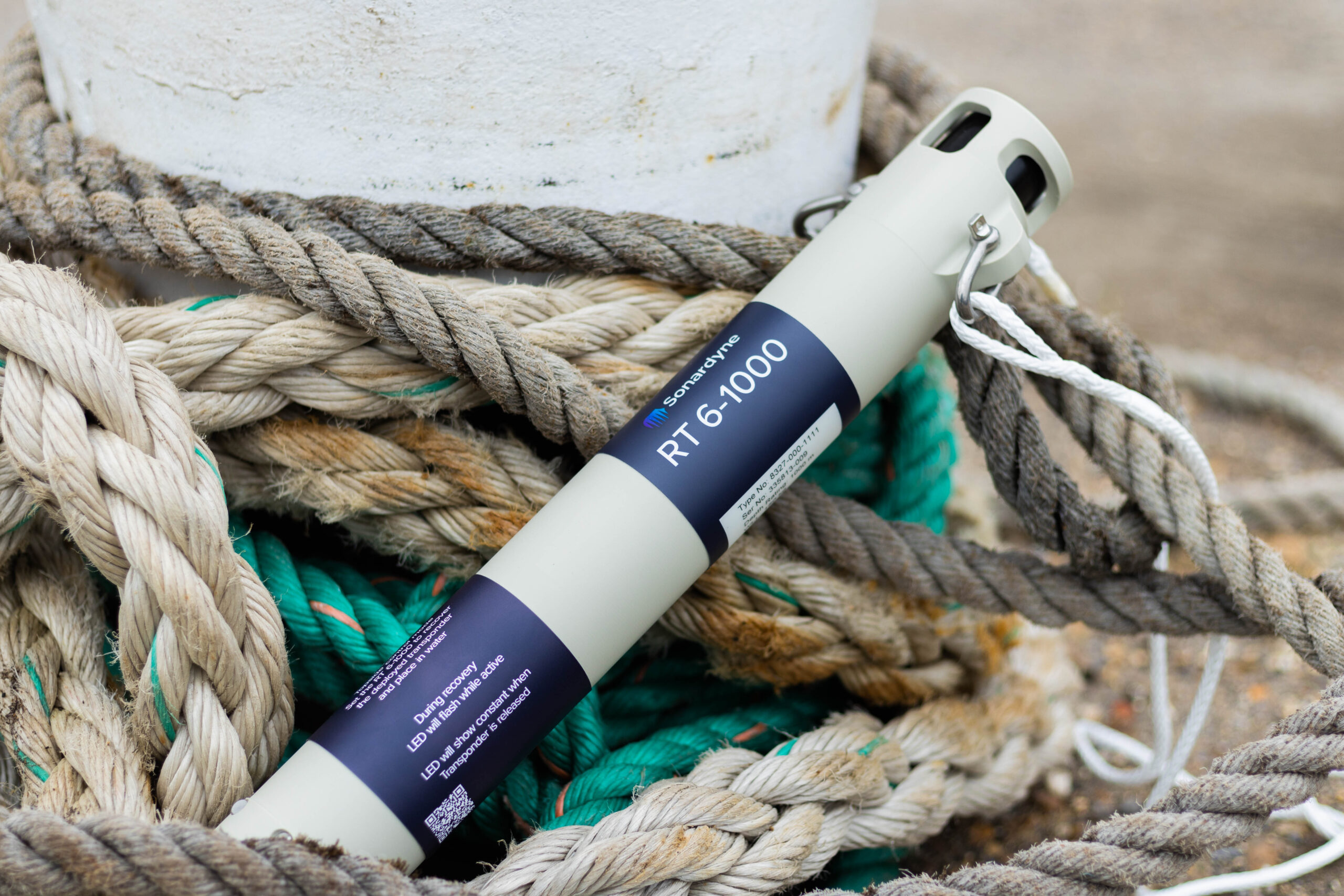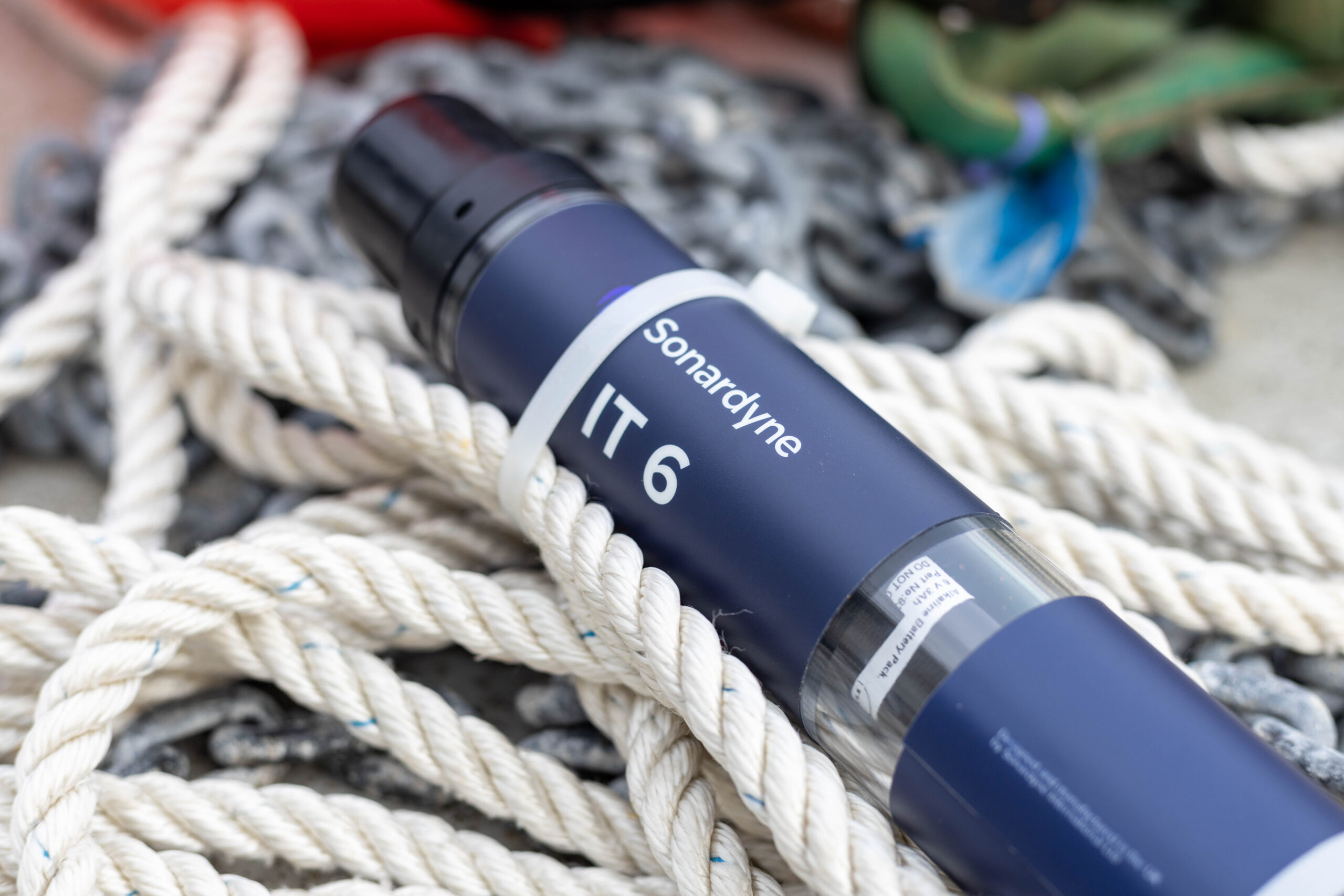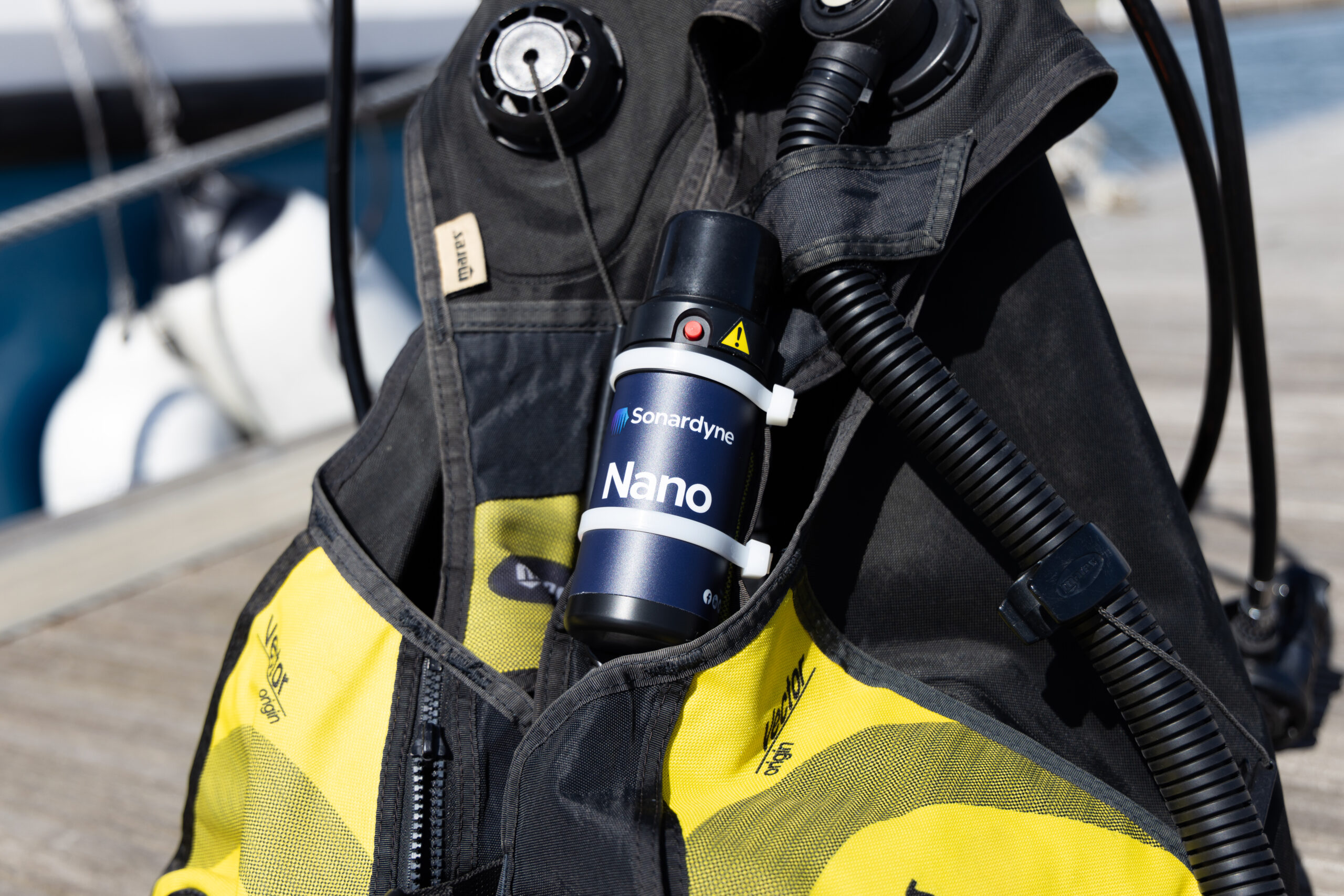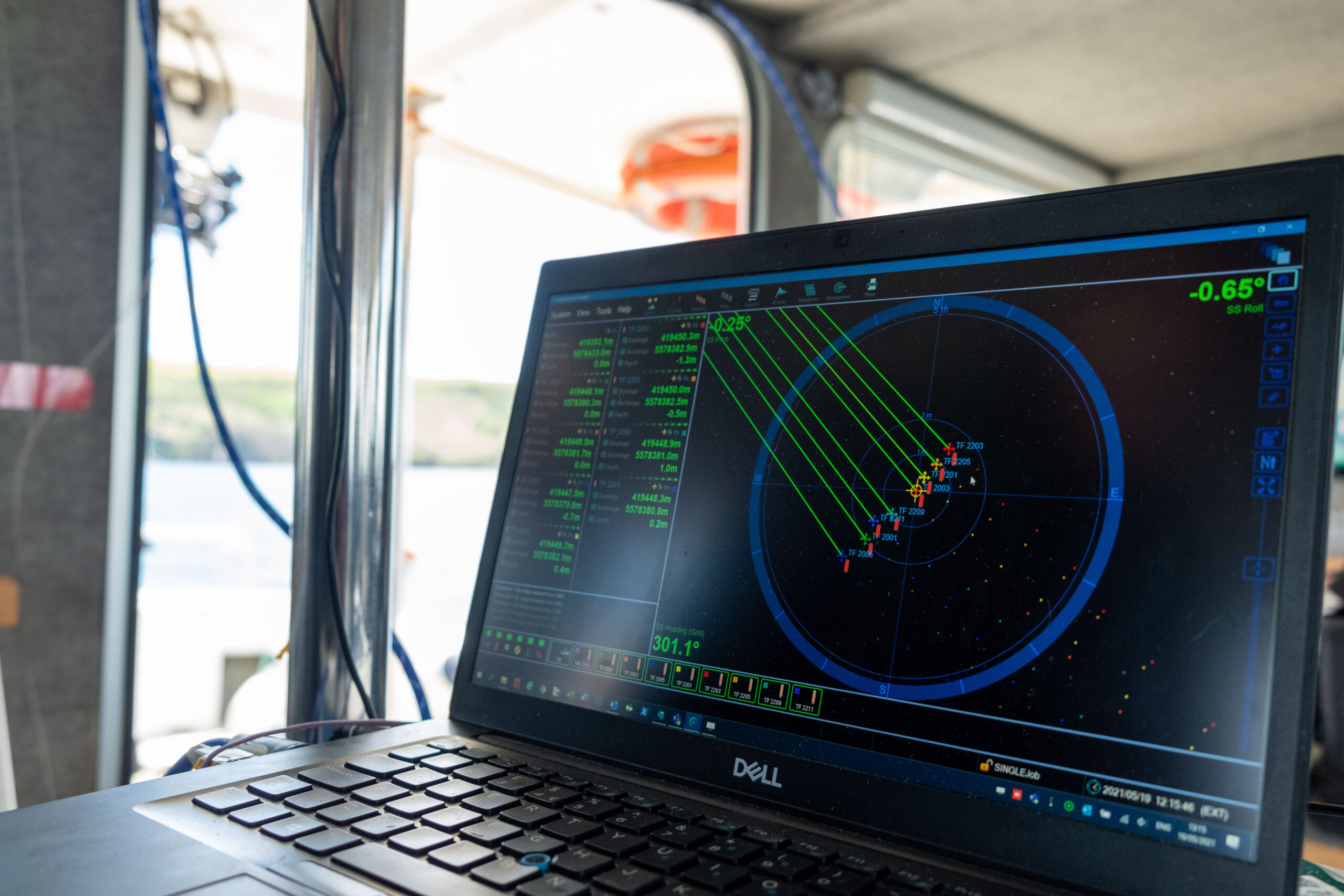Accelerate your operations with our compact powerhouse
Key benefits
Saves you time and money: pre-calibrated for immediate deployment, eliminating setup delays.
Enhanced accuracy: delivers unparalleled precision through a combined acoustic transceiver and AHRS.
Versatility: ideal for a variety of applications, including subsea structure installation, pipeline positioning and USV operations.
Compact design: up to 20% shorter and 19 kg lighter than previous versions. It’s perfect for use in space-constrained environments such as on over-the-side poles and pipelay vessel stingers.
Optimised performance: seamless integration with Ranger 2 for superior tracking accuracy.
Experience the difference
Gyro USBL is more than just a tool – it's a game-changer. Whether you're in energy, defence, or science, our advanced technology will elevate your operations with:
- Faster deployment on vessels of opportunity or from a pipelay vessel’s stinger.
- Reliable and accurate target tracking for enhanced mission success.
- Expanded exploration capabilities with extended range and precision.
How it works
Combining our cutting-edge 6G acoustic transceiver with a high-performance AHRS, Gyro USBL eliminates the lever arm offsets, pole bending and ship flexing errors common in traditional USBL systems. Its compact, corrosion-resistant design ensures durability in any marine environment.
Upgrade your operations today
Discover how Gyro USBL can revolutionise your subsea projects. Contact us to learn more about this groundbreaking technology.
Performance
• Calibration free offering rapid mobilisation
• 7000 tested to better than 0.07% of slant range 1 DRMS
• Pitch and roll accuracy 0.01°
• Heave accuracy (real time) 5 cm or 5% (whichever the greater)
Design
• Works with Ranger 2 USBL and Marksman LUSBL systems
• 439 x 225 mm (5000 variant); 508 x 310 mm (7000 variant)
• 9 to 19 kg weight saving in air; 15 to 40% lighter than previous models
• Aluminium-bronze and plastic construction. ROHS compliant
• Calibration free offering rapid mobilisation
Acoustic and AHRS
• Heading accuracy 0.1° for ‘plus’ variant
• 7000 expected system slant range accuracy 1 DRMS (20 dB) 0.04°
• Pitch and roll accuracy 0.01°
• Heave accuracy (real time) 5 cm or 5% (whichever the greater
Ownership
• What’s in the box: Gyro USBL and manual
• Warranty: 1 year return to Sonardyne service centre
• ITAR Controlled: No
• UK Export License: required; US Export License: covered under de minimis
Specifications
| Feature | Gyro USBL 5000 Type 8084-0425 & Gyro USBL 5000+ Type 8084-0455 | Gyro USBL 7000 Type 8084-0427 & Gyro USBL 7000+ Type 8084-0457 | |
|---|---|---|---|
| Operational Frequency | MF (20–34 kHz) | MF (20–34 kHz) | |
| Transceiver Performance |
Operating Range | Up to 7,000 m | Up to 7,000 m |
| Acoustic Coverage | Up to ± 90° | Up to ±90° optimised for deepwater (dependant on frequency of operation) | |
| Range Accuracy | Better than 15 mm | Better than 15 mm | |
| Expected System Slant Range Accuracy 1 drms (20 dB) |
0.07% | 0.04% | |
| Transmit Source Level (dB re 1 µPa @ 1 m) | 200 dB | 200 dB | |
| Tone Equivalent Energy (TEE) | 206 dB | 206 dB | |
| Heading | Accuracy Plus Variant | 0.1° secant latitude | 0.1° secant latitude |
| Accuracy Standard Variant | 0.2° secant latitude | 0.2° secant latitude | |
| Settle Time | <5 minutes in dynamic conditions | <5 minutes in dynamic conditions | |
| Pitch & Roll (Accuracy) | 0.01° | 0.01° | |
| Heave | Range | ±99 m | ±99 m |
| Accuracy (Real Time) | 5 cm or 5% (whichever the greater) | 5 cm or 5% (whichever the greater) | |
| Electrical | +48 V dc maximum 160 W | +48 V dc maximum 160 W | |
| Connector | AGP-2716 | AGP-2716 | |
| Communication | RS485, baud rate switchable, Ethernet 100 Mbps | RS485, baud rate switchable, Ethernet 100 Mbps | |
| Operating Temperature | -5 to 40°C | -5 to 40°C | |
| Storage Temperature | -20 to 45°C | -20 to 45°C | |
| Dimensions (Length x Diameter) | 439 x 225 mm | 508 x 310 mm | |
| Weight in Air/Water | 35.7/21.6 kg | 55.9/35.3 kg | |
| Note: The absolute accuracy of the system is dependent upon the beacon source level, vessel noise, water depth, mechanical rigidity of the transceiver deployment machine, SV knowledge and proper calibration of the total system using CASIUS |
Frequently asked questions
STP files
Software and firmware
Top tips
Datasheets
Manuals and quick start guides
Technical bulletin
Why Fetch is perfect for your operations
Think of Fetch as your underwater data hub. We work with you to integrate your chosen sensors, creating a reliable gateway to your subsea data that you can access remotely whenever needed.
Your advanced seabed geodesy projects demand precision and reliability. We’ve developed Fetch to deliver both, through seamless integration with our Ranger 2 system for efficient data collection.
We understand your commitment to reducing operational costs and environmental impact. Fetch helps you achieve both through long-term deployment capabilities and remote data harvesting, minimising vessel time and emissions.
Fetch your subsea data
Fetch is a long-life subsea sensor logging node with a battery life option of up to 10 years that enables data to be wirelessly extracted via its integrated high speed acoustic modem. We’ve designed every aspect of Fetch to support your underwater monitoring needs, from its high-capacity battery packs to its compatibility with our Ultra-Short BaseLine (USBL) positioning systems. Our team brings decades of experience in subsea technology to help you achieve reliable, long-term monitoring success.
An innovative free-fall deployment system ensures your Fetch lands upright every time, saving you valuable vessel time and cost.
Your Fetch can be configured with an array of different sensors to suit your monitoring applications. Standard sensors include high accuracy pressure, temperature and sound velocity as well as inclination. Other sensors can be integrated internally or externally as required.
Smart power management means the subsea sensor logging nodes only activate when needed, maximising battery life. Data captured by the active nodes is time-stamped and stored on an SD memory card ready for retrieval,
You can configure your sampling regime before deployment and update it in-situ via the acoustic modem which is also used to recover the data to the surface. The 9,000 bits per second modem transfer rate enables data to be extracted in minimal vessel time so reducing your operational costs.
When you’re ready to retrieve your Fetch, a simple acoustic command brings it safely to the surface under its own buoyancy ready for collection.
Specifications
| Feature | Type 8306-3873 | |
|---|---|---|
| Depth Rating | 3,000 or 6,000 m | |
| Operating Frequency | MF (20–34 kHz) | |
| Transducer Beam Shape | Directional | |
| Transmit Source Level (dB re 1 µPa @ 1 m) | 190-202 dB (4 levels) | |
| Receive Sensitivity (dB re 1 µPa) | 90-120 dB (7 levels) | |
| Battery Life (Capacity) | 5 years typical (10 years option) (dependent on sensors and sampling interval (180 Ah)) |
|
| Mechanical Construction | Glass sphere, galvanised stand and duplex stainless steel guards and connectors |
|
| Operating Temperature | -5 to +35°C | |
| Storage Temperature | With Batteries | 0 to +30°C |
| Without Batteries | -5 to +35°C | |
| Weight in Air/Water1 | Fetch | 40/10 kg (upthrust buoyancy) |
| Stand | 60/52 kg | |
| Sensors and Options | ||
| Temperature (±0.1°C) | Optional | |
| Tilt Switch (±30–45°) | Standard | |
| Paroscientific DigiQuartz Pressure Sensor (±0.01%) 1,350 m, 2,000 m, 4,130 m, 6,800 m |
Optional | |
| Strain Gauge Pressure Sensor (±0.1%) | Standard | |
| High Precision Strain Gauge (±0.01%) Keller or Presens | Optional | |
| Sound Velocity Sensor ±0.02 m/s Accuracy Under Calibration Conditions |
Optional | |
| High Accuracy Inclinometer Range: ±90°, Accuracy: ±0.05° over 0 – ±15°; ±0.2° over 0 – ±45° |
Optional | |
| Release Mechanism (Screw-off) | Standard | |
| Connector Type | Impulse MCIL-8-MP | |
Software and firmware
Datasheets
Manuals and quick start guides
Performance
• 3,000 or 6,000 m depth rated
• Vessel, USV or AUV data harvesting options
• Anti-trawl fame option available
• High capacity primary lithium battery pack – up to 10 year deployment life
Design
• Integrated modem with data rates ranging from 100 to 9000 bps
• Customisable sensor payloads
• Glass sphere, titanium parts (except duplex s/steel guard), polypropylene shell
• Easy to set up with configuration and sampling period programmable via telemetry link
Acoustic
• Integrated modem with data rates ranging from 100 to 9000 bps
• 500 Unique addresses, ideal for large array deployments
• Sonardyne Wideband1, 2, 2+ and HPR 400 USBL mode compatible
Set-up
• Warranty: 1-year return to Sonardyne service centre
• ITAR Controlled: No
• UK Export License: Not required
Why Fetch AZA is perfect for your operations
Your Fetch AZA system offers a comprehensive solution transforming your ocean monitoring operations across multiple applications, including environmental surveys, seabed deformation monitoring, and low-cost in-situ ocean surveillance. Unlike traditional pressure sensors, which suffer from drift over time, the Fetch AZA technology autonomously recalibrates in-situ.
A unique control system periodically cycles the pressure sensor from ambient seabed pressure to near-zero, enabling comparison to a highly accurate low-pressure reference sensor for calibration. The reference sensor is never subjected to ambient pressure and is accurate to changes of less than a millibar, or about 1cm of head of water.
The sensors are low power, allowing for long endurance deployments, and provide time-stamped data, which is often critical to your commercial or scientific objectives. With their in-built data storage and high-speed modem capacity, they can support your data collection and harvesting using a wide range of other Sonardyne and third-party sensors (High precision temperature and sound velocity as well as inclination) and are compatible with any Sonardyne 6G equipment, including Ultra-Short BaseLine (USBL) systems and modems.
For science
These capabilities have created an instrument that revolutionises seabed measurements, across ocean science and the commercial sectors. Scientists can now undertake measurements, critical to understanding tectonic processes, at a resolution they’ve never been able to achieve before.
Scottish Association for Marine Science (SAMS) research using Fetch AZA
For business
In the commercial sphere, Fetch AZA meets upstream production companies’ long-term goals of measuring 1 cm/year of vertical movement across their energy fields. These fine-scale measurements provide a powerful tool for proactive reservoir management throughout their lifecycle. This is a key enabler for maximising economic recovery.
Its remote capabilities represent a significant operational advantage, as data can be retrieved using Uncrewed Surface Vessels (USVs) from over-the-horizon locations, eliminating the need for expensive crewed vessels and reducing your costs, personnel risks and environmental impact.
This combination of remote operation, sustained accuracy, and precise repeatability makes the Fetch AZA an ideal choice if you are seeking a reliable, cost-effective ocean monitoring solution.
Performance
• Self-calibrating pressure sensor
• 3,000 m and 6,000 m depth rated versions
• MF and LMF operating frequency options
• Up to 10 year battery life
Design
• Neutral buoyancy in water for easy recovery
• Anti trawl frame option available
• Glass sphere, duplex s/steel guard, PVC shell, titanium ports construction
General
• Well suited for USV data harvesting
• Can be configured with a wide range of sensors
• Different deployment and recovery options provide flexibility for your operations
Support
• Work side-by-side with our Projects Group from concept to deployment
• Work with our experienced team about our USV data harvesting service
• 24-hour support, whenever and wherever you are in the world
• Systems are manufactured and tested before delivery at our world-class in-house facilities
Specifications
| Feature | Type 8306 | |
|---|---|---|
| Depth Rating | 3,000 m | |
| Operating Frequency | MF (20–34 kHz) | |
| Transducer Beam Shape | Directional/omni-directional | |
| Transmit Source Level (dB re 1 µPa @ 1 m) | 190–202/187–196 dB | |
| Receive Sensitivity (dB re 1 µPa) | <85 dB | |
| Communications | Acoustic modem & Bluetooth wireless | |
| Battery Life (Lithium) | 10 years typical, (504 Ah) (dependent on sensors and sampling interval) | |
| Mechanical Construction | Glass sphere, duplex s/steel guard, PVC shell and titanium ports | |
| Operating Temperature | -5 to +35°C | |
| Storage Temperature | With Batteries | 0 to +30°C |
| Without Batteries | -5 to +35°C | |
| Mass | With Stand | 145 kg |
| Without Stand | 62 kg | |
| Weight in Water | With Stand | 830 N |
| Without Stand | 25 N (negative buoyancy) | |
| Sensors and Options | ||
| AZA In-situ Self-Calibration Mechanism | Standard | |
| High Precision Temperature Sensor (±0.015°C) | Standard | |
| Transfer Pressure Sensor | Quartz, (±0.01%) | Standard |
| 2nd Quartz | Option | |
| Ambient Pressure Sensor | Strain Gauge, (±0.01%) | Standard |
| Strain Gauge, (±0.19%) | Option | |
| Low-Range Pressure Sensor (Strain Gauge, 2 bar (±0.01%)) | Standard | |
| Sound Velocity Sensor ±0.02 m/s Accuracy Under Calibration Conditions |
Option | |
| MEMS Inclinometer (±1°) | Standard | |
| High Precision Inclinometer (±0.05°) | Option | |
| Acoustic Baseline Ranging1 | Option | |
| Release Mechanism (Screw-off) | Option | |
| Battery Disconnect Fob | Standard | |
| Stand/Mud Feet | Option |
Software and firmware
Datasheets
Manuals and quick start guides
Make time-critical decisions with near real-time data delivery
Analyse the structure of your velocity and backscatter intensity data in far finer detail than previously possible with our proprietary formats delivering up to ten times greater spatial resolution. Origin 600 delivers conventional PD0 data as standard, whilst logging the higher resolution data to further enhance your results. All data is recorded to the onboard storage unit with 1 TB capacity.
Reduce your risks and device retrieval costs with power-efficient electronics and a rechargeable internal battery which allows deployments of up to three months on a single charge. A dual battery option allows you to operate longer or more energy demanding deployments. External power can be supplied by PoE, allowing you to program and download data without a separate power supply.
Monitor waves, mean currents and turbulence using Origin 600’s five-beam configuration and sampling frequency of up to 4 Hz on all beams. Your Origin’s built-in acoustic modem enables you to remotely access the unit while it’s deployed using an accompanying topside modem (sold separately) and the Origin Topside PC software. This allows you to check battery and storage, inspect and upload data, reconfigure schedules and run quality control, all whilst your ADCP is on the seabed.
Add external sensors to your ADCP mounting frame, and fuse with your Origin data via the Edge processing software, to really get the most out of every single deployment. You can upload sensor apps via Origin Portal or Topside and the resulting data will be exported over the acoustic modem.
What is Edge?
Discover the key to your customised ADCP data…
A suite of intuitive software tools and the Sonardyne Edge computing environment allows you to get the most out of your Origin 600. The Origin Portal web UI lets you configure your ADCP in operational conditions, including modification of the sampling schedule. Reduce your operational risks by setting your schedules before deployment using the Origin Scheduler PC application. Two schedules can be run together, allowing dual monitoring tasks to be performed with a single device. File data can be inspected using the Origin Viewer software package.
Origin 600 is compatible with your standard mounting infrastructure, reducing your risk and cost for upgrading to this device. For a complete solution, we can provide a dedicated, rugged stand with space for dual redundant releases.
Why choose Origin 600 ADCP?
Origin 600 – Mid-range ADCP
Origin 600 – Mid-range ADCP
Five reasons to LOVE Origin 600 ADCP
Five reasons to LOVE Origin 600 ADCP
Origin 600 for ocean science
Origin 600 for ocean science
Performance
• 625 kHz operating frequency
• 1.2 to 60 m profiling range
• 150 m operational depth rating
• Onboard data storage and processing, 1TB onboard storage as standard
Design
• All-in-one design
• Compact and easy to install from small vessels
• Dual battery and external power options
• Internal rechargeable battery allows for deployments of 3 months
Expanded functionality
ADCP data can be supplemented by and Edge-fused with data from external sensors so you can really get the most out of a single device deployment and the data generated. Optional seabed stand with integrated Sonardyne acoustic release for recovery using Ranger family of USBL systems.
Remote control
The integrated acoustic modem enables actions with the ADCP already in the water, delivering in-field flexibility and data assurance. Deploy and forget; integrated MF frequency modem offers in-situ data recovery, remote re-configuration and survey QC.
Specifications
| Features | Type 8382 (-0457 single battery; -0427 dual battery) | |
|---|---|---|
| ADCP | Operating frequency | 625 kHz |
| Maximum profiling range | 60+ m (depending on water environment) | |
| Minimum cell size | 12 mm | |
| Minimum blanking distance | 0.6 m | |
| Velocity range (along beam) | Up to ±2 m/s or 3.75 m/s user selectable | |
| Velocity RMS | 0.5% of measured value | |
| Maximum number of cells | 2,500 | |
| Maximum ping rate | 4 Hz (5 beams) | |
| Beam width/ angle | ±1 degrees / 25 degrees | |
| Acoustic modem | Operating frequency | MF (20–34 kHz) |
| Typical operating range | 500 m | |
| Sensors | Temperature | -5° to 35°C |
| Heading accuracy/ resolution | ±1°/0.1° | |
| Pitch & roll accuracy/ resolution & range | ±1°/0.1° & ±90° (pitch), ±180° (roll) | |
| Pressure | ±0.05% full scale; inquire for options | |
| Communication and logging | Communications | RS232, Ethernet and acoustic modem |
| Internal logging | 1 TB internal memory | |
| Output | Output telegrams | PD0, A gram, and B gram; simultaneous output |
| Electrical | External power | 18-48 V power by external cable; PoE+, adapter includedPoE+; adapter included |
| Power | 15 mW (sleep), 600 mW (pinging), 3.5 W (fully active) | |
| Internal battery capacity | 55 Ah rechargeable (dual battery option available); charger included | |
| Internal battery recharge | 4 hours fast charge (8 hours for dual battery option) | |
| Full/ scheduled/ standby lifespan | 1 week/ 3 months/ 2 years | |
| Environmental | Depth rating | 300 m survivable/ 150 m operational |
| Operating/ storage temperature | -5 to 40°C/ -20 to 55°C | |
| Mechanical | Construction | Plastic |
| Connector type | Subconn: 8-way for power and comms; 6-way for fast-charge | |
| Dimensions (height x max diameter) | 308 x 290 mm (dual battery height 388 mm) | |
| Weight in air/ water | 19.2/ 7.2 kg (dual battery option 23.9/ 7.9 kg) | |
| Software | Origin Portal | Embedded Web UI for control & configuration |
| Origin Scheduler | Schedule planning & configuration tool | |
| Origin Viewer | File data inspection | |
| Origin Topside | Remote configuration & control over acoustic modem |
Frequently asked questions
What is an ADCP and how does it work?
What is the benefit of an internal rechargeable battery for Origin 600?
What is the Origin Scheduler?
Why access ADCP data remotely?
What is the beam configuration of Origin 600?
What are the topside options for Origin 600?
What are the benefits of an integrated acoustic modem?
What is Edge?
What are sidelobes?
What are my data retrieval options with Origin?
What are the operational parameters of Origin 600?
What is Edge SDK?
What are Edge apps and what apps are available?
How do I use the battery disconnect?
How do I upload an Edge app to my Origin ADCP?
How do I recharge my Origin 600 battery?
Does Origin’s internal compass require calibration?
Can I reconfigure my Origin ADCP once deployed?
Can I integrate external sensors with Origin?
Software and firmware
Manuals and quick start guides
An innovative, robust acoustic design
Its pioneering satellite-dish design allows Origin 65 to match or exceed the acoustic performance of competing instruments. All while reducing your costs, prolonging battery life and increasing robustness to pressure cycling – a long-standing problem with low-frequency ADCPs.
Connect to the subsea world – integrated modem and PIES
Check or reprogramme your Origin 65 acoustically while on the seabed via its integrated acoustic modem. There’s no need to retrieve the device or interrupt your operation.
During your operations, Pressure Inverted Echosounder (PIES) measurements are interleaved with current profiles. This allows time-of-flight (TOF) and average sound velocity (SV) to be determined in-situ alongside the ADCP sampling and the data fused in PD0, delivering all data time-aligned in one place.
At the end of a deployment, the modem can be used to trigger the integrated acoustic release, allowing the device to float to the surface for retrieval.
Don't just settle for standard – introducing A-gram and B-gram data
Your Origin 65 delivers industry standard PD0 data format as default, but why settle for standard when you can have up to ten times greater resolution?
Origin generates our exclusive A-gram and B-gram formats. These offer up to ten times greater spatial resolution than PD0 and expose raw acoustic data which you can them interrogate for your specific operations.
Origin ADCP – Edge enabled
Edge lets you run data processing apps on Origin 65 which are customised to your exact needs. The system will produce the information you are most interested in, rather than bulky raw data that would normally be processed once the device is recovered. You can harvest this data as a file or as a live stream, either through a cabled connection or Origin 65’s integrated acoustic modem.
What is Edge? Discover the key to your customised ADCP data…
Edge computing gives you the ability to write your own apps for Origin via our Software Development Kit (Edge SDK) so that you can focus on the data you need from your operation. To get you started, some of the apps already available to download include simple background currents and quality metrics.
Data gathered by your Origin can also be processed to your requirements within Edge before it is harvested. This minimises both the amount of unnecessary data in each upload and the time taken for each harvest.
Learn more about Origin
Acoustics
• 62.5 kHz operating frequency
• Works with Ranger 2 USBL acoustics
• LMF frequency modem (14-19 kHz)
• Integrated acoustic release
Design
• Innovative acoustic design
• Onboard Edge processing
• Free fall deployment and recovery
• Supports post capture USV data harvesting
Performance
• 800 m profiling range
• Minimum cell size of 120 mm
• Innovative software ecosystem
• 4,500 m operational depth rating
Ownership
• Works with your existing Ranger 2 USBL system
• Warranty: 1 year return to Sonardyne service centre
• UK Export License: Yes
• Comes with Origin Scheduler, Viewer, Portal and Topside software as standard
Specifications
| Features | Type 8323 | |
|---|---|---|
| ADCP | Operating frequency | 62.5 kHz |
| Maximum profiling range | 800+ m (depending on water environment) | |
| Minimum cell size | 120 mm | |
| Minimum blanking distance | 12 m | |
| Velocity range (along beam) | Up to ±2 m/s or 3.75 m/s user selectable | |
| Velocity RMS | 0.5% of measured value | |
| Maximum number of cells | 2,500 | |
| Maximum ping rate | 1 Hz (4 beams) | |
| Beam width/angle | ±2 degrees / 20 degrees | |
| Acoustic modem | Operating frequency | LMF (14–19 kHz) |
| Typical operating range | 4,000 m | |
| Sensors | Temperature | -5° to 35°C |
| Heading accuracy/resolution | ±1°/0.1° | |
| Pitch and roll accuracy/resolution and range | ±1°/0.1° & ±90° (pitch), ±180° (roll) | |
| Pressure (high precision) | ±0.01%. 6,000 psi (4,100m depth) max. (higher rated options available on request) | |
| Communication and logging | Communications | RS232, Ethernet and acoustic modem |
| Internal logging | 1 TB internal memory | |
| Output | Output telegrams | PD0, A gram, B gram; simultaneous output |
| Electrical | External power | PoE+, adapter included |
| Power | 15 mW (sleep), 16 W (pinging), 20 W (fully active) | |
| Disposable battery capacity | 504 Ah dual battery; single and triple battery options available | |
| Full/scheduled/standby lifespan | 6 weeks/2 years/12 years | |
| Environmental | Depth rating | 4,500 m operational (deeper rated options available on request) |
| Operating/storage temperature | -5 to 40°C / -20 to 55°C | |
| Mechanical | Construction | Glass, steel and plastic |
| Connector type | Subconn: 8-way for power and comms | |
| Dimensions (height x max diameter) | 1110 mm x 1306 mm x 1324 mm | |
| Weight in air/water | 230/25 kg (excluding stand 170/-21 kg) | |
| Software | Origin Portal | Embedded Web UI for control and configuration |
| Origin Scheduler | Schedule planning and configuration tool | |
| Origin Viewer | File data inspection | |
| Origin Topside | Remote configuration and control over acoustic modem |
Frequently asked questions
What is an ADCP and how does it work?
What are the topside options for Origin 65?
What is the Origin Scheduler?
Why access ADCP data remotely?
What is the beam configuration of Origin 65?
What are the benefits of an integrated acoustic modem?
What is Edge?
What are sidelobes?
What are my data retrieval options with Origin?
What are the operational parameters of Origin 65?
What is Edge SDK?
What are Edge apps and what apps are available?
What is the purpose of Origin 65’s integrated PIES?
How does the Origin 65 acoustic design work?
How do I use the battery disconnect?
How do I upload an Edge app to my Origin ADCP?
Does Origin’s internal compass require calibration?
Can sediment deposits on Origin 65 reflectors affect acoustic performance?
Can I reconfigure my Origin ADCP once deployed?
Can I integrate external sensors with Origin?
Software and firmware
Manuals and quick start guides
Origin rewrites the story of your relationship with an ADCP
Our Origin family of ADCPs represent the latest in cutting edge underwater profiling technology. Able to analyse mean currents, waves and turbulence, and integrate with external sensors to provide pH levels, temperature and other data, Origin delivers comprehensive, reliable and timely data sets for your underwater operations.
With on-board Edge data processing and built-in acoustic modems, Origin can also process and deliver your data in almost real-time. This data is delivered in conventional PD0 format as standard but can be programmed to present results in our exclusive A-gram and B-gram formats, giving you up to 10 x greater spatial resolution detail.
Available in two models, Origin 65 for deep water profiling and Origin 600 for near and inshore waters, there is an Origin ADCP to suit your operation.
Why should you invest?
Origin ADCP family gives you the data you need, at a level of detail not available anywhere else on the market. Their ability to integrate with third party sensors unlocks additional capability and protects your investment.
Rechargeable batteries in Origin 600 give you rapid redeployment times as the unit can be recharged on the back deck whilst data is being downloaded before it’s returned to the seabed. Depending on your programme requirements, Origin 65 can operate for up to two years on the seabed before needing to replace its batteries.
Whichever size suits you best, they are both compatible with our Ranger 2 USBL equipment so you can harvest data and update your operation schedules mid-mission.
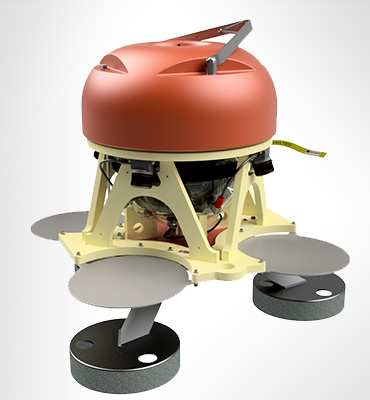
Origin 65
Origin 65 revolutionises what you can do with a deep water ADCP. It combines state-of-the-art acoustics, sensors, and data into one payload providing you with an unprecedented view of the deep. It’s a versatile, reliable and high performance ADCP with on-board Edge processing for data optimisation and an integrated modem for remote control and data access.
For the full picture of what your Origin 65 is capable of, please visit its dedicated product page.
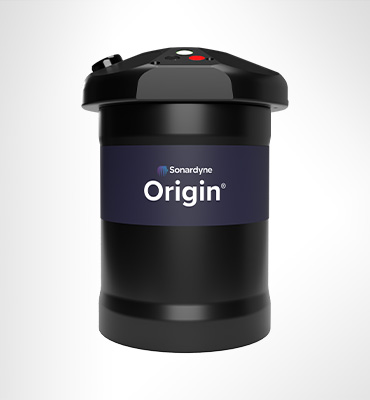
Origin 600
With a 50-metre current profiling range, on-board Edge data processing and an integrated acoustic modem, Origin 600 provides you with in-situ, high resolution measurements with on-demand data retrieval – reducing survey costs, risk and time. Choose between industry standard data formats, or our exclusive proprietary format offering up to ten times greater spatial resolution.
For the full picture of what your Origin 600 is capable of, please visit its dedicated product page.
Remote control
The integrated acoustic modem enables actions with the ADCP already in the water, delivering in-field flexibility and data assurance.
Reduced risk
Remote, safe and low-cost data: Edge customised and optimised data can be harvested acoustically with a small and efficient USV to reduce overall ship time, human intervention and associated risk.
Expanded functionality
ADCP data can be supplemented by and Edge-fused with data from external sensors so you can really get the most out of a single device deployment and the data generated.
Operational flexibility
It can support short-term and long-term current monitoring projects, using our Ranger 2 systems to harvest data for actionable insights during monitoring periods.
Go deeper, last longer and lift more with our family of RT 6 acoustic releases
Our RT 6s come in three popular depth ratings, 1,000 m, 3,000 m and 6,000 m as well as an HD model capable of operating at up to 7,000 m with loads of up to 2500kg. There’s a model to suit any of your offshore operations.
All of our RT 6 models are compatible with our Ranger 2 USBL. You can locate, operate and recover the releases quickly and simply with this globally used system, saving you time and the complexity of operating several systems at once.
Spend less time recovering and more time collecting data with up to 2.5 years battery life. We understand that your time is precious, so our RT 6 releases feature a minimum of 13 months battery life, depending on the model, meaning you spend less time recovering equipment and your assets spend more time in operation.
RT 6. Supporting your science and equipment deployments – which one is right for you?
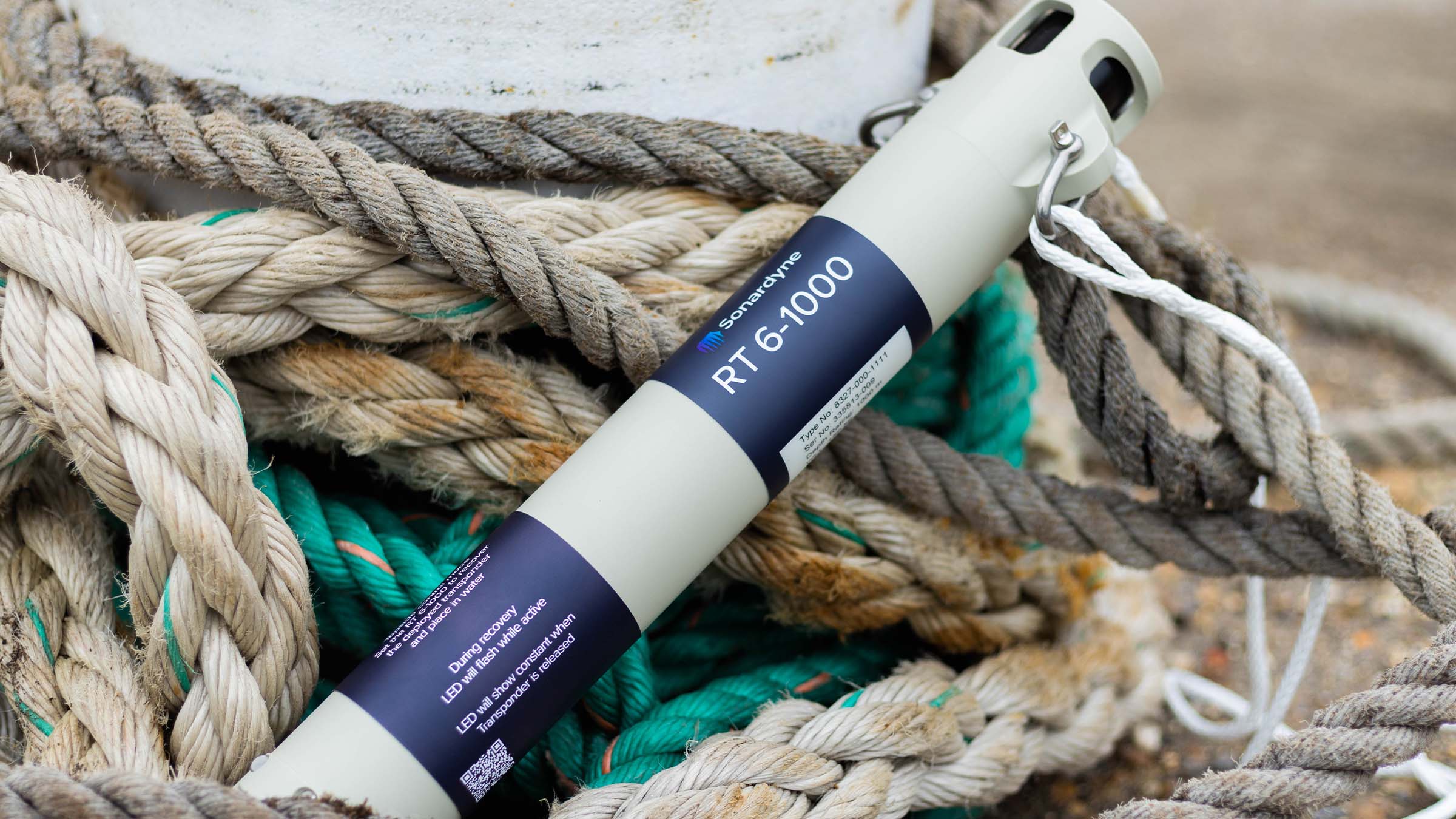
RT 6-1000
Deploy it. Track it. Locate it. Recover it. RT 6-1000 does it all. Our new entry-level acoustic release transponder has features that are far from entry-level. Such as 1,000 metre depth rating, battery life of over a year and release mechanism that won’t let you down. The perfect low-cost acoustic release for mooring environmental sensors. 1,000 metre depth rating, 18 months battery life, 125 kg WLL. Ranger 2 and Android app compatible.
Depth rating 1,000 m
Frequency MF
Working Load Limit 150 kg
Battery life >13 months
Topside Android App/Ranger 2/Dunker 6 Kit
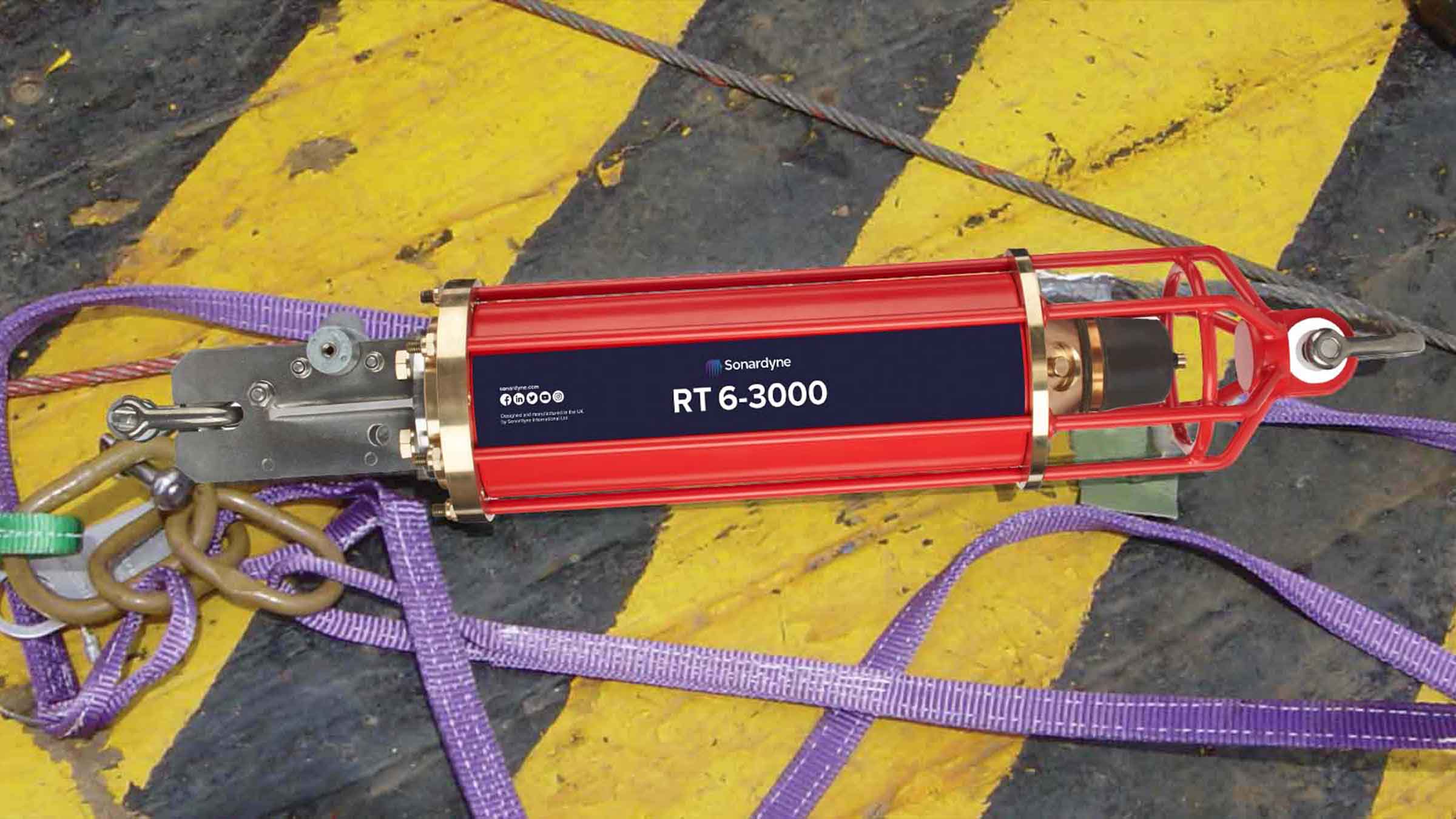
RT 6-3000
Deep water instrument mooring or structure installation; RT 6-3000 takes the hard work out of your deploying ocean sensors and heavy lifting. It features an impressive battery life of over 32 months and a depth rating of 3,000 m. Suitable for a wide range of sustained observation tasks spanning years of in-situ measurements. Depth rating to 6,000 metres and 1,275 kg WLL. Release with Ranger 2.
Depth rating 3,000/6,000 m
Frequency MF/LMF
Working load limit 1,275 kg
Battery life >32 months
Topside Deck Topside /Ranger 2 USBL
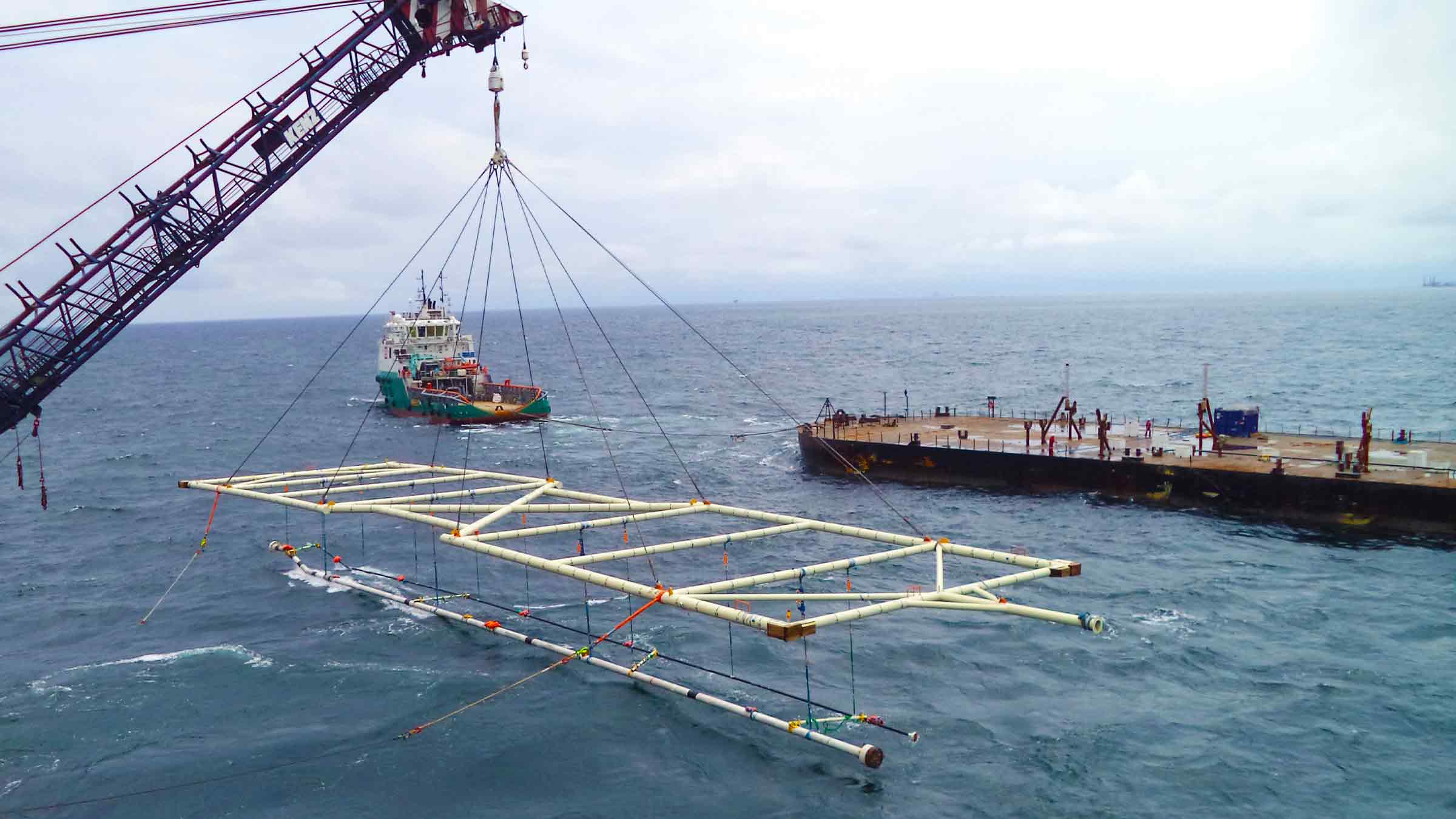
RT 6-6000
Release Transponder 6 (RT 6-6000) is a tough, reliable oceanographic release transponder designed for a deep water applications with energy, defence and science. Suitable for a wide range of sustained observation tasks spanning years of in-situ measurements. Depth rating to 6,000 metres and 1,275 kg WLL. Release with Ranger 2.
Depth rating 3,000/6,000 m
Frequency MF/LMF
Working load limit 1,275 kg
Battery life >32 months
Topside Deck Topside /Ranger 2 USBL
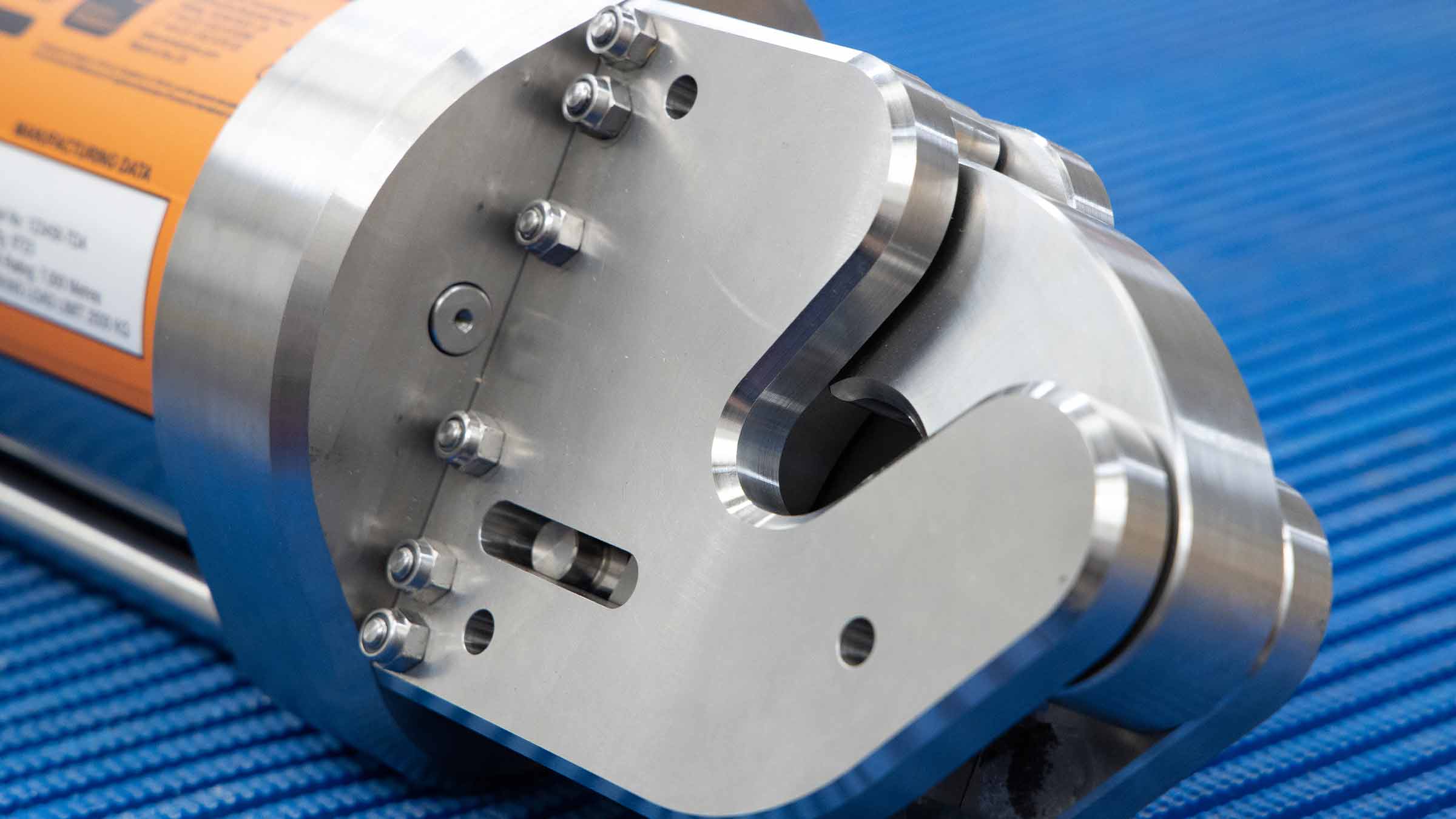
RT 6-HD
Release Transponder 6 Heavy Duty (RT 6-HD) is a tough, reliable, acoustic release transponder engineered with a Working Load Limit of 2,500 kg and fully compatible with LMF Ranger 2 USBL and LMF Deck Topside systems. A deep and heavy load-rated release to support applications from telecomms cable repair to structure installation. Track every moment with your vessel’s Ranger 2.
Depth rating 7,000 m
Frequency LMF
Working load limit 2,500 kg
Battery life >32 months
Topside Dunker kit/Ranger 2 USBL
Frequently asked questions
6G
Our 6th generation (6G) technology provides faster, secure and robust data communications from seabed to surface . This gives you speedier updates on the location of your assets and access to your vital data.
Wideband
Our wideband technology enables digital high-throughput data, range resolution and accuracy with low latency. Teamed with our 6G it gives you fast, reliable, accurate data over greater distances.
Robotics
Uncrewed, autonomous surface and underwater vehicles are increasingly used for coastal, deep sea and over-the-horizon operations, reducing costs, risks and carbon footprint. Thats why we have a dedicated “bolt on” pack for our Ranger 2 to enhance your robotics operations.
Dynamic positioning
We’ve been engineering high integrity position reference systems for dynamically positioned vessels since the early 1990s. Our USBL, LUSBL and SPRINT- INS products provide dynamic positioning solutions for a range of vessels and environments.
Overview
Dynamic Positioning Transponder 6 (DPT 6) supports Wideband 2 acoustic ranging and telemetry providing high accuracy positioning, robust performance in noisy and multi-path conditions and easy set-up and use.
With hundreds of channels, less interference to and from other acoustic systems and multi-user capability, Wideband 2 enables easier SIMOPS vessel capability. These features of the DPT 6 help de-risk subsea operations and save vessel time and cost.
At a glance
- Compatible with HPR systems
- Up to 7,000 m depth rating
- Advanced multi-user/multi-vessel capability
- Robust acoustic performance in noisy conditions
- Real-time diagnostics available on ranges to enable quality control
The DPT 6 is the standard length version and is based on the field proven mechanics of the previous version but with improvements to the end cap closure mechanisms. The design offers the perfect balance between size, acoustic output and battery life. Several depth ratings are available (3,000 m, 5,000 m and 7,000 m) all hard anodised aluminium alloy with protective polyurethane sleeve. Midi (shorter) and maxi (long endurance) options are also available. The DPT is fitted as standard with a highly reliable release mechanism to enable the unit to be deployed in a flotation collar and recovered to the surface without ROV intervention.
The DPT 6 is a midi-sized unit for deep water towfish tracking. Depth rated to 7,000 m, the unit is fitted with a high power super directional transducer. The DPTi 6 is fitted with internal inclinometers to accurately monitor riser angles (see separate datasheet). The unit can also be used with an external inclinometer unit to monitor BOP and flex joint angles.
Specifications table
| Feature | Type 8301-3111 | Type 8301-3113 | Type 8301-5213 | Type 8301-7213 | |
|---|---|---|---|---|---|
| Depth Rating | 3,000 m | 3,000 m | 5,000 m | 7,000 m | |
| Operating Frequency | MF (20–34 kHz) | MF (20–34 kHz) | MF (20–34 kHz) | MF (20–34 kHz) | |
| Transducer Beam Shape | Omni-directional | Directional | Directional | Directional | |
| Transmit Source Level (dB re 1 µPa @ 1 m) | 187–196 dB (4 levels) |
190–202 dB (4 levels) |
190–202 dB (4 levels) |
190–202 dB (4 levels) |
|
| Tone Equivalent Energy (TEE)1 | 193–202 dB | 196–208 dB | 196–208 dB | 196–208 dB | |
| Receive Sensitivity (dB re 1 µPa) | 90–120 dB (7 levels) |
80–120 dB (7 levels) |
80–120 dB (7 levels) |
80–120 dB (7 levels) |
|
| Ranging Precision | Better than 15 mm | Better than 15 mm | Better than 15 mm | Better than 15 mm | |
| Number of Unique Addresses Wideband 1 & 2 | >500 | >500 | >500 | >500 | |
| Battery Life (Listening) | Alkaline | 833 days | 833 days | 833 days | 833 days |
| Lithium | 1,390 days | 1,390 days | 1,390 days | 1,390 days | |
| Safe Working Load (4:1) (Release Mechanism) | 250 kg | 250 kg | 250 kg | 250 kg | |
| Dimensions (Maximum) (Length x Diameter) |
With Sensor Guard | 1,034 x 200 mm | 1,034 x 200 mm | 1,034 x 200 mm | 1,034 x 200 mm |
| Without Sensor Guard | 1,034 x 178 mm | n/a | n/a | n/a | |
| Weight in Air/Water2 | 23.8/11.8 kg | 27.0/14.0 kg | 29.0/15.0 kg | 33.3/18.8 kg | |
| Endcap Sensors and Options | |||||
| Temperature (±0.1°C) | Standard | Standard | Standard | Standard | |
| Tilt Switch (±30–45°) | Standard | Standard | Standard | Standard | |
| Strain Gauge Pressure Sensor (±0.1%) | Standard | Standard | Standard | Standard | |
| High Precision Strain Gauge (±0.01%) Presens or Keller |
Optional | Optional | Optional | Optional | |
| Paroscientific DigiQuartz Pressure Sensor 1,350 m, 2,000 m, 4,130 m, 6800 m (±0.01%) |
Optional | Optional | Optional | Optional | |
| Inclinometer (Tilt Sensor) Range ±90°, Accuracy: ±1° |
Standard | Standard | Standard | Standard | |
| High Accuracy Inclinometer Range: ±90°, Accuracy: ±0.05° over 0 – ±15°; ±0.2° over 0 – ±45° |
Optional | Optional | Optional | Optional | |
| Sound Velocity Sensor ±0.02 m/s Accuracy Under Calibration Conditions |
Optional | Optional | Optional | Optional | |
| Release Mechanism | Standard | Standard | Standard | Standard |
Frequently asked questions
Software and firmware
Software and control hardware
Technical bulletin
Overview
Acoustic release transponders are a vital piece of ocean equipment – relied upon by energy, defence and science users to moor valuable equipment strings for years at a time, and when commanded to do so, reliably return equipment and logged data to the surface.
Transponders need to be tough, reliable and easy to work with. RT 6-6000 meets these requirements.
Part of our new range of acoustic releases, RT 6-6000 combines the extensive mechanical design track record of our renowned ORTs and DORTs with the flexibility of our 6G platform, resulting in enhanced battery life and perhaps most significantly, compatibility with our Ranger 2 USBL family
With RT 6-6000, you can use your vessel’s Ranger 2 USBL to deploy, track, locate and command the instrument – removing the need for a separate topside unit. If you don’t have access to a Ranger 2 USBL, our rugged and lightweight Deck Topside with an over-the-side dunker is all you need to both configure and command RT 6-6000s.
At a glance
- Tested, loaded, deployed and released using Deck Topside
- Also works with Sonardyne Ranger 2 USBL to deploy, track and command in very deep water
- Highly reliable release mechanism design and thousands are in service globally
- Working Load Limit 1,275 kg (4:1)
- Depth rated to 6,000 m
- External battery disconnect to maximise battery life with no need to open unit
- Compact and rugged design
RT 6-6000s are most commonly used to anchor oceanographic moorings to the seabed. However, their compact size and compatibility with Ranger 2 makes them ideal for incorporation into instrument frames or lowered platforms to enable deployment of sub-system packages.
Standard features include a Working Load Limit of 1,275 kg (at 4:1) and a spring-assisted release mechanism. RT 6-6000 is compatible with our standard tandem and high-load release frames for scenarios requiring a higher WLL. Speak to us about your requirements as custom frames are also an option.
A battery disconnect fob is located on the transducer and uses an internal magnetic switch to electronically disconnect the battery when not in use. This means you do not have to open the unit to manually disconnect the battery, saving time and reducing the risk of incorrect re-assembly.
RT 6-6000s use the same trusted spring-assisted release mechanism that has been in service for many years and used on thousands of Sonardyne transponders globally.
Choice of topsides
You can use our rugged Deck Topside, or if you’ve got access to a Ranger 2 USBL system on your survey or research vessel, then you have everything you need to control your RT 6-6000.
Versatile
RT 6-6000 is more than just an acoustic release. It can be tracked with our Ranger 2 USBL making relocating and recovering it fast and simple.
High WLL
Use it with our Heavy-Duty Release Frames and significantly increase your Working Load Limit when deploying seabed structures.
Support
You can find a wide range of support articles for our family of acoustic release transponders on our knowledge base.
Specifications table
| Feature | Type 8321-6250 |
|---|---|
| Depth Rating | 6,000 m |
| Operating Frequency | LMF (14–19 kHz) |
| Transducer Beam Shape | Hemispherical |
| Transmit Source Level (dB re 1 µPa @ 1 m) | 188 dB |
| Tone Equivalent Energy (TEE) | 192 dB |
| Receive Threshold (dB re 1 µPa) | <90 dB |
| Working Load Limit (4:1) | 1,275 kg |
| Proof Load | 2,550 kg |
| Breaking Load | 5,100 kg |
| Maximum Safe Release Load | 1,700 kg |
| Battery Life (Alkaline) | >32 months active |
| Inclinometer Accuracy | ±5° |
| Surface Unit | Deck Topside, Ranger 2 USBL |
| Mechanical Construction | Aluminium bronze and duplex stainless steel |
| Operating Temperature | -5 to 40°C |
| Storage Temperature | -20 to 55°C |
| Dimensions (Length x Diameter | 700 x 142 mm (27.5 x 5.6”) |
| Weight in Air/Water | 20/15 kg |
| Standards | CE Marked to EN-60945, EN-61010 |
| Options | Deep Water Deck Kit (Deck Topside) – 602-0180 |
| Heavy Duty Release Frames (7.5 T, 15 T and 25 T) |
Frequently asked questions
What is an Acoustic Release and how does it work?
Why isn’t serial communication available using the iWand in RT 6 Dunker Mode?
6G Terminal Lite Range Test
What is the safe working load for different RT 6 products?
What should I use instead of an ORT and DORT?
How to correctly set an RT 6-6000 release mechanism
How to change the battery on an RT 6-3000 or RT 6000
How to load the release on an RT 6-3000 and RT 6-6000
Which RT 6 is correct for my operations?
How to release an RT 6 acoustic release transponder using Ranger 2
How long can an RT 6-3000 and RT-6 6000 be deployed for?
Deployment
STP files
Software and control hardware
Manuals and quick start guides
Did you know?
RT 6-6000 can be used with our Ranger 2 USBL family or Deck Topside
Overview
Marker 6 is a low cost acoustic positioning transponder for when a compact design and deep operating capability are important operational factors. It enables targets such as underwater structures, vehicles or instrumentation packages to be marked, located or tracked using a Ranger 2 USBL system – Micro, Mini or Standard.
The instrument incorporates Near Field Communications (NFC) allowing for fast set-up. Its acoustic address can be selected from over 200 unique identities meaning that multiple Marker 6s can be deployed in close proximity to each other without causing interference.
At a glance
- Mark and relocate underwater equipment, vehicles and points of interest
- Compatible with all Ranger 2 USBL systems
- Depth rated up to 7,000 m
- More than 30 months’ listening life (lithium battery option)
- Over 200 unique acoustic addresses
On the backdeck, the address can be quickly programmed into each transponder using a suitable NFC enabled handset (including an NFC enabled Android™ handset with the Sonardyne NFC App) or a dedicated HF Radio Frequency Identification (RFID) reader.
Sonardyne Wideband signal encoding reduces the interference both on and by adjacent Sonardyne and other acoustic positioning systems.
The NFC link provides the ability to enter Marker 6 into a storage mode when not in use, thereby significantly increasing the overall battery endurance.
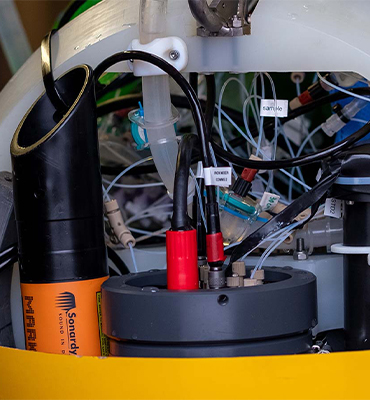
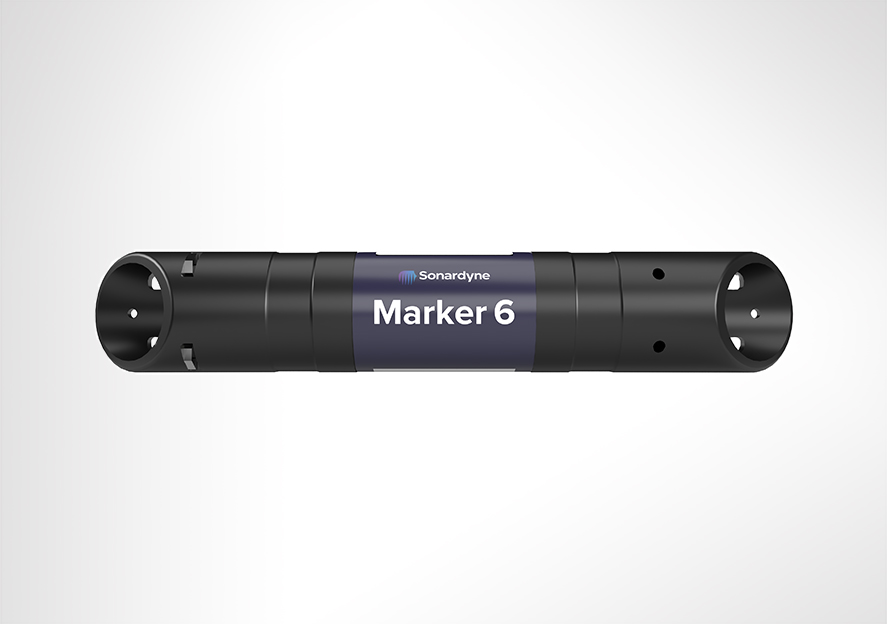
Specifications table
| Feature | Type 8326-4311 | Type 8326-7511 | |
|---|---|---|---|
| Depth Rating | 4,000 m | 7,000 m | |
| Operating Frequency | MF (20–34 kHz) | MF (20–34 kHz) | |
| Transducer Beam Shape | Omni-directional ±130º | Omni-directional ±130º | |
| Transmit Source Level (re 1 µPa @1 m) | 187 dB | 187 dB | |
| Inclinometer Sensor | ±5° | ±5° | |
| Battery Life (Continuously Listening) | Alkaline | >9.5 months | >9.5 months |
| Lithium | >30 months | >30 months | |
| Storage Mode (Battery Disconnect via NFC) | Alkaline | 5 years (battery self-discharge limited) | 5 years (battery self-discharge limited) |
| Lithium | >10 years (battery self-discharge limited) | >10 years (battery self-discharge limited) | |
| Operating Temperature Range | -5 to 40°C | -5 to 40°C | |
| Storage Temperature Range | -20 to 55°C | -20 to 55°C | |
| Mechanical Construction | Outer Housing | Polypropylene | Polypropylene |
| Inner Housing | Duplex stainless steel | Titanium grade 5 | |
| Dimensions (Length x Diameter) | 383.0 x 63.0 mm (15.1 x 2.5”) | 383.0 x 63.0 mm (15.1 x 2.5”) | |
| Weight in Air/Water | 2.0/1.3 kg | 1.5/0.7 kg |
Frequently asked questions
Software and control hardware
Datasheets
Manuals and quick start guides
Did you know?
Marker 6 is compatible with all of our Ranger 2 USBL systems
